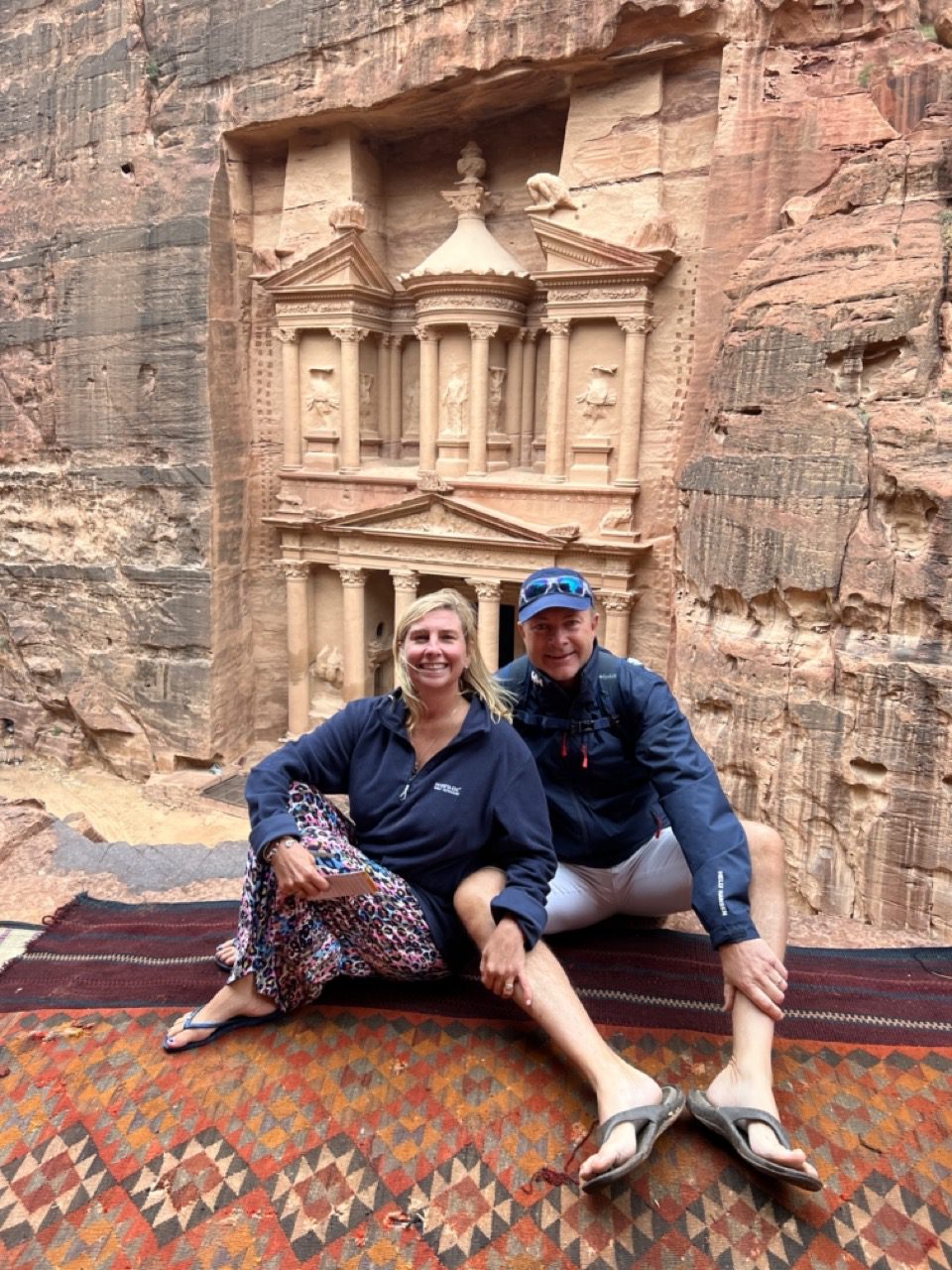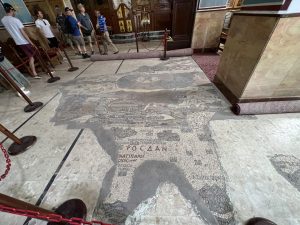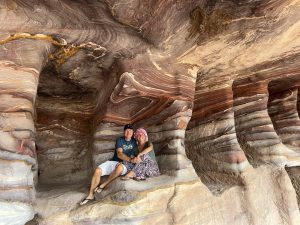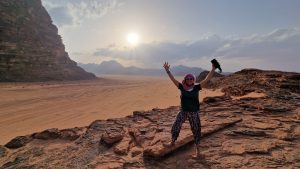🙂 WOW! SPECTACULAR! BUCKET LIST! FANTASTIC! WONDERFUL! Great Guide: Ahmed
🙁 Nothing at all – simply wonderful.
We were up and rearing to go at 05h45 and arrived at the ticket office at opening time. Our guide, Ahmed met us and we headed in to see our 2nd to last Wonder of the New World – it was simply breathtaking and far exceeded our expectations! It was cold and drzzling!
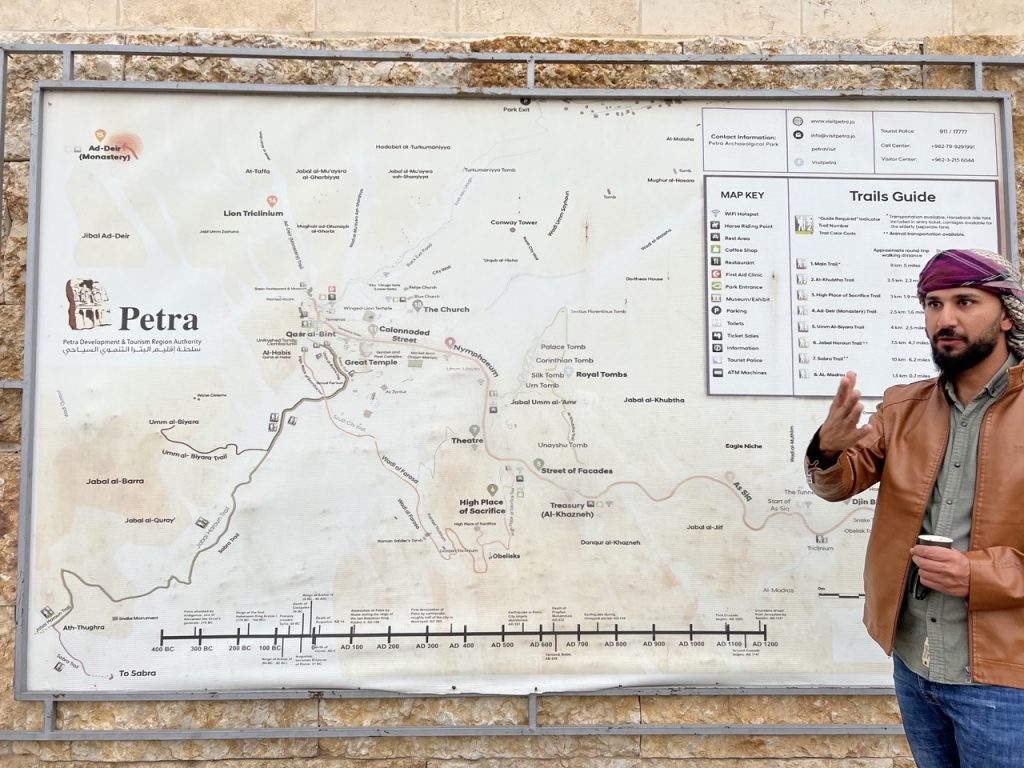
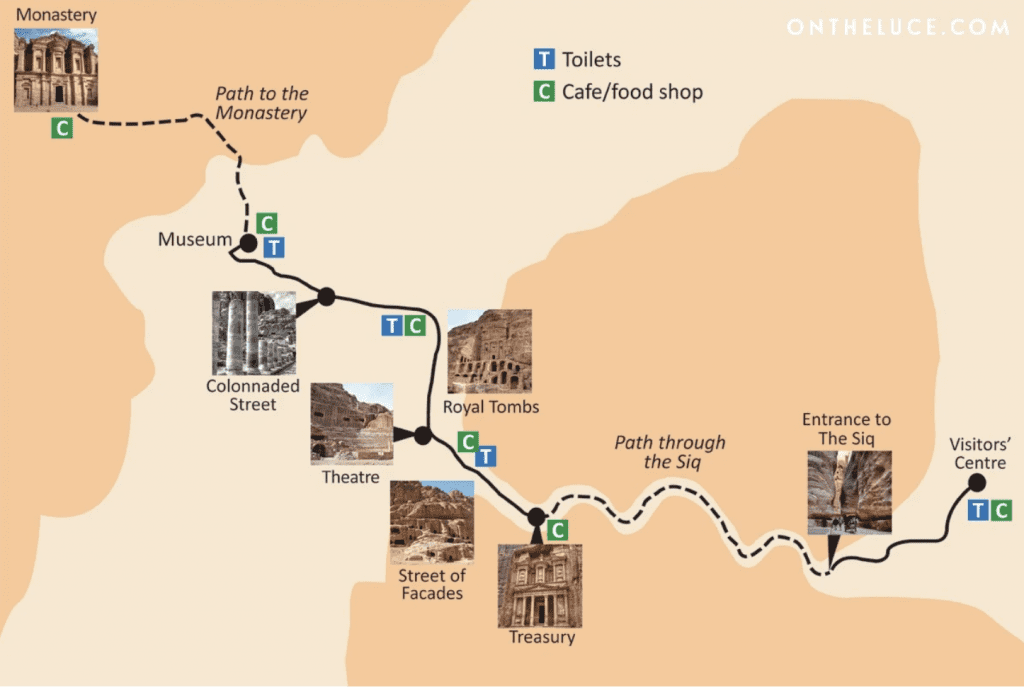
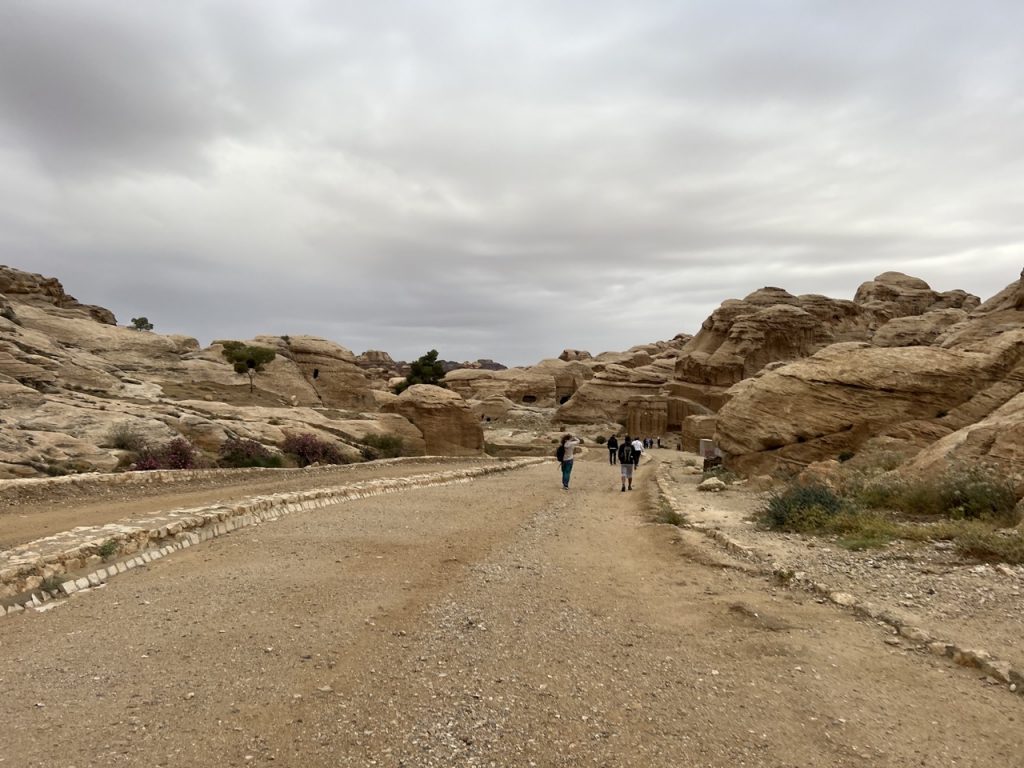
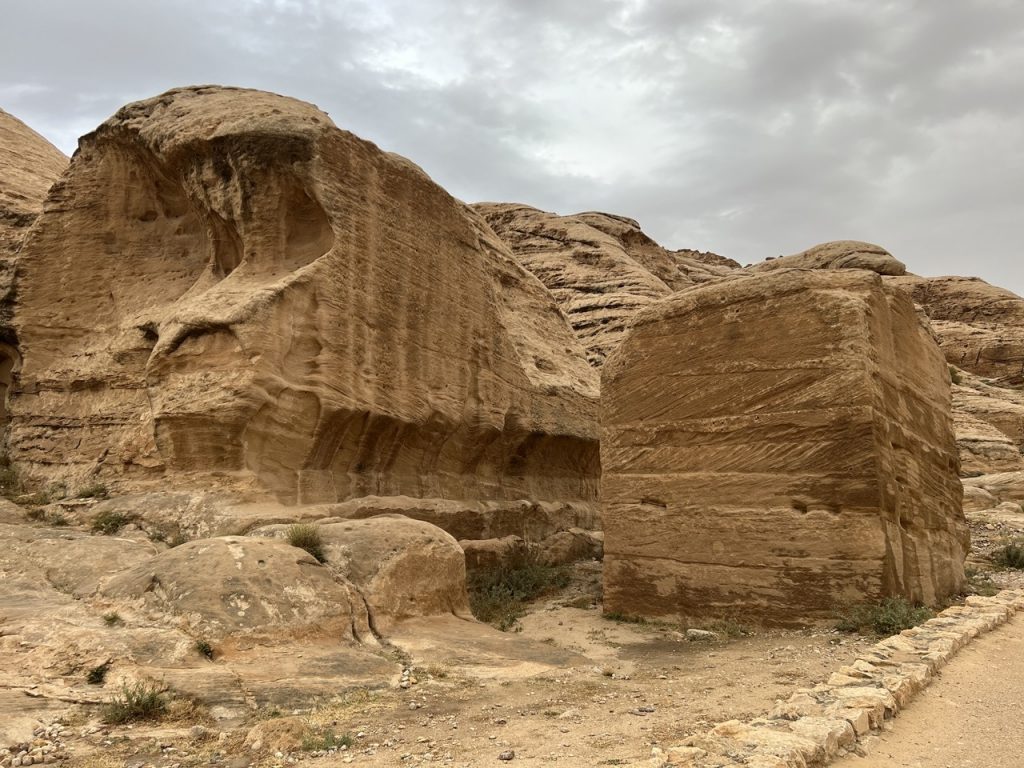
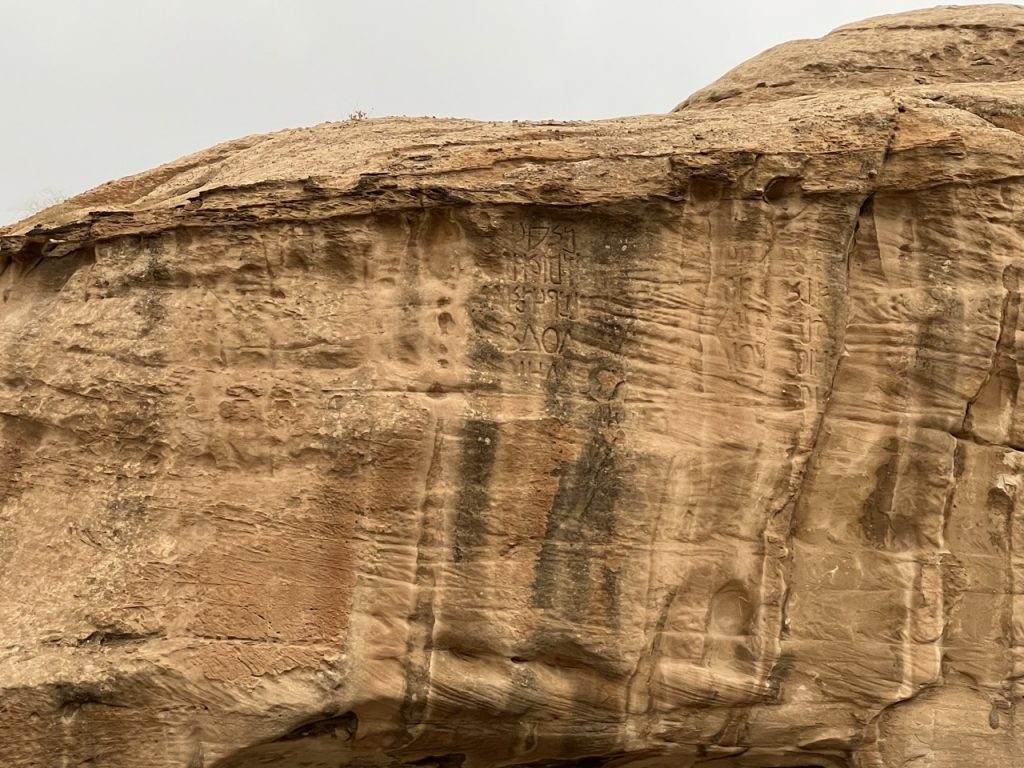
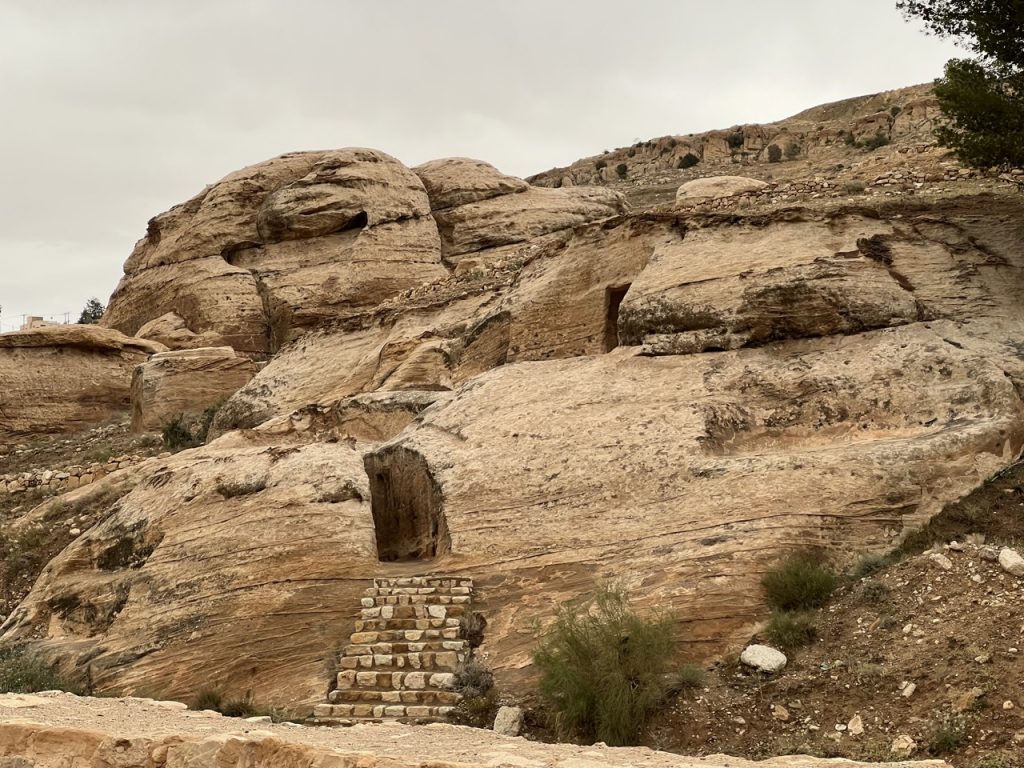
We started down the The Main Trail which is one of Petra’s easiest and most popular trails. It starts at the Visitor Center and takes around two hours to complete. The Main Trail goes through Petra’s main sights, including the Al Siq, Treasury, and Street of Facades. From its ending point, many other trailheads branch out, leading you to other attractions within the site. The Siq, a dramatic passage between two towering rock walls, is the most common way to enter Petra. The entire area is a mass of caves which were once tombs.
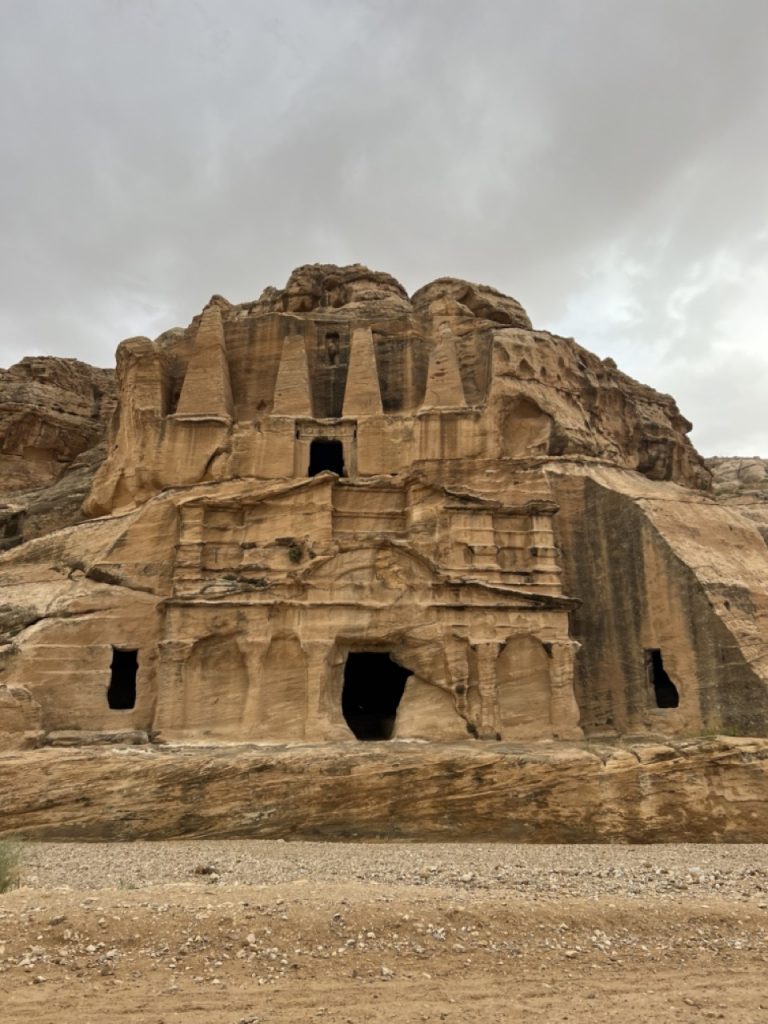
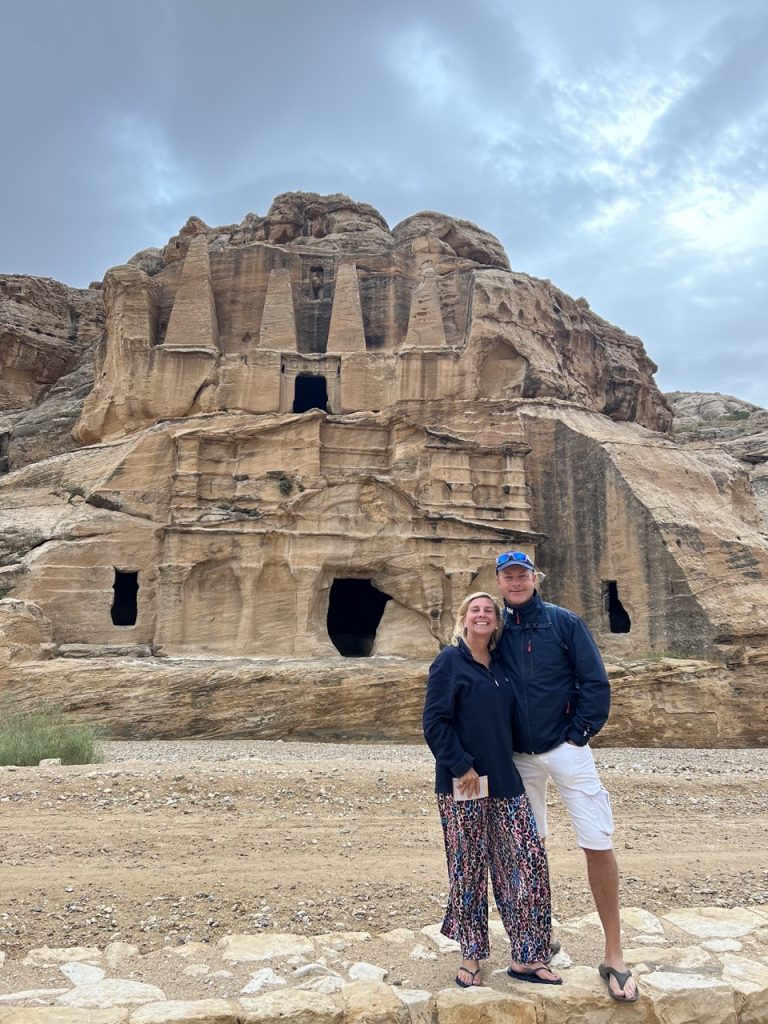
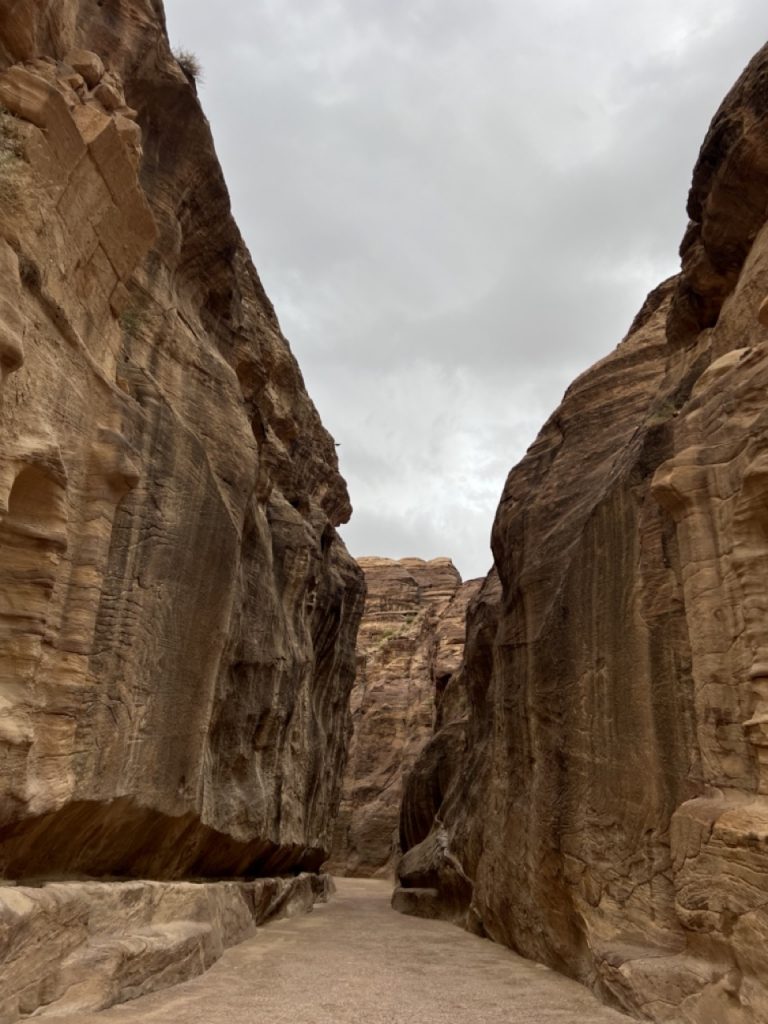
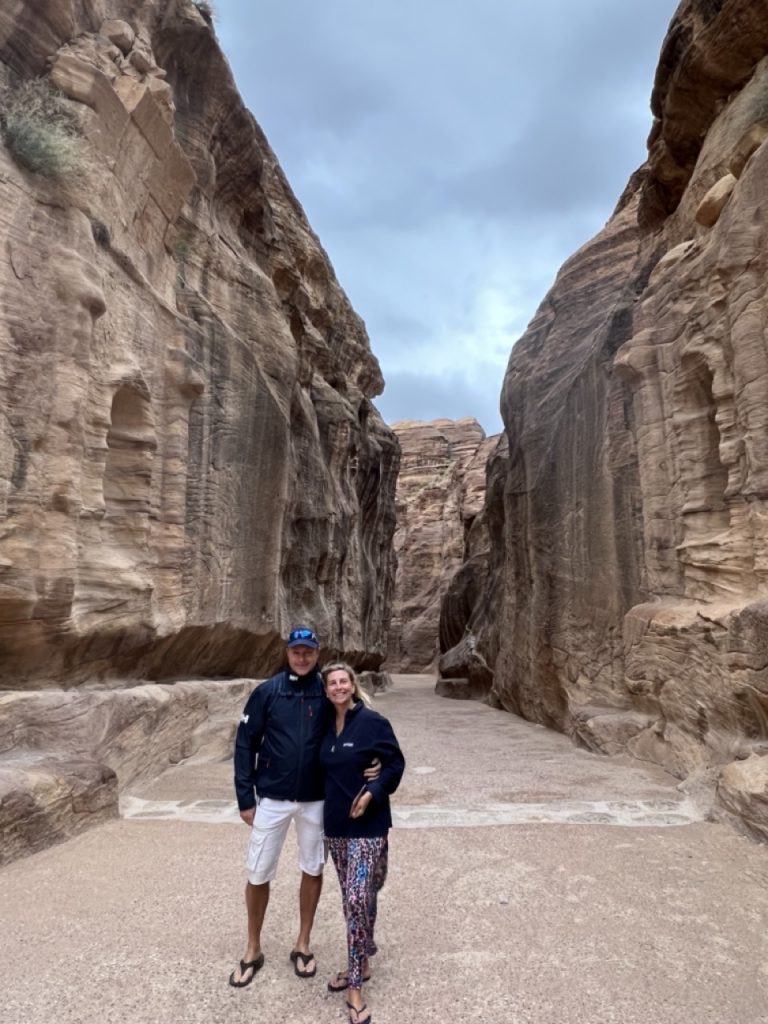
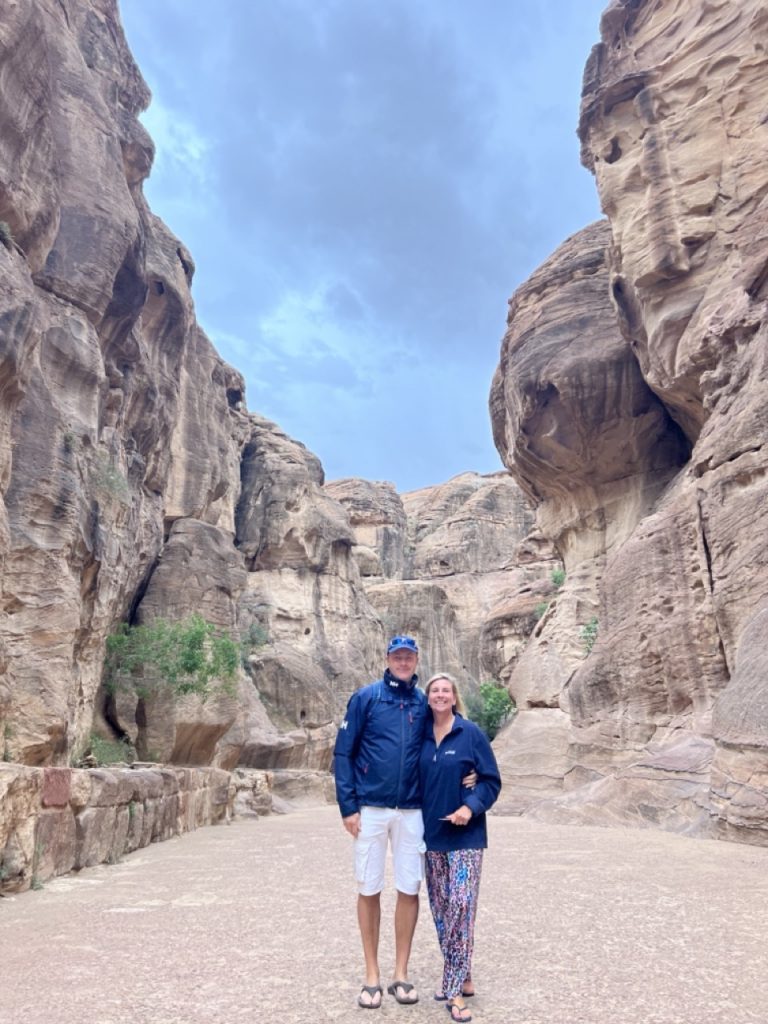
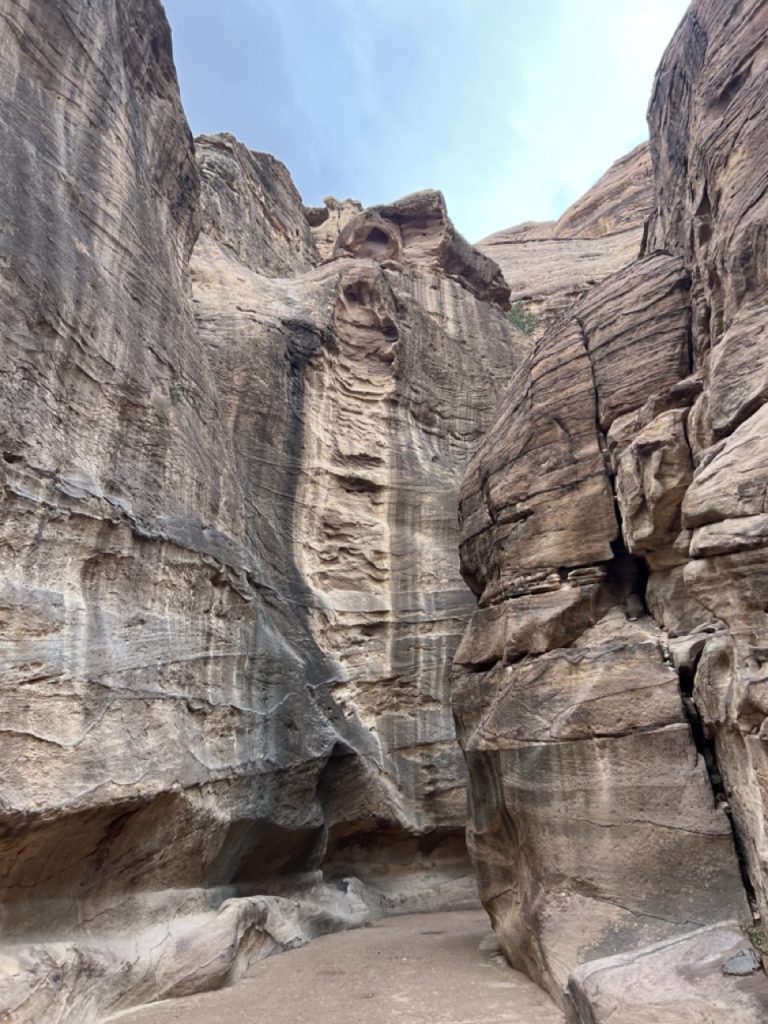
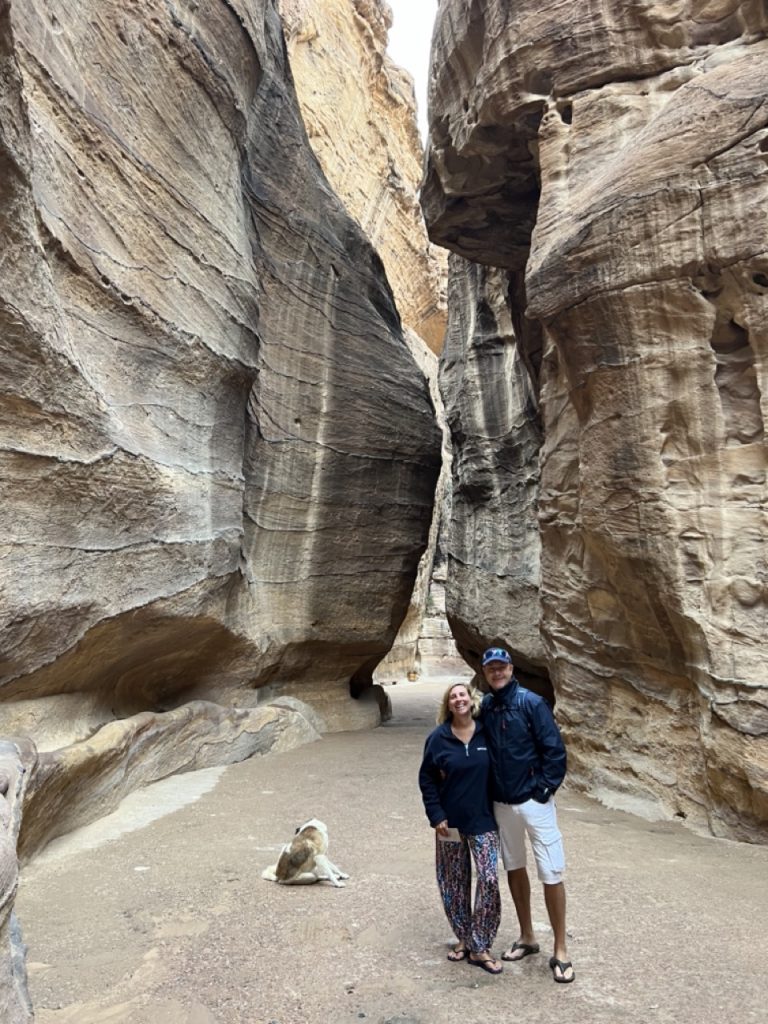
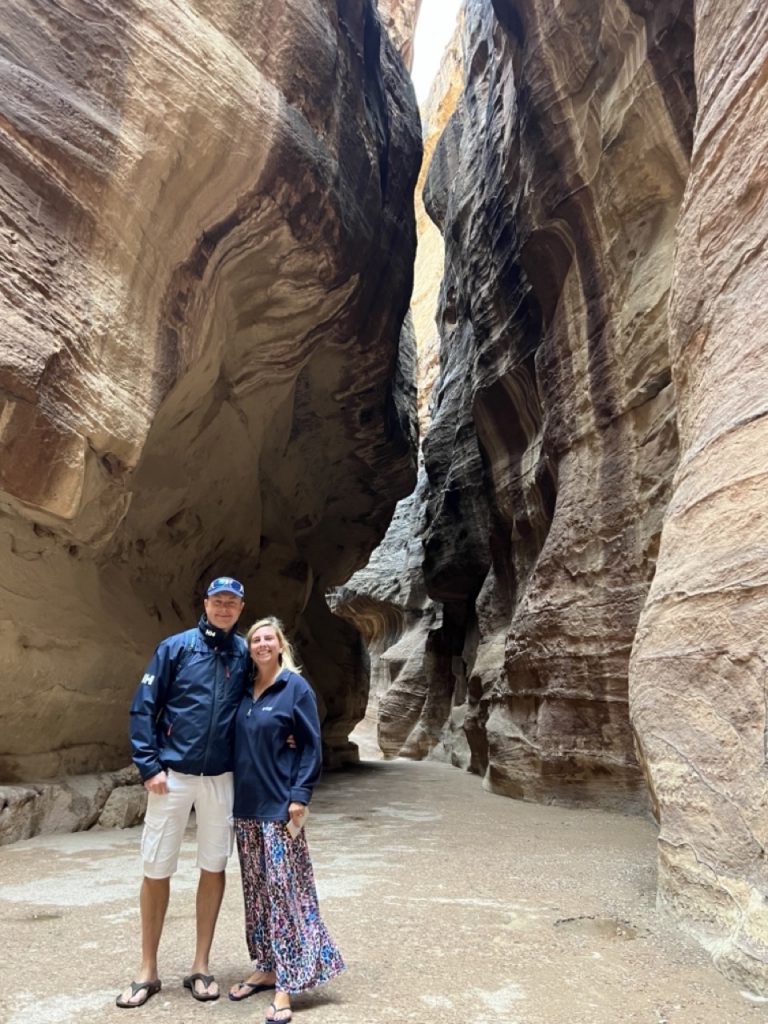
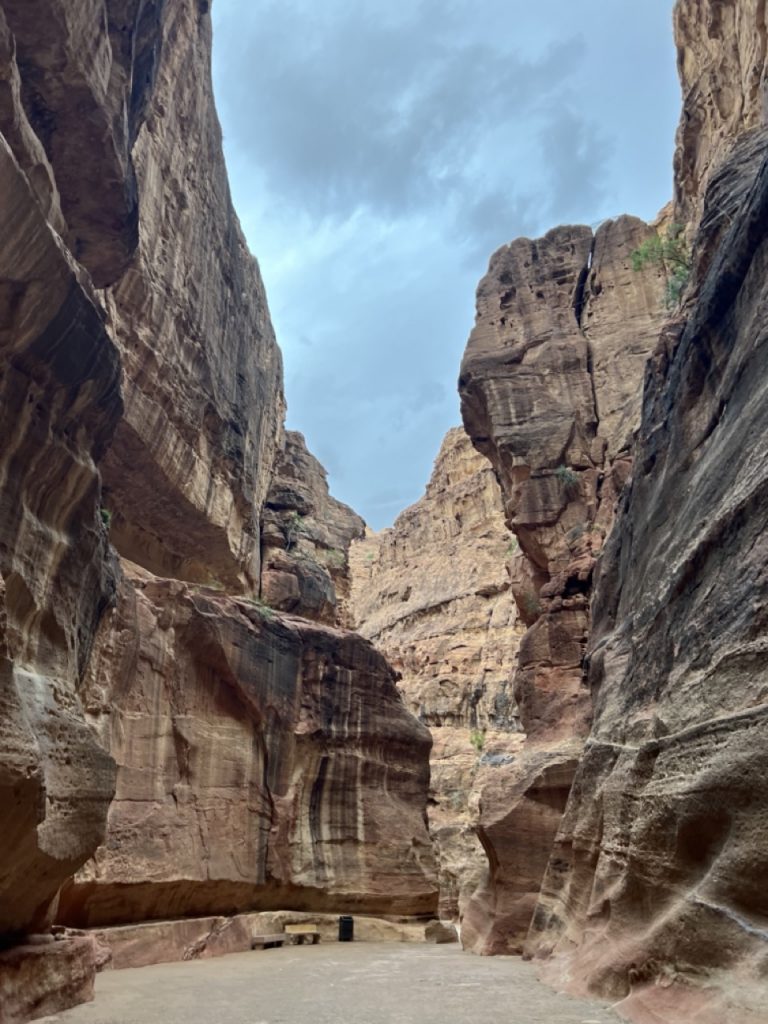
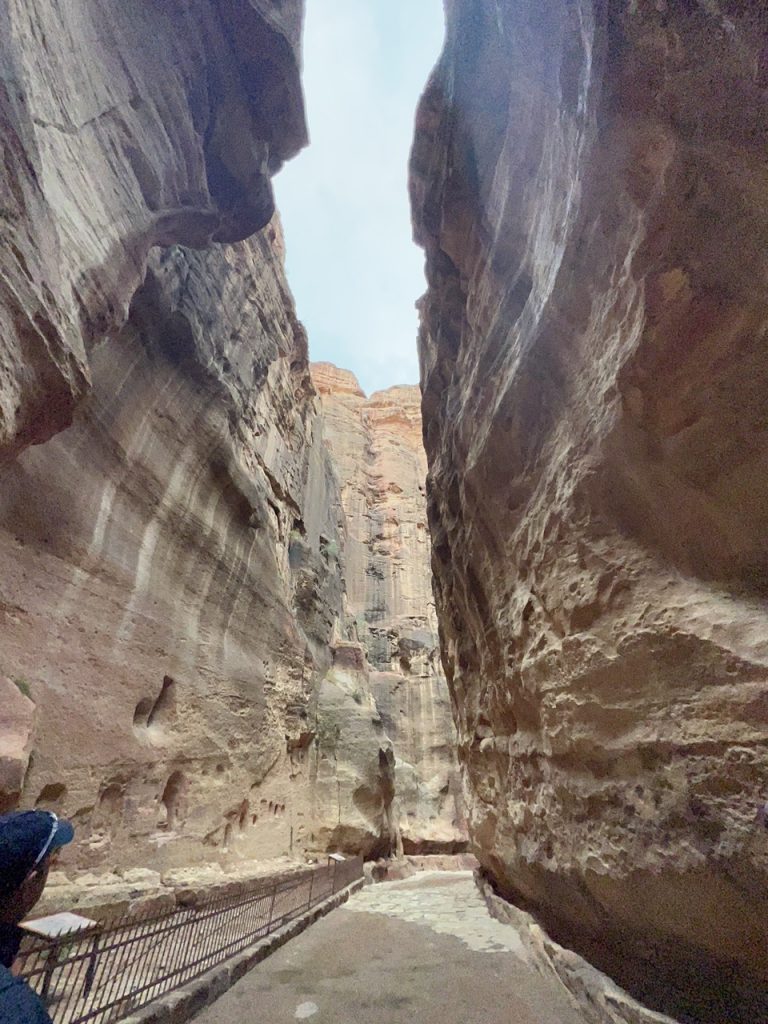
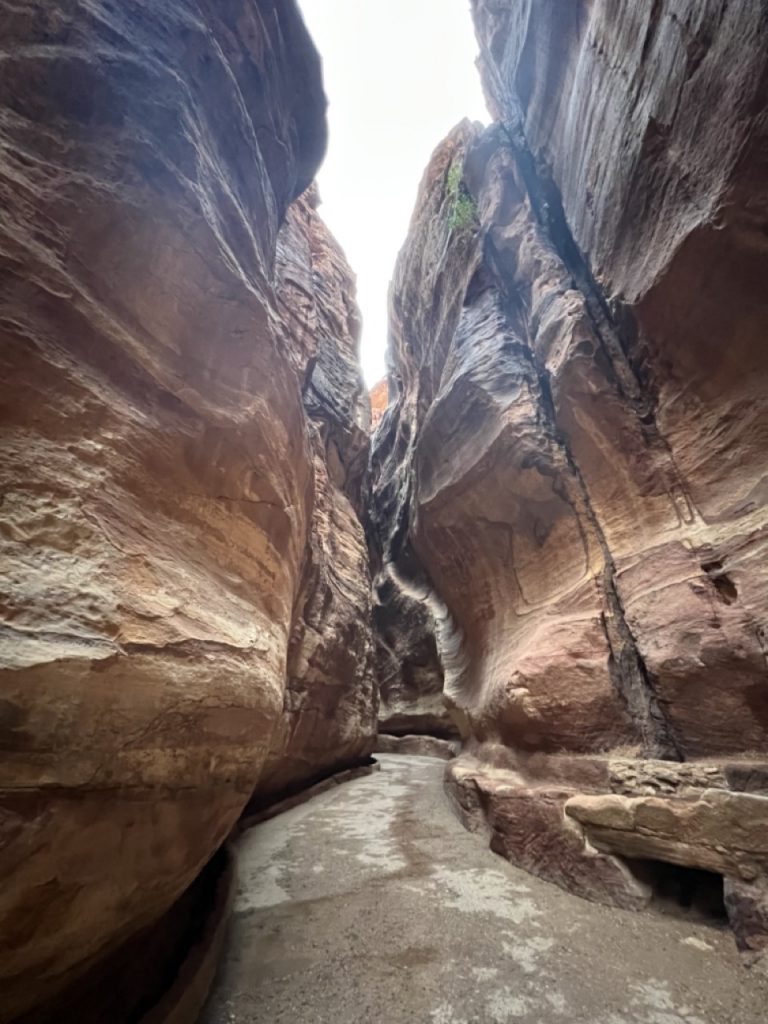
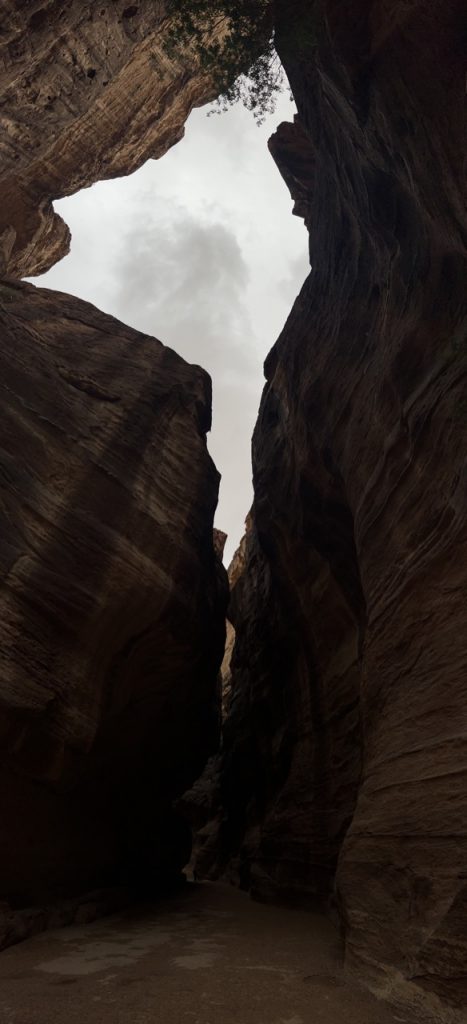
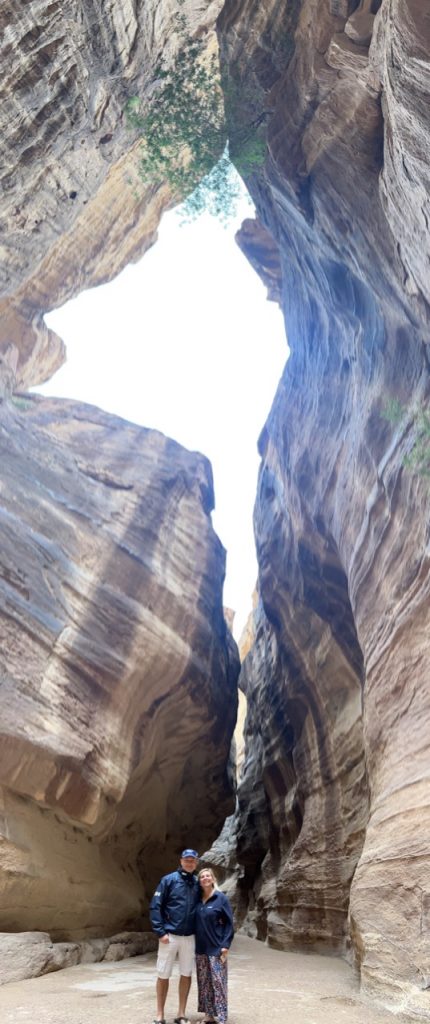
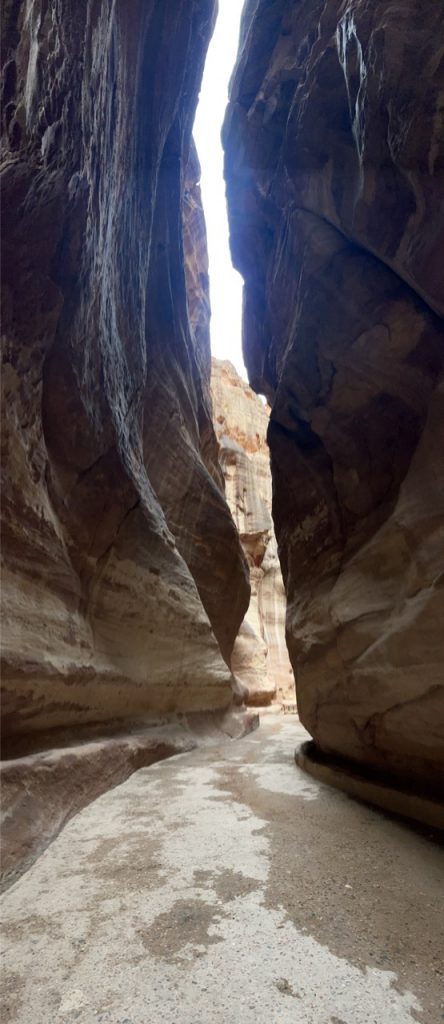
There is an old carving of part of a Bedouin and his camel.
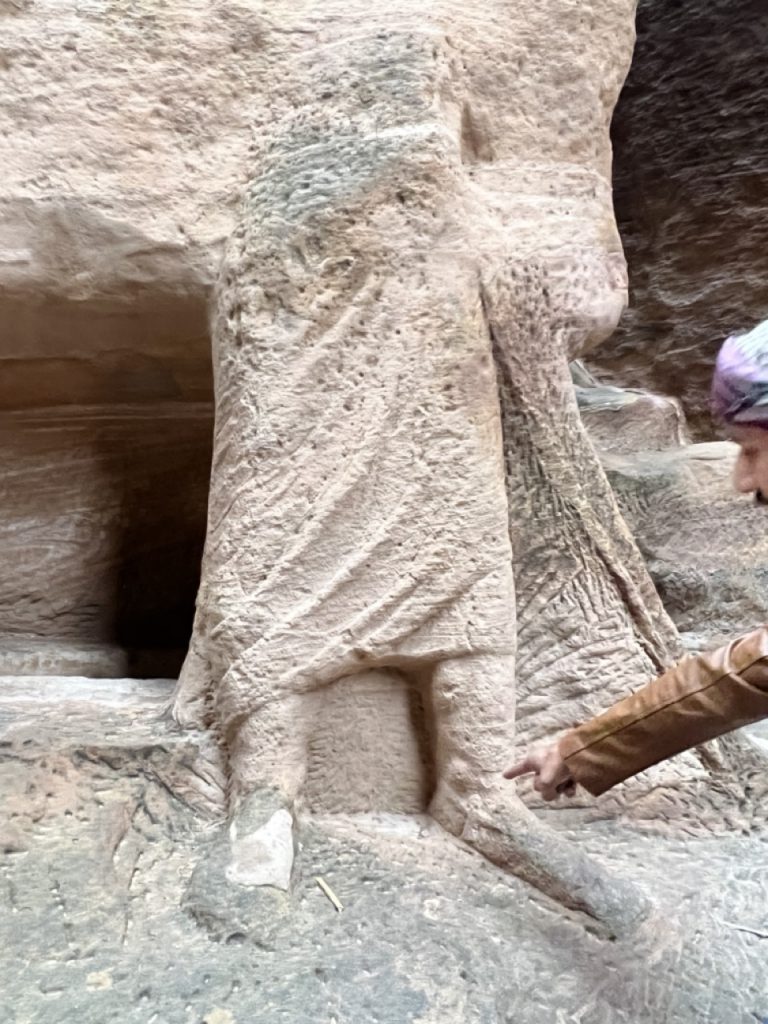
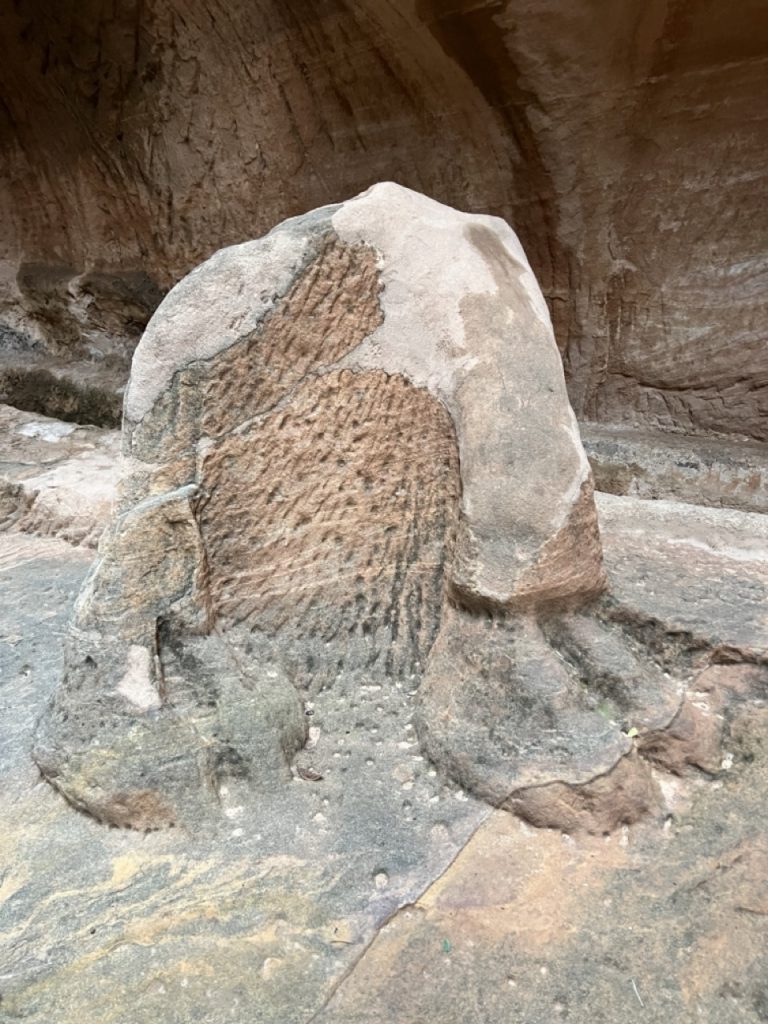
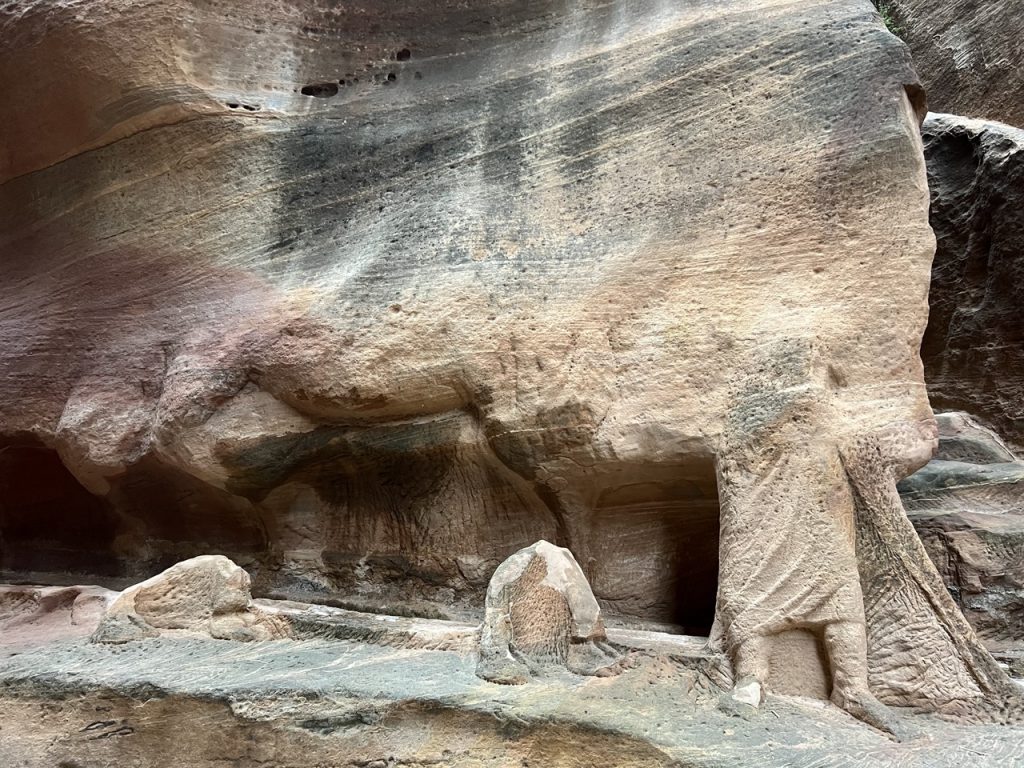
We were now approaching the Treasury … our guide left to us to enter alone together – AWE INSPIRING. The Treasury, or Al-Jazneh, is one of the most elaborate structures and has become an iconic sight in Petra. According to historians, the Treasury served as a mausoleum of the Nabateans. Its stunning details make it an amazing sight to behold. The Treasury is hard to miss as it is the first thing you lay eyes on when you exit the Siq.
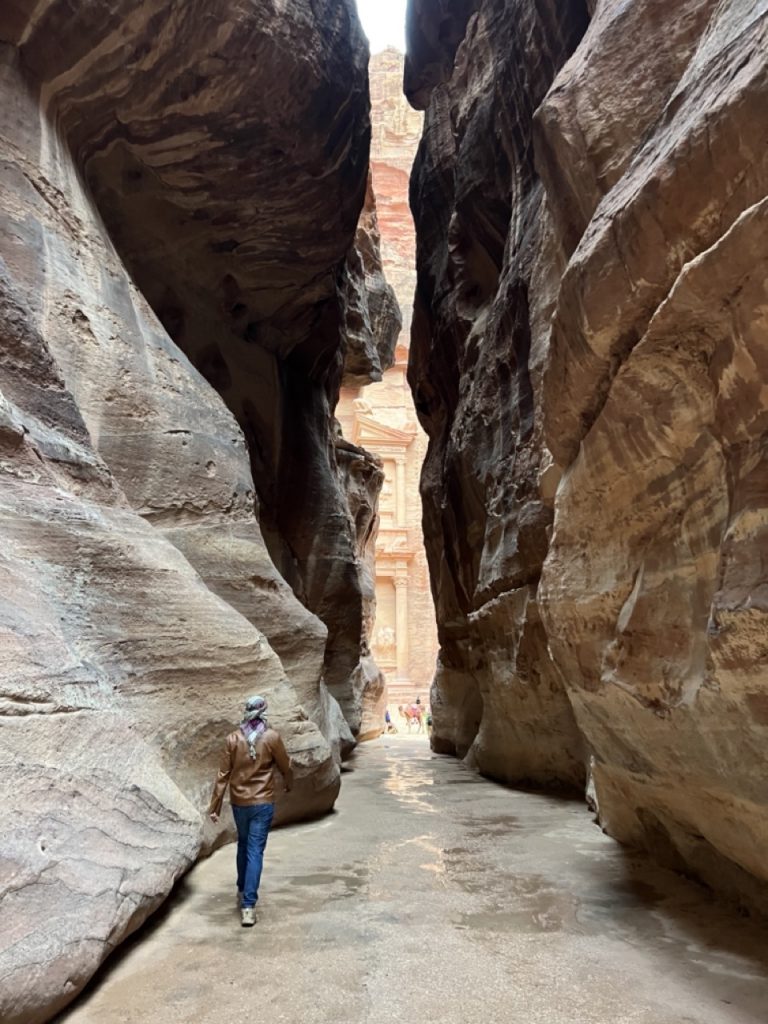
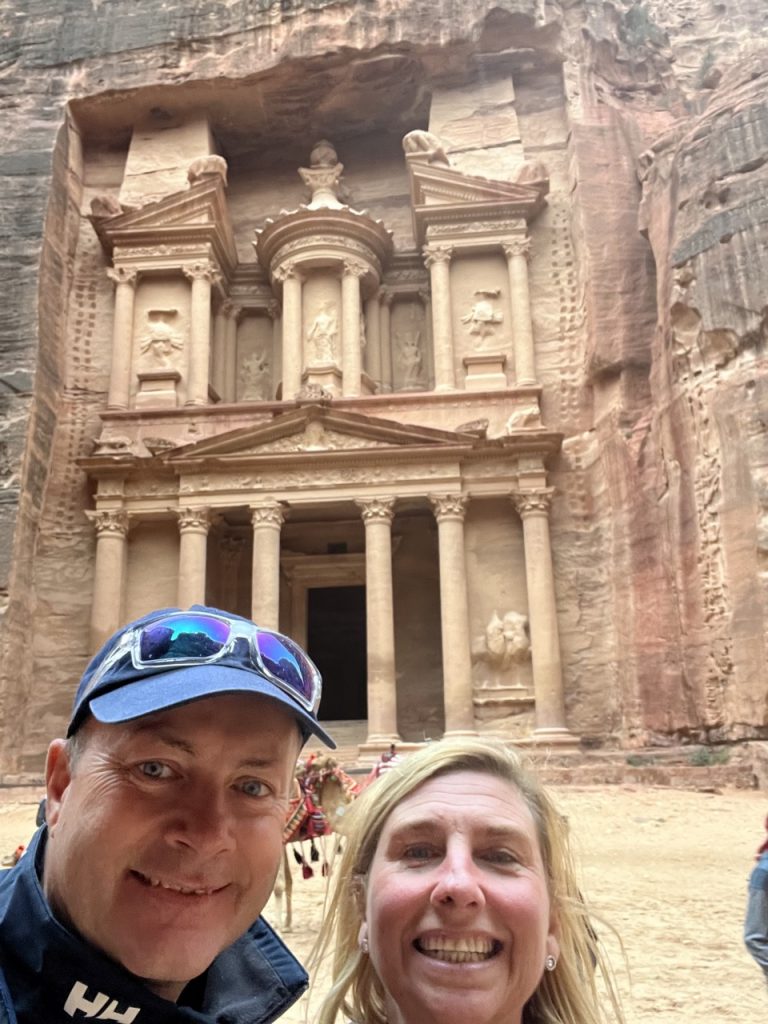
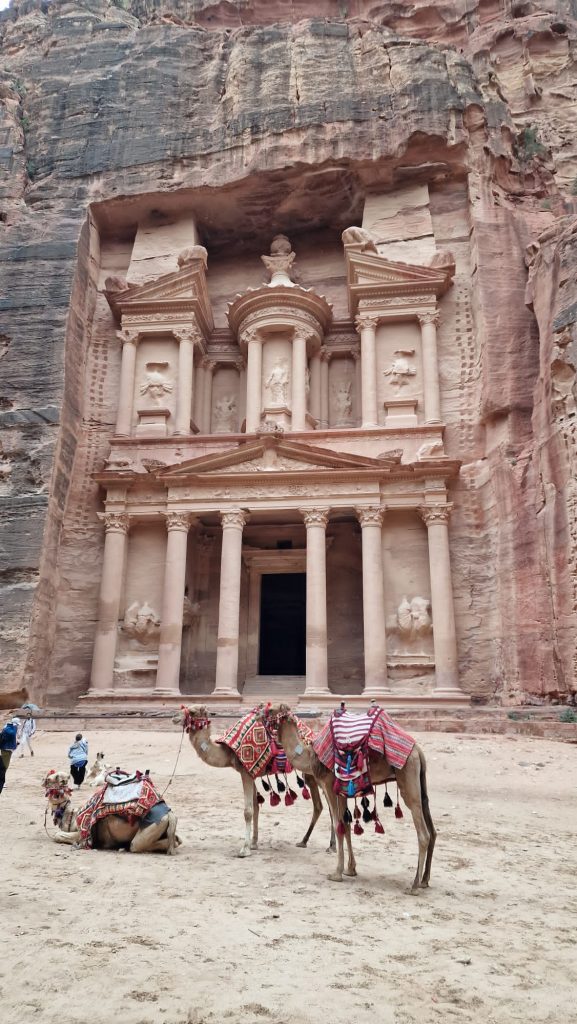
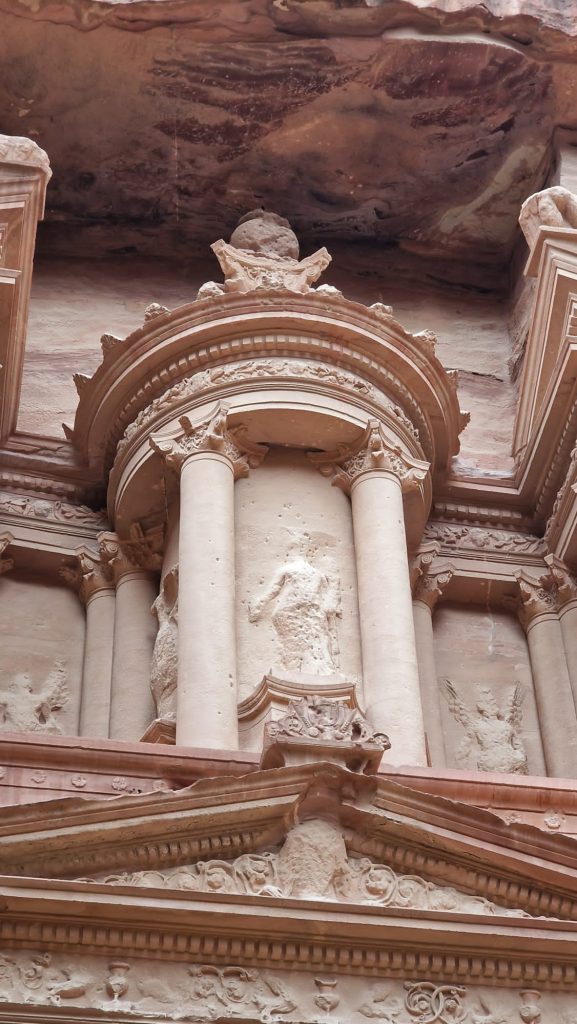
You’ll see plenty of signs claiming to lead you to the best viewpoint in Petra. The Al Kubtha Trail is one of them. This trail starts from the end of the Main Trail and is an arduous uphill path. On top, you’ll find a small store which is the actual viewpoint. As the name suggests, the viewpoint grants stunning views of the Treasury below and of the valley. We paid a young Bedouin 10JD to take us up the steep shortcut to the famed Instagram vista.
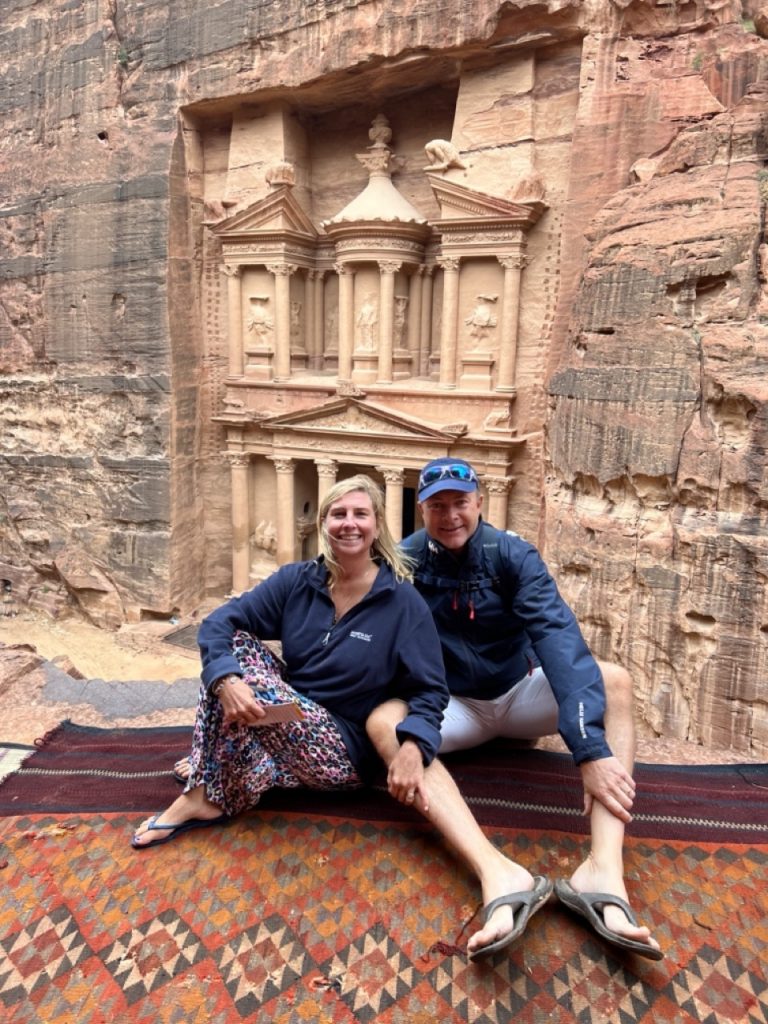
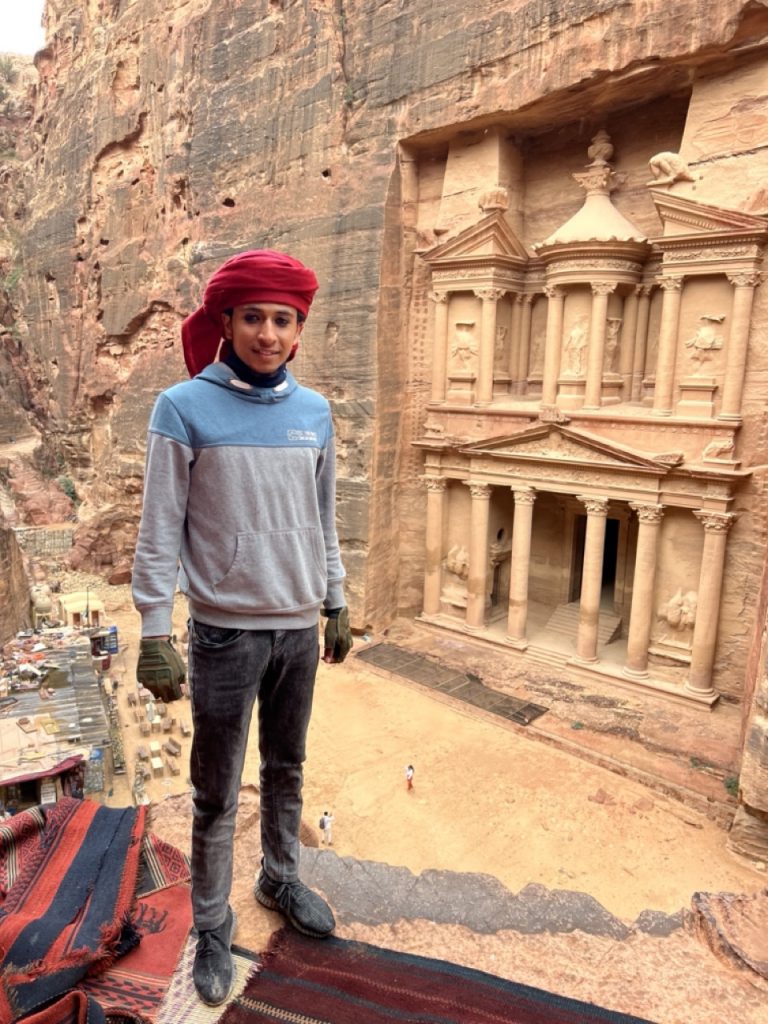
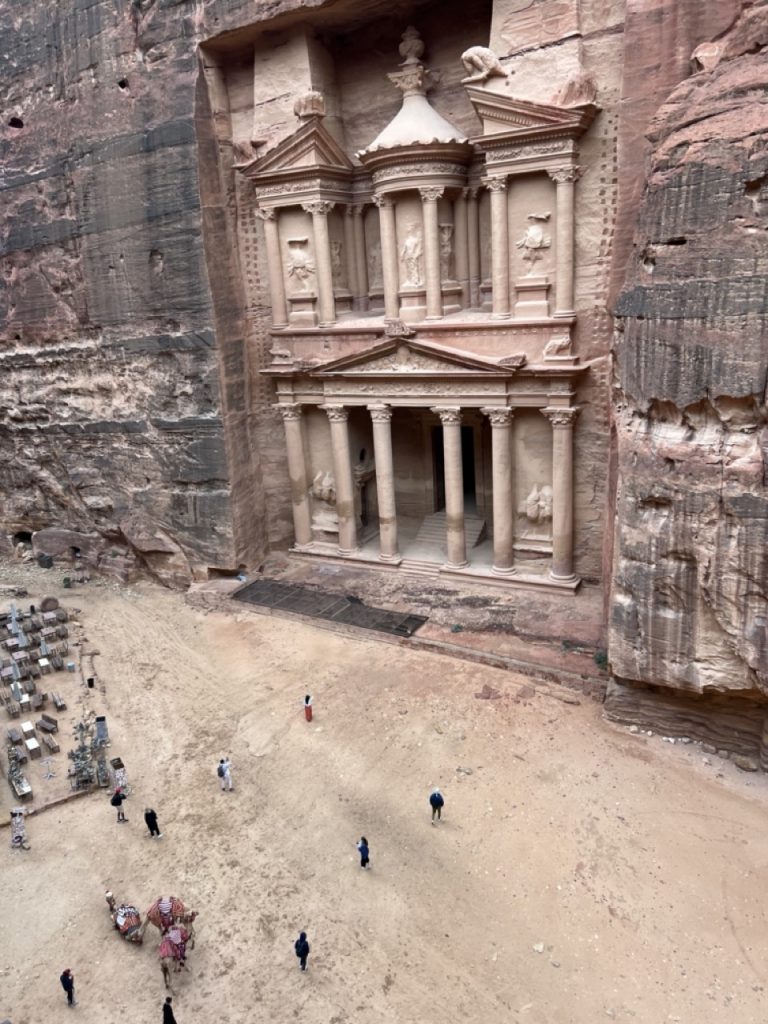
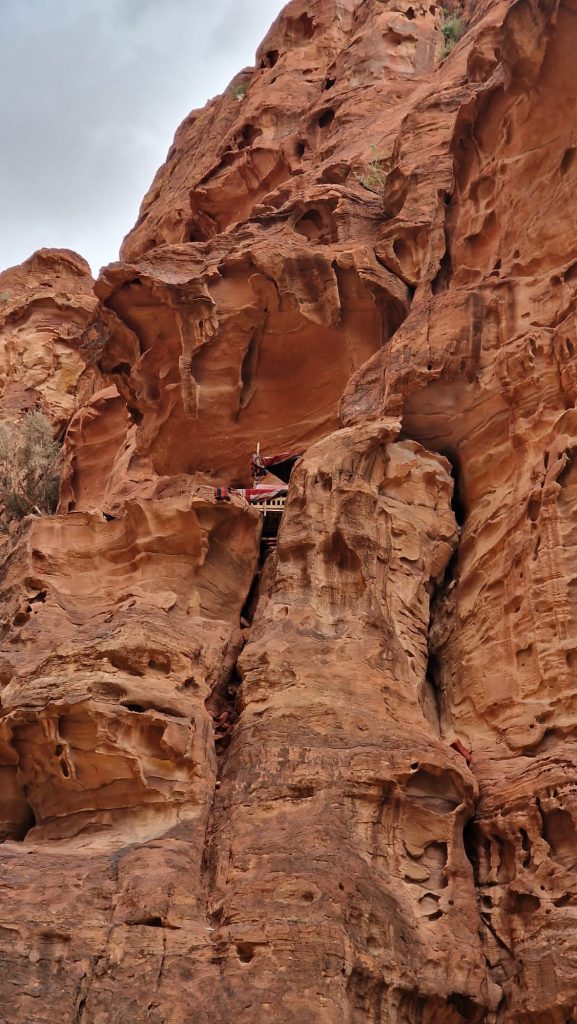
Ahmed described the history and pointed out the bullet marks on the urn at the top as looters believed it was filled with money – hence why it is nicknamed the Treasury.
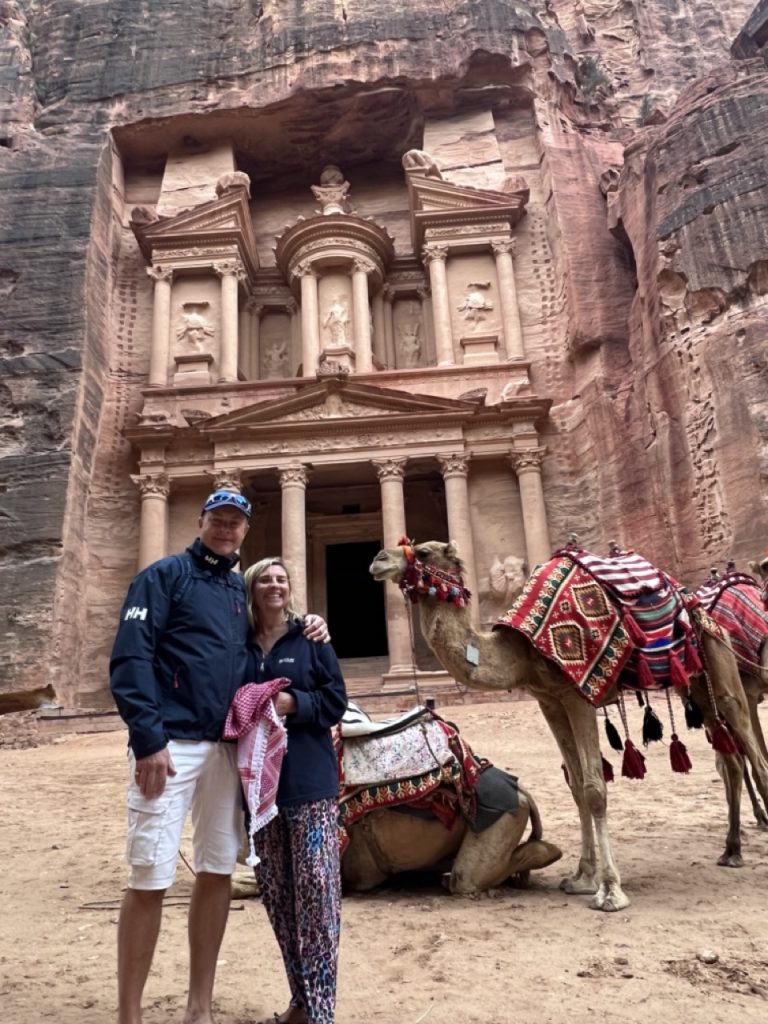
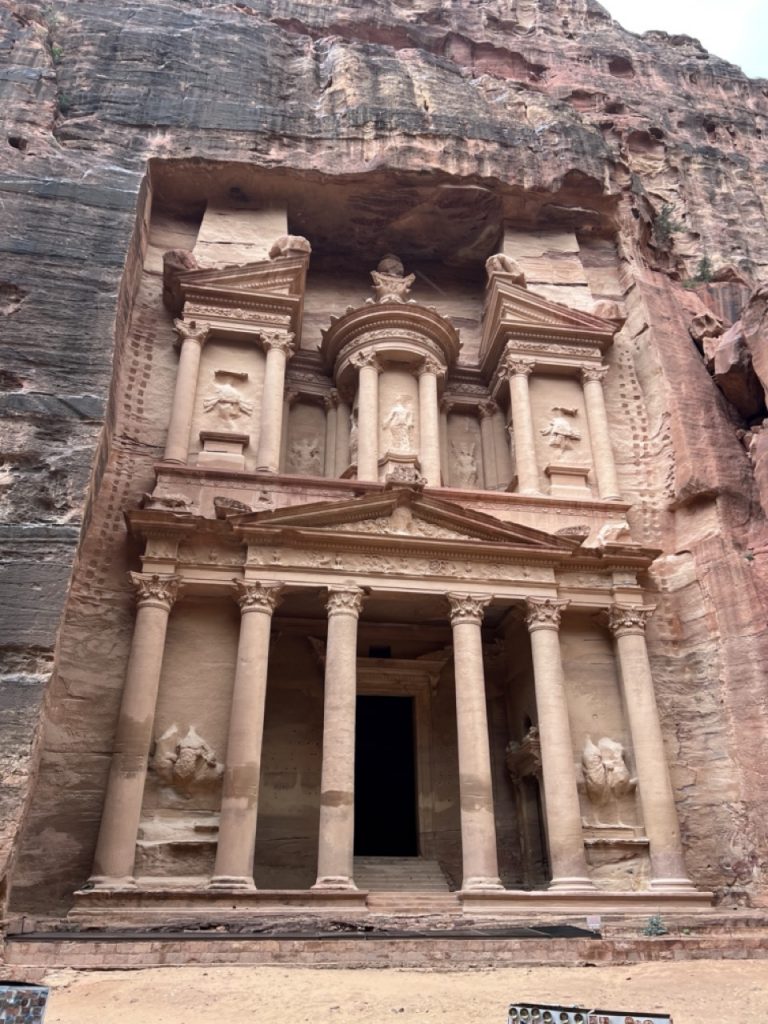
It was a bit wet and chilly and even the donkey sought refuge in a cave! A woman from New Zealand had married a Bedouin (see Tweet for link to book under Jordan) and sold jewellery here.
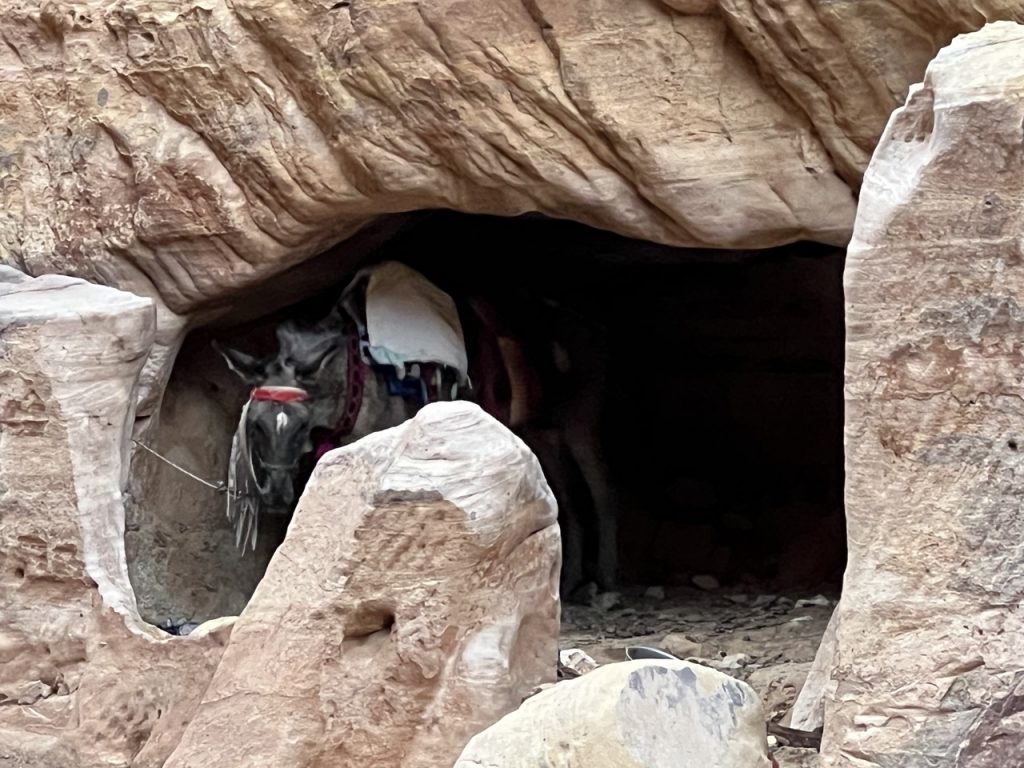
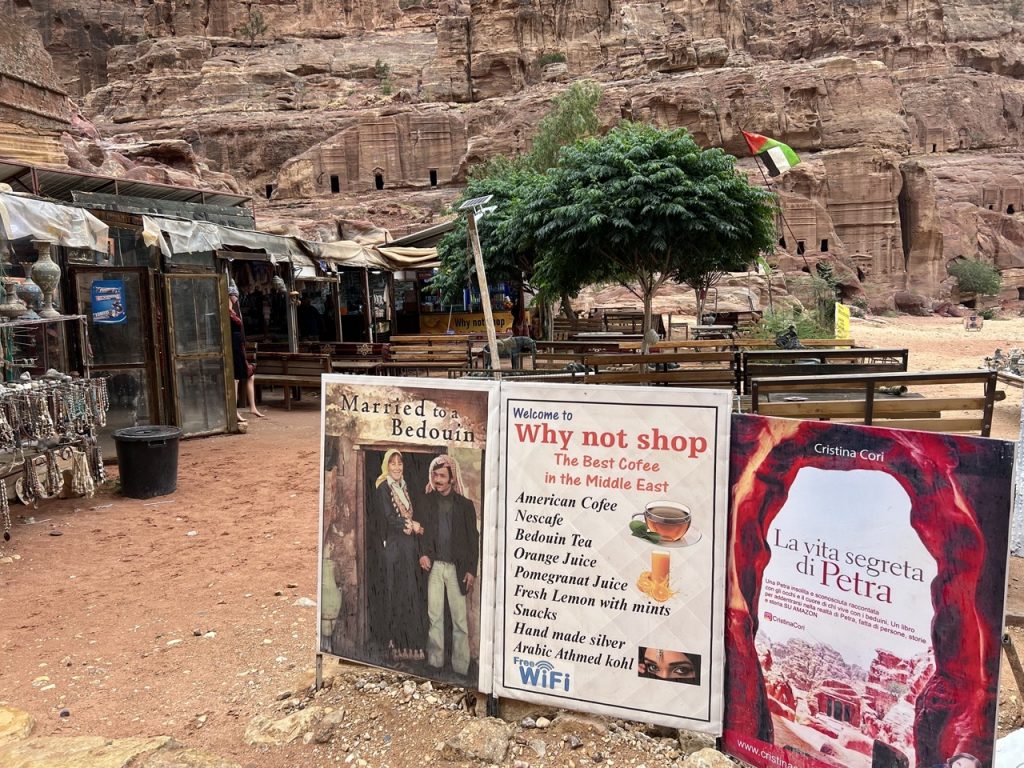
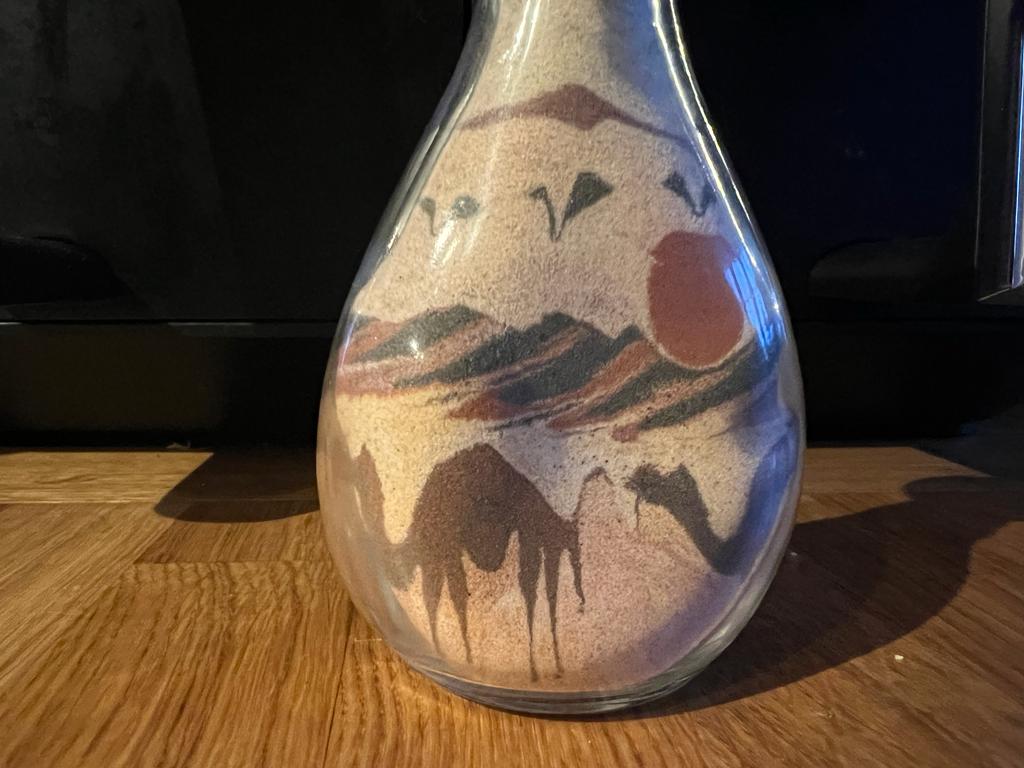
Going past the Treasury we found rows of Nabatean tombs carved out of sandstone rock formations…these tombs are another fine example of Assyrian architecture. We did buy a jar of sand art with camels from the most charming 13 year old Bedouin – the Leonardo diCaprio of Petra!
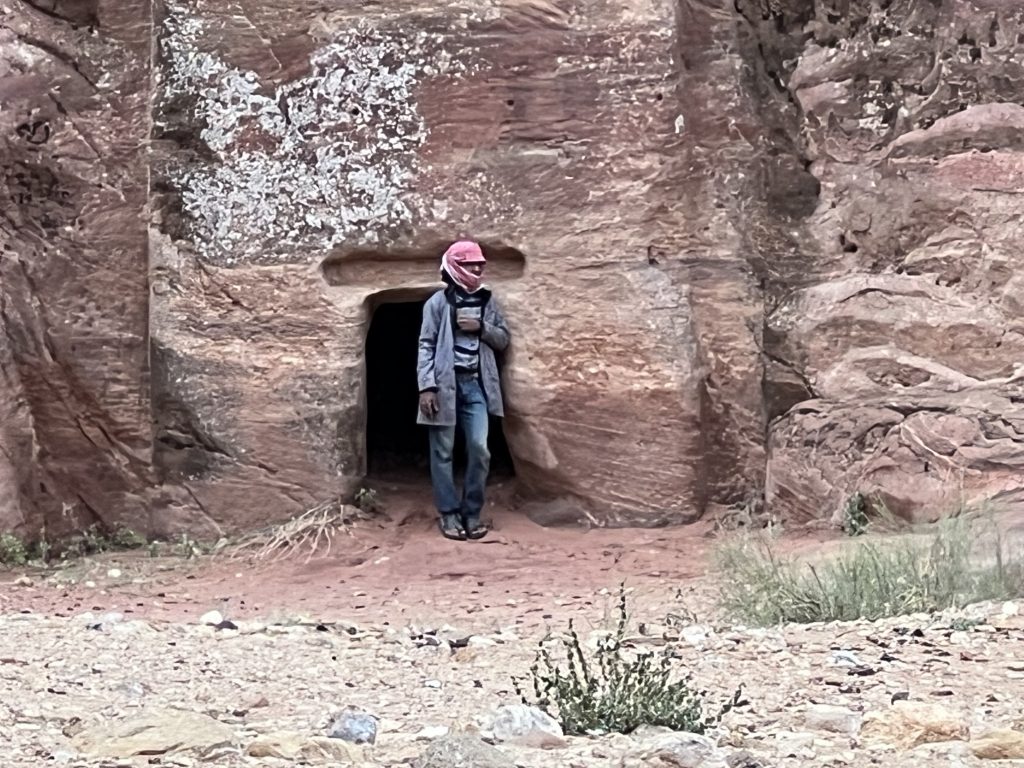
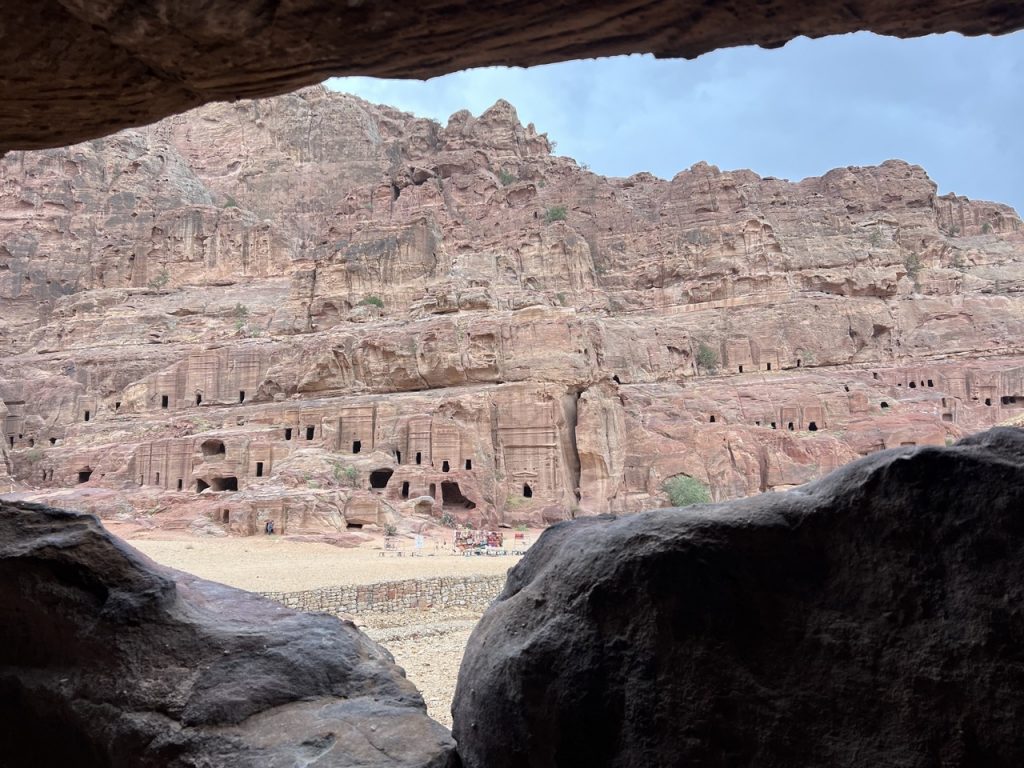
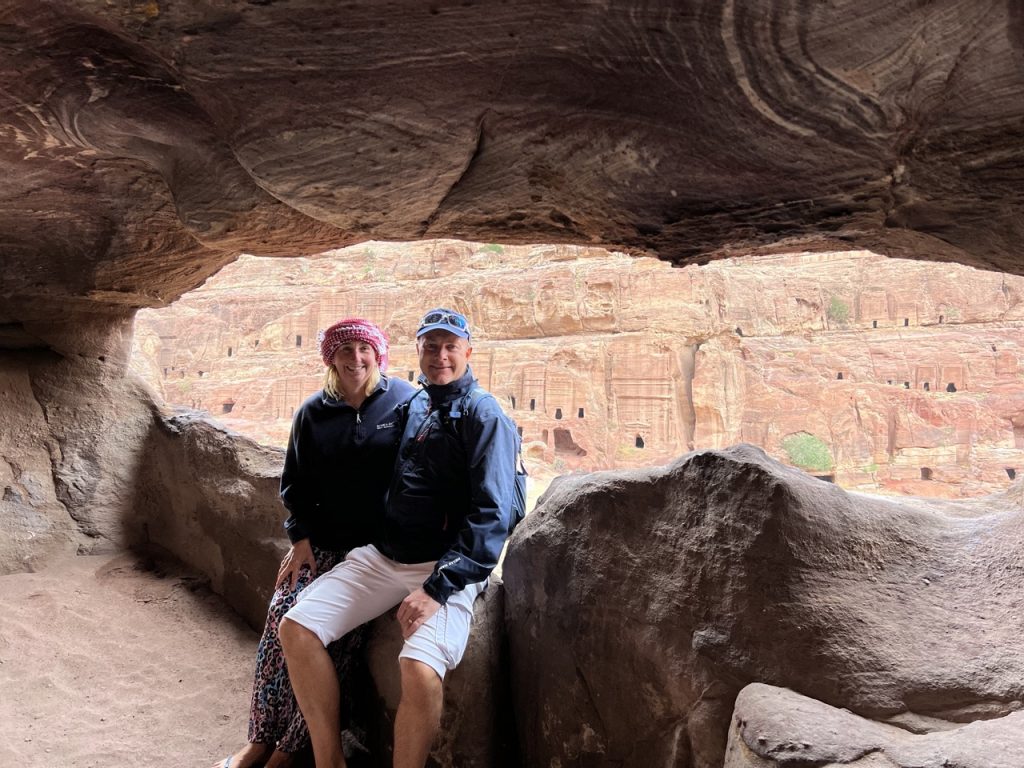
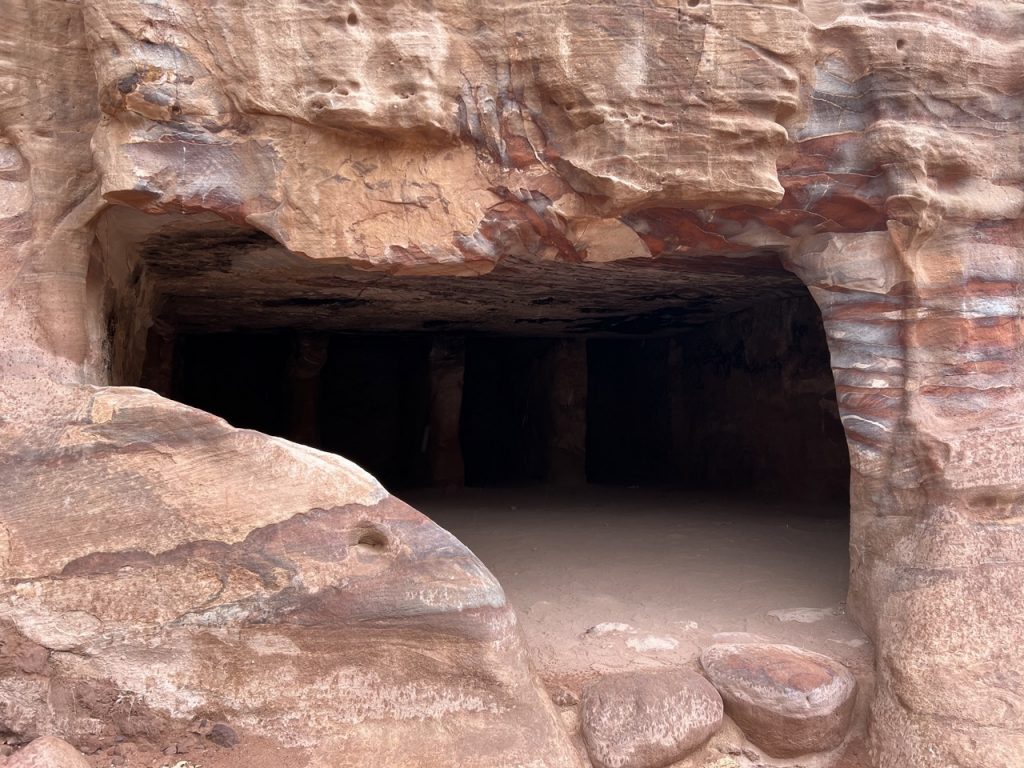
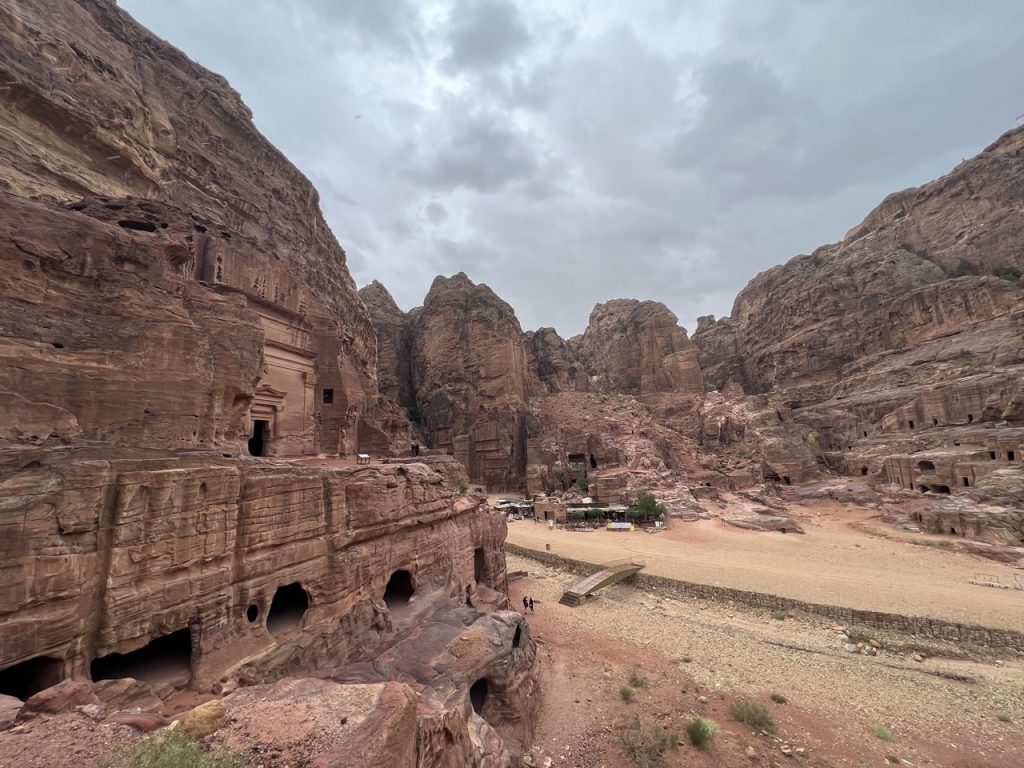
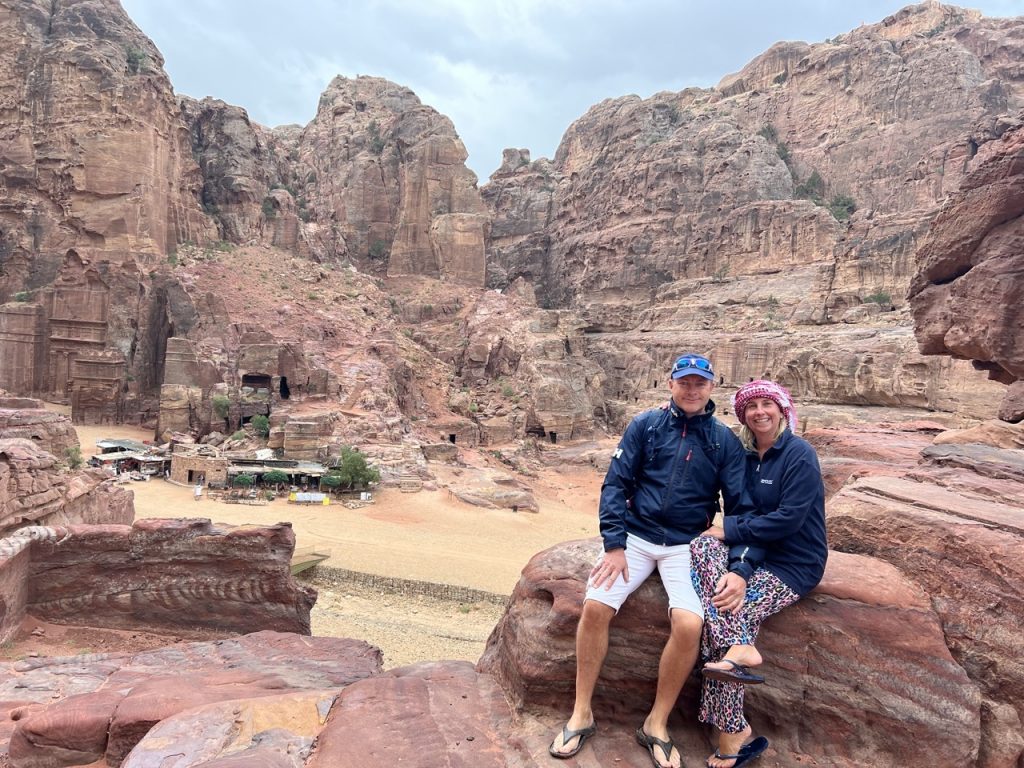
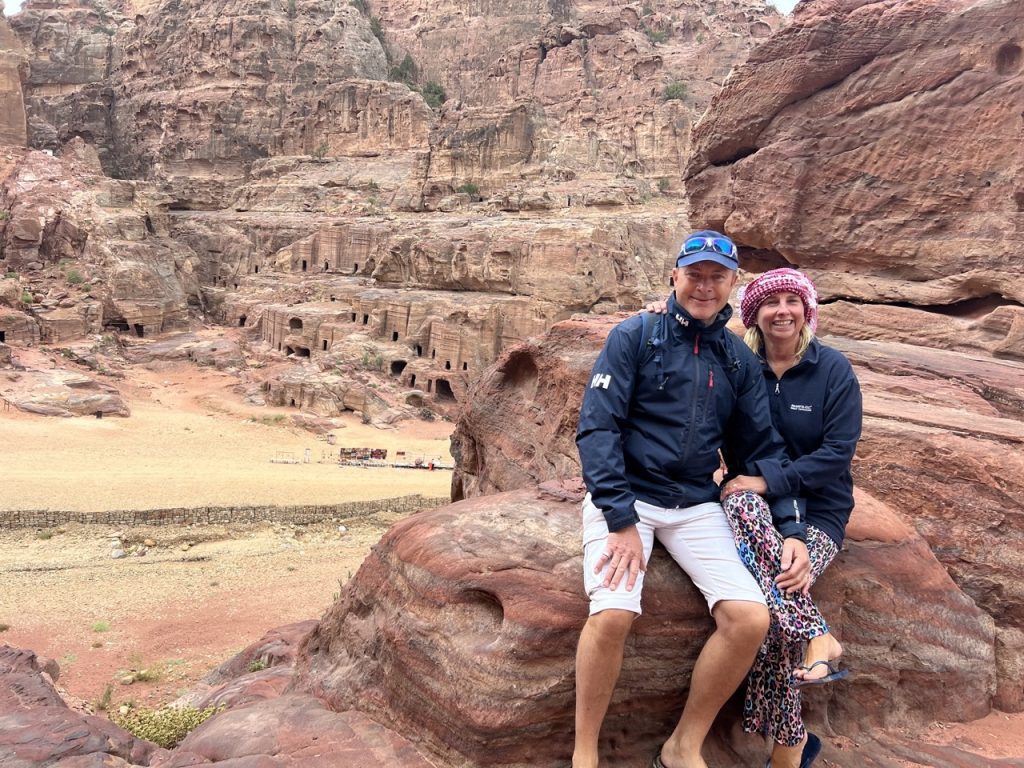
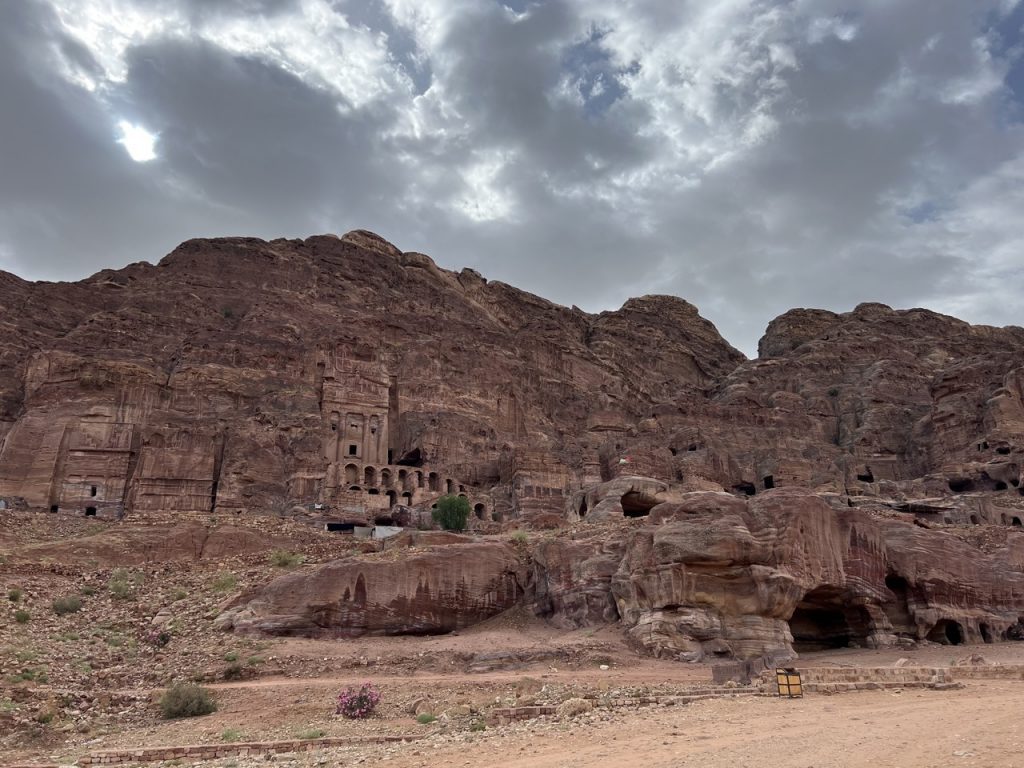
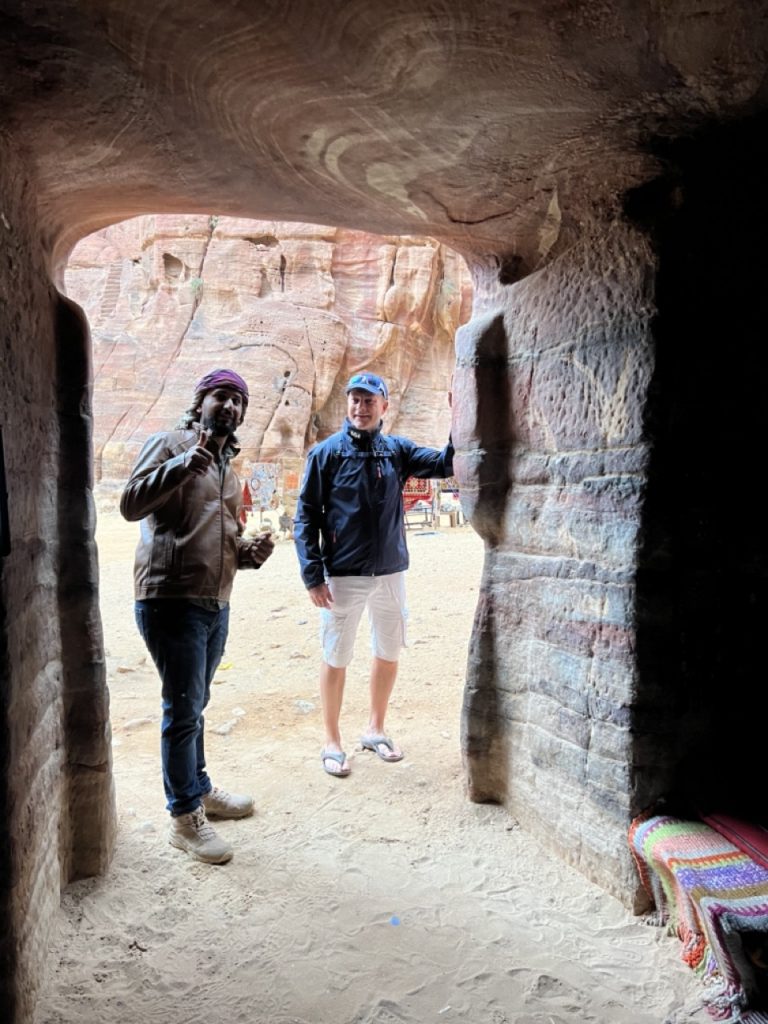
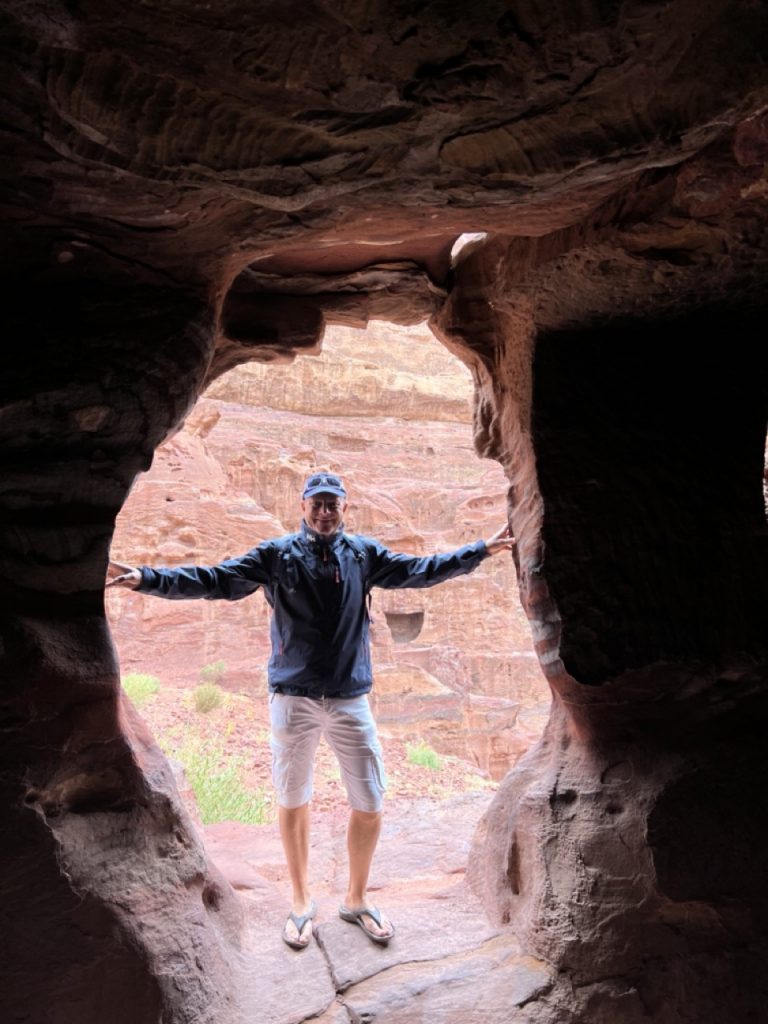
Petra’s monumental Theatre is just at the end of the Kingdom’s necropolis. Its design resembles Roman theatres, and archeologists believe the Nabateans gathered here to attend cultic or cultural performances. It is nothing short of imposing, fitting eight thousand spectators.
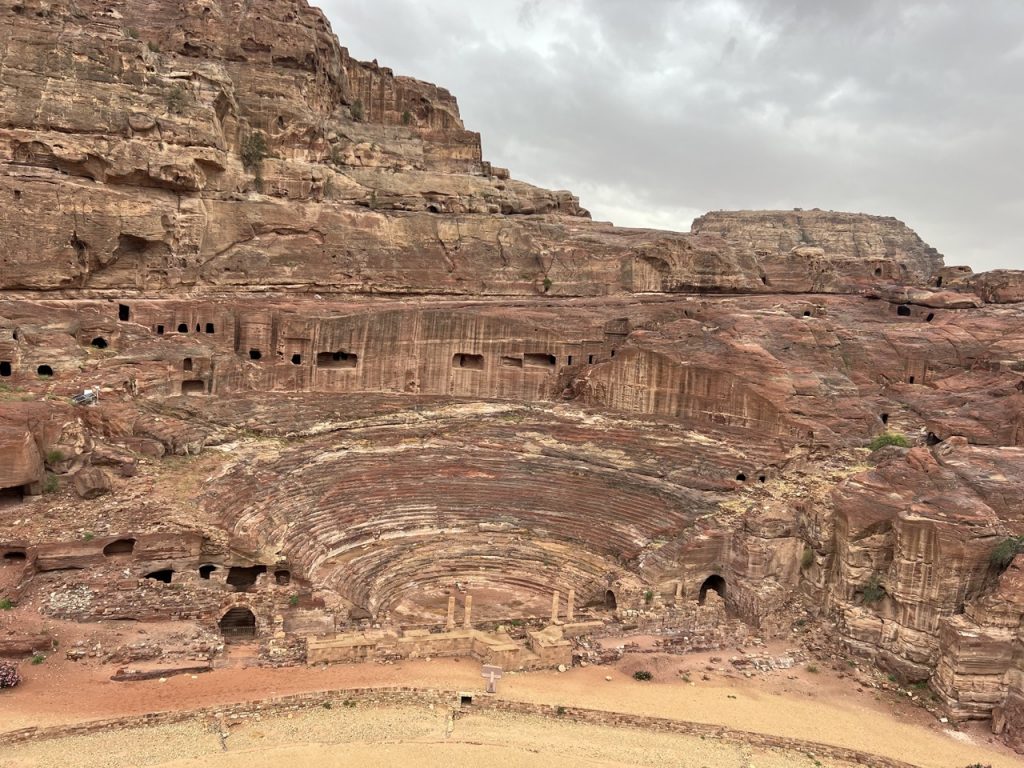
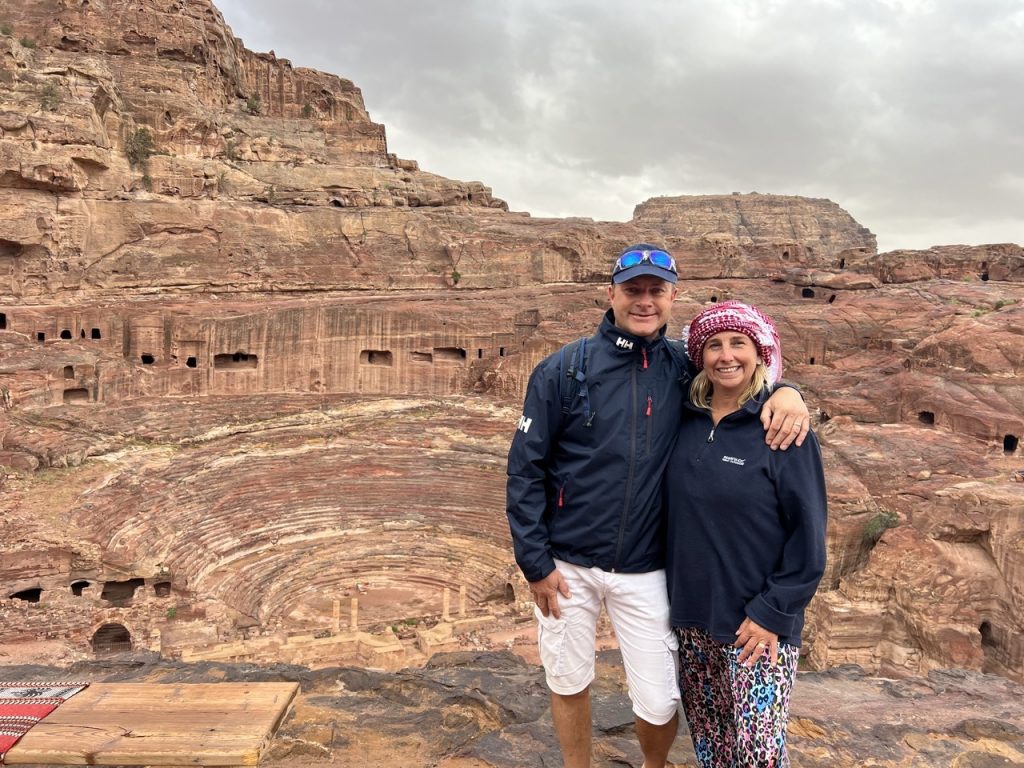
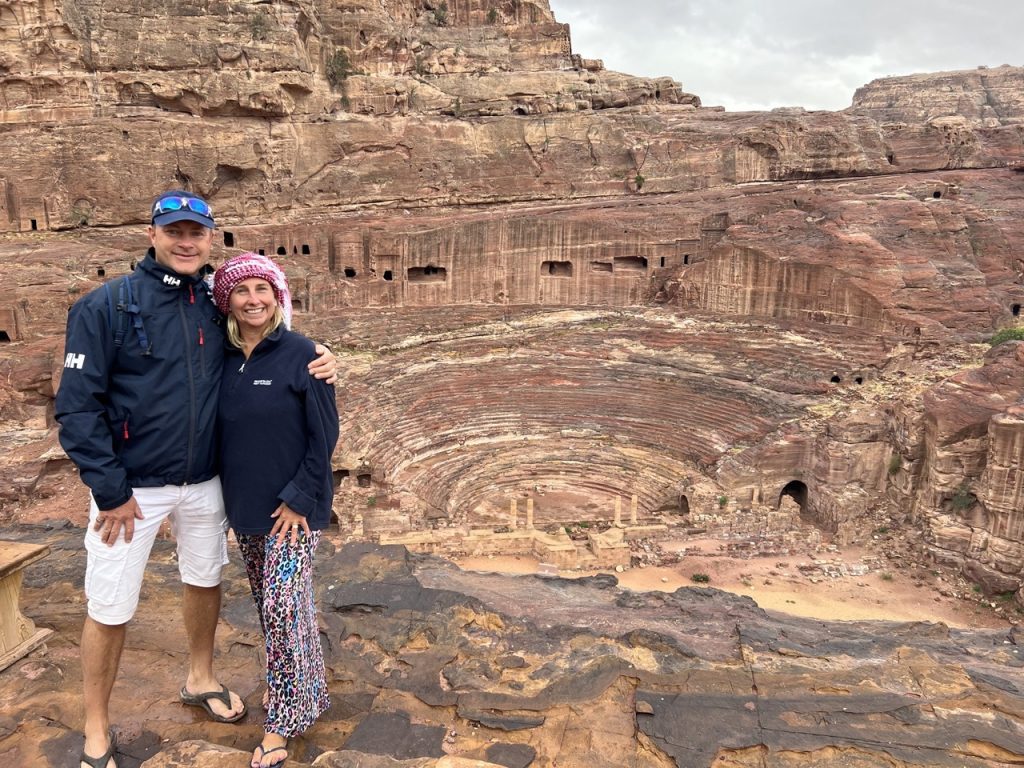
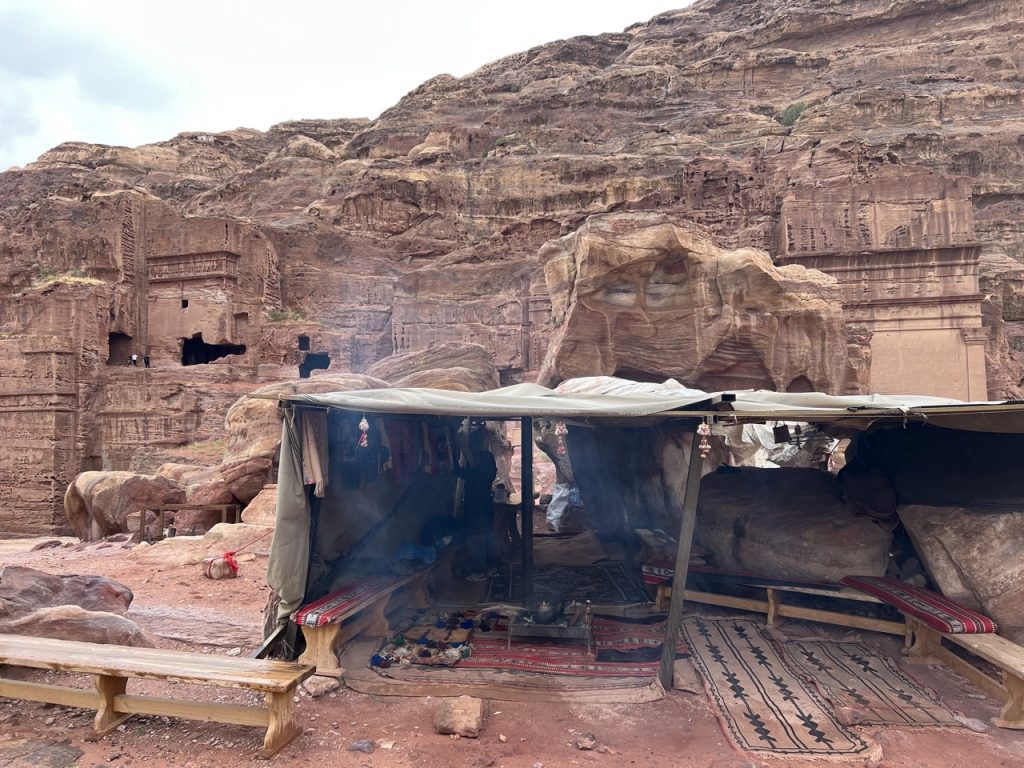
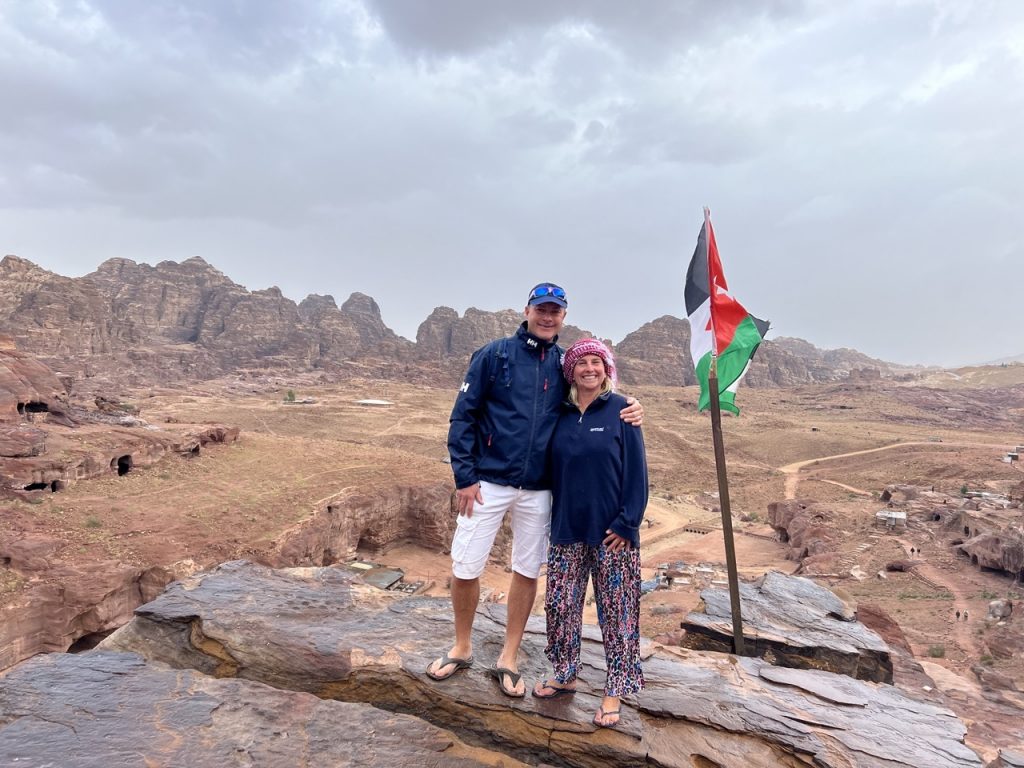
The Royal Tombs make up the third stretch of the Al Kubtha Trail, right before the Treasury Viewpoint. So, by choosing the Al Kubtha Trail, you get to see two stunning spots of Petra. The Royal Tombs are a series of large mausoleums, boasting impressive facades carved in the western slope of the Jabal al-Khubtha rock massif. Archeologists aren’t sure whose tombs these are, but everything seems to point at the Nabataean King, Malchus II. We got some great photos inside the tombs – the colours are magnificent. We enjoyed a freshly squeezed orange juice.
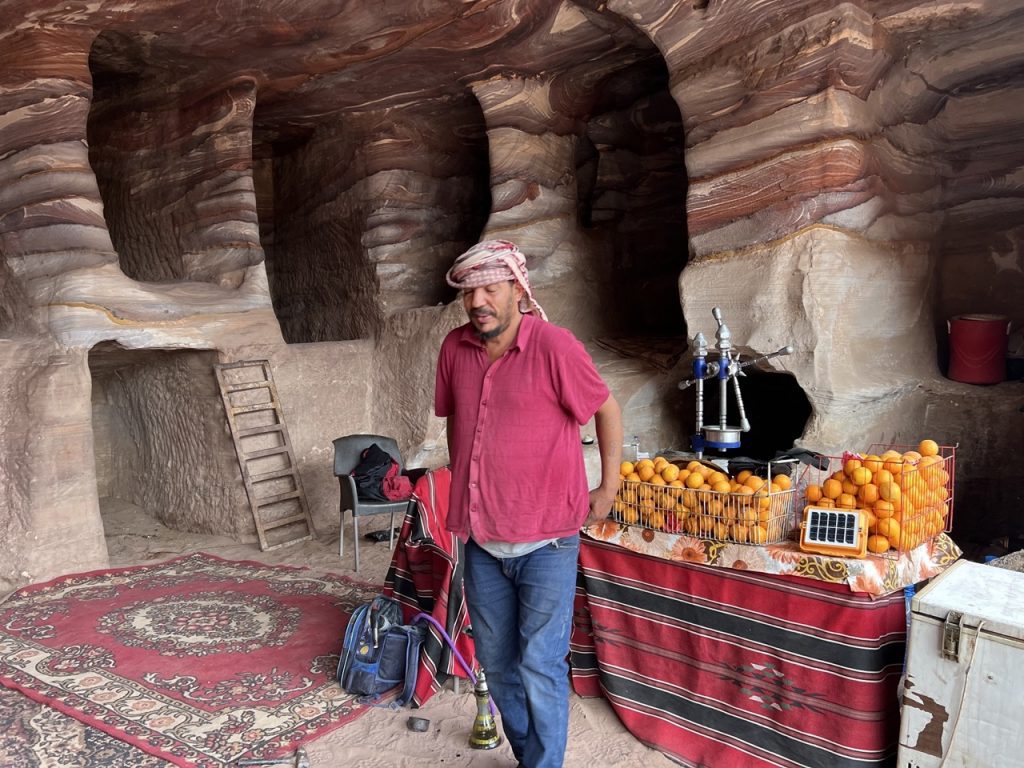
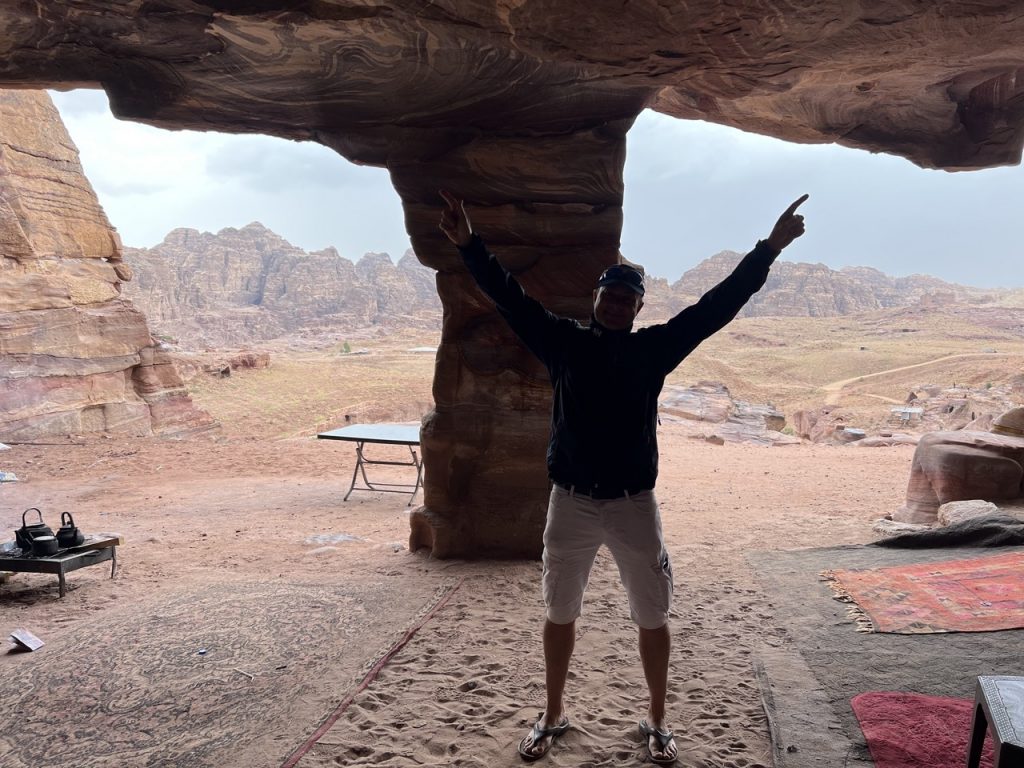
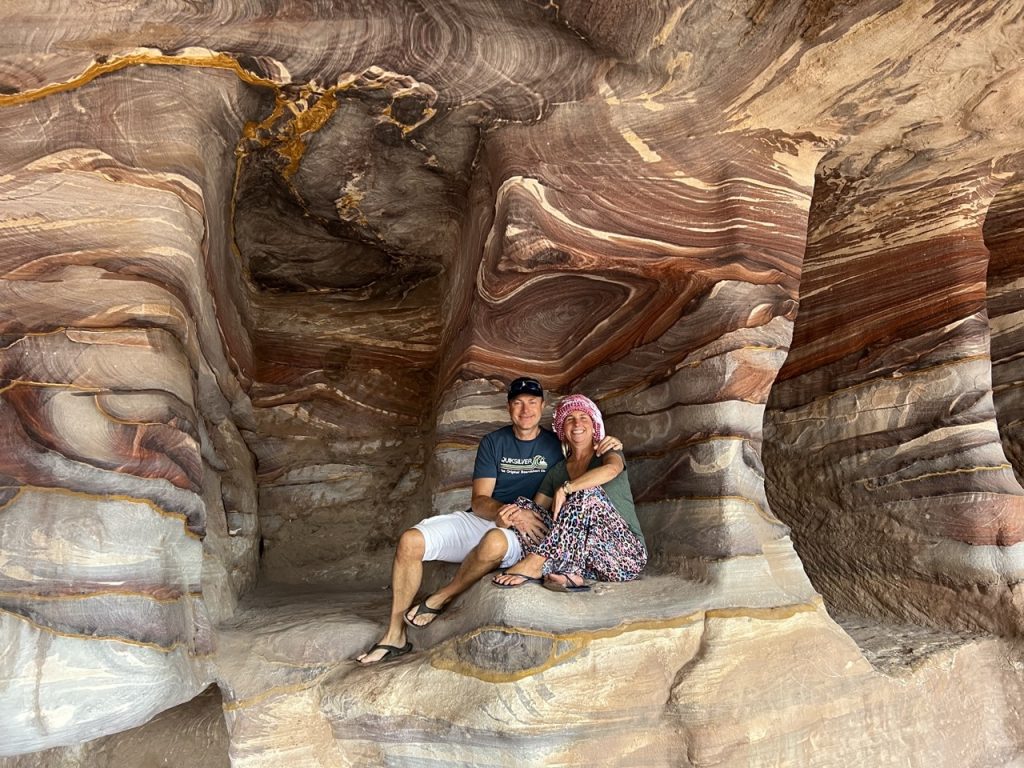
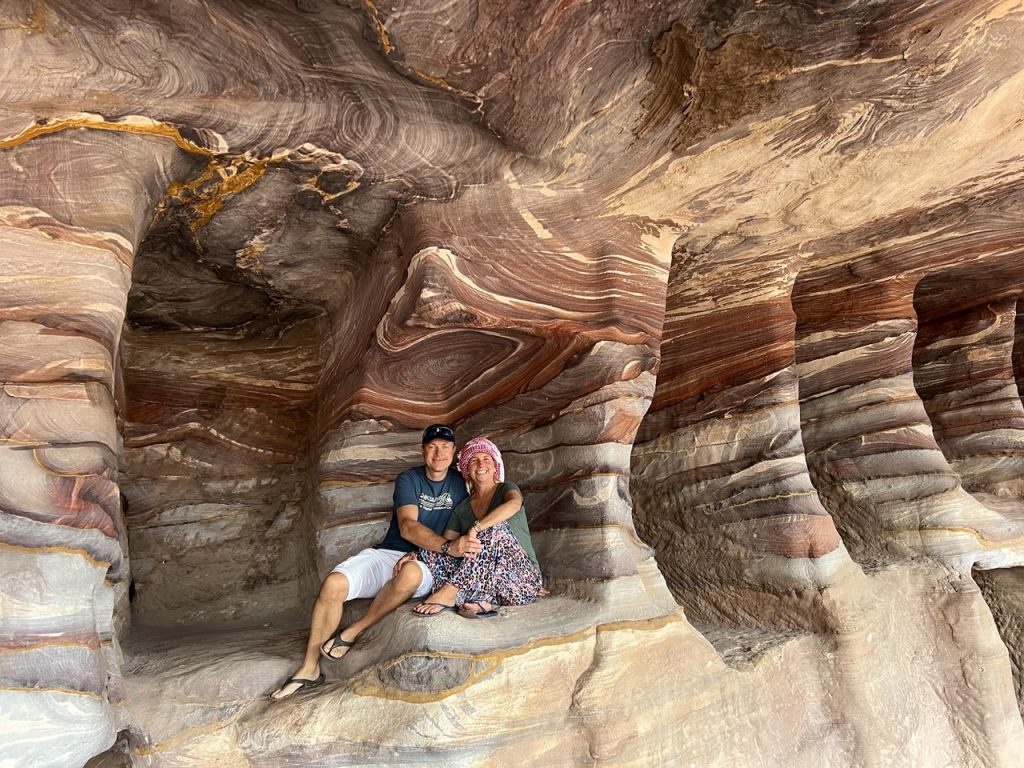
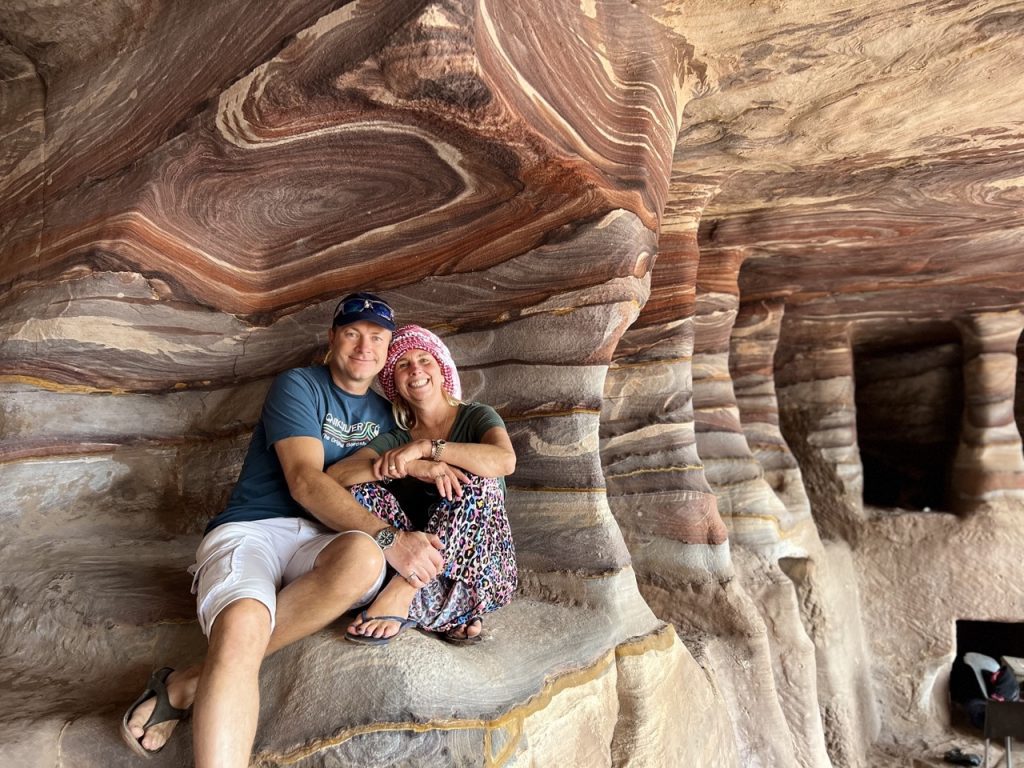
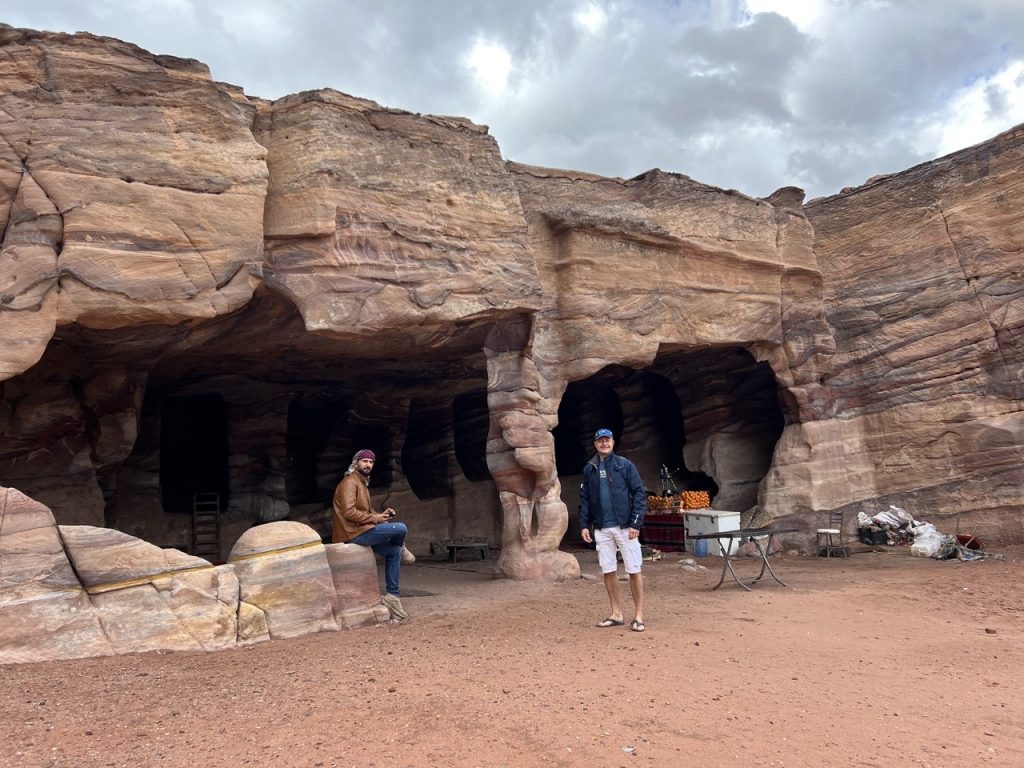
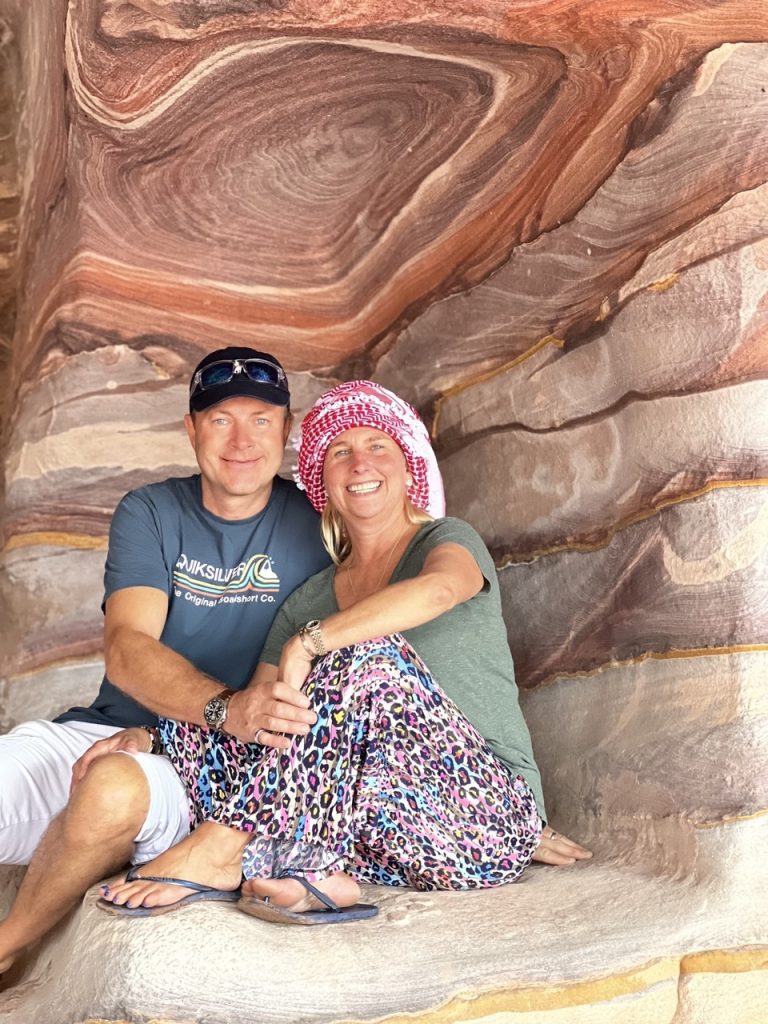
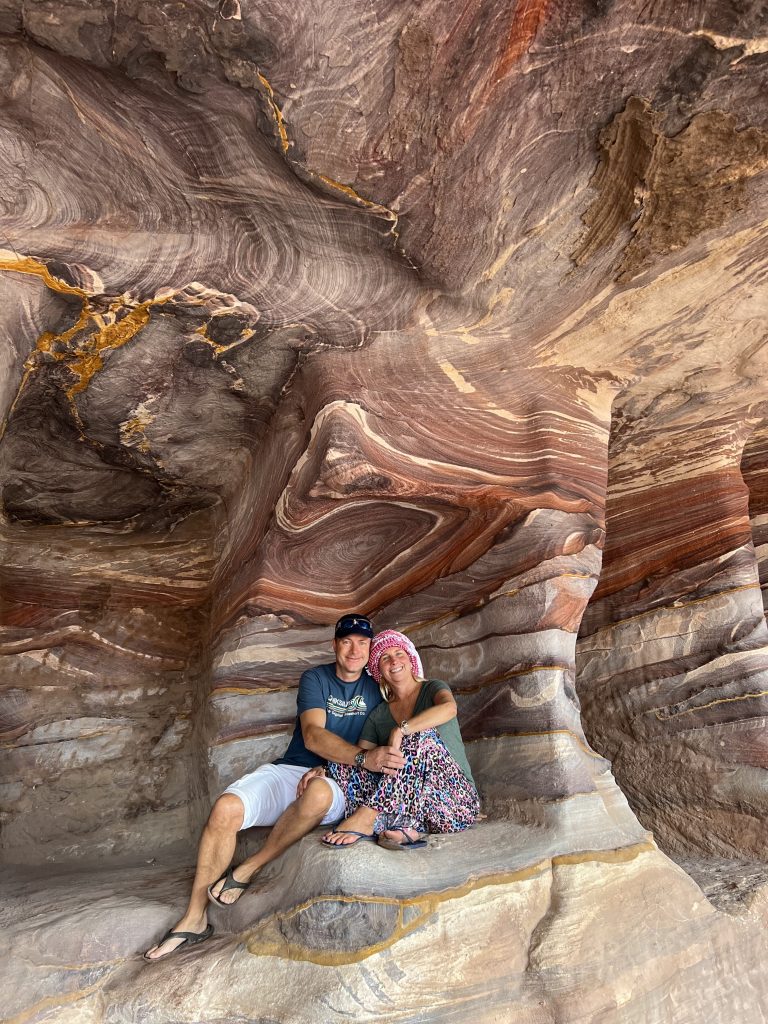
We could see the flag that marked the High Place of Sacrifice perched on top of the Jebel Madhbah and which is another of Petra’s intimidating trails. The site used to be an altar where the Nabateans practiced animal sacrifices to the Nabatean God Dushara. The trail takes 3.5-4 hours, and the first part of the path is all stairs. On your way back, you can choose to follow the same trail or through the Wadi al-Farasa Trail located behind the High Place of Sacrifice. Unfortunately we did not have time to do this.
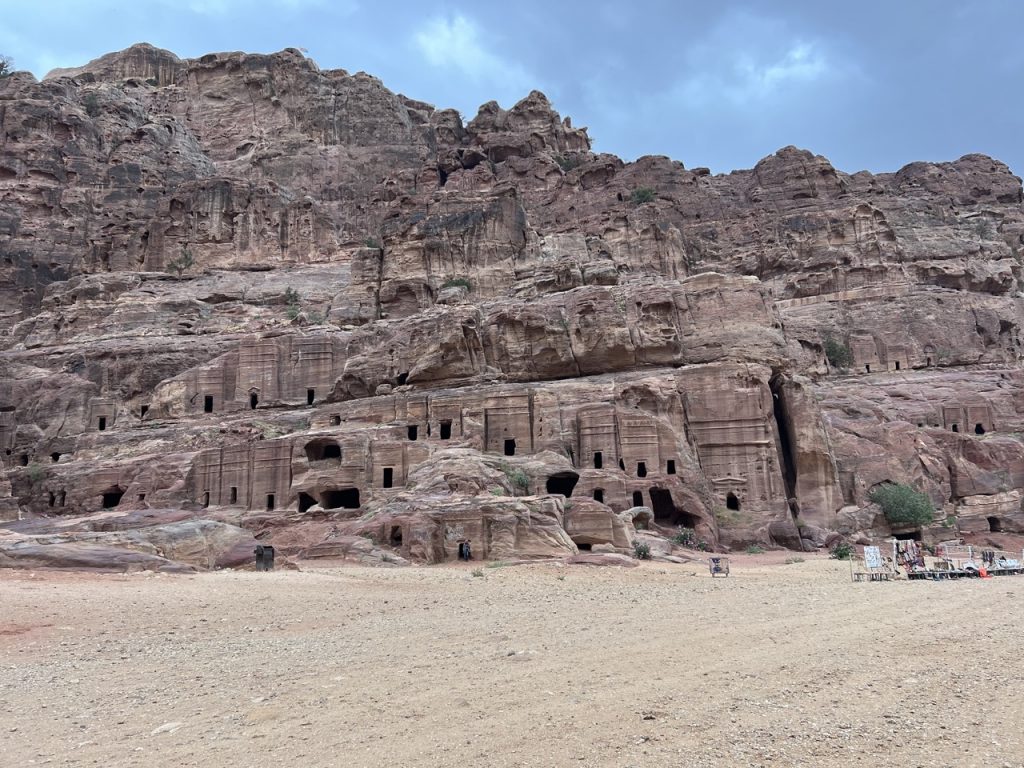
We continued along Colonnaded Street which was built in 106 AD and used to be the heart of the city and a commercial hub. Its architecture doesn’t boast such a characteristic Assyrian look instead, it follows a Roman pattern with sandstone columns and covered entrances. Unlike other sites, Colonnaded Street isn’t as well-preserved, having been a victim of numerous floods over the years. You can see the remains of marble on the temple stairs.
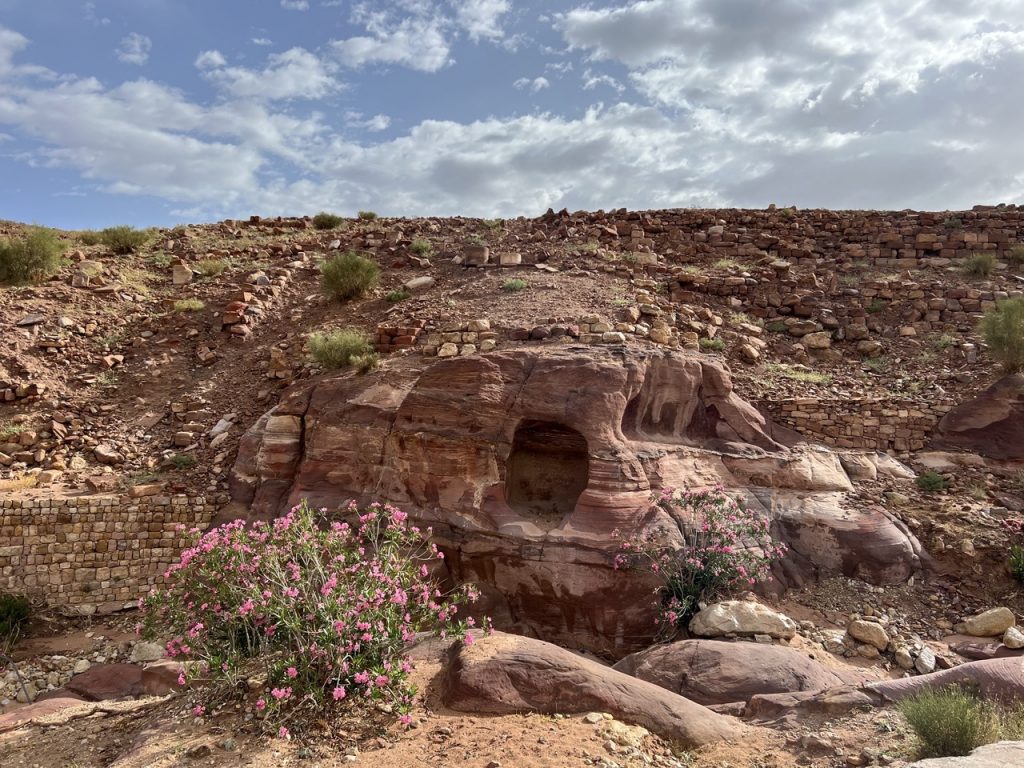
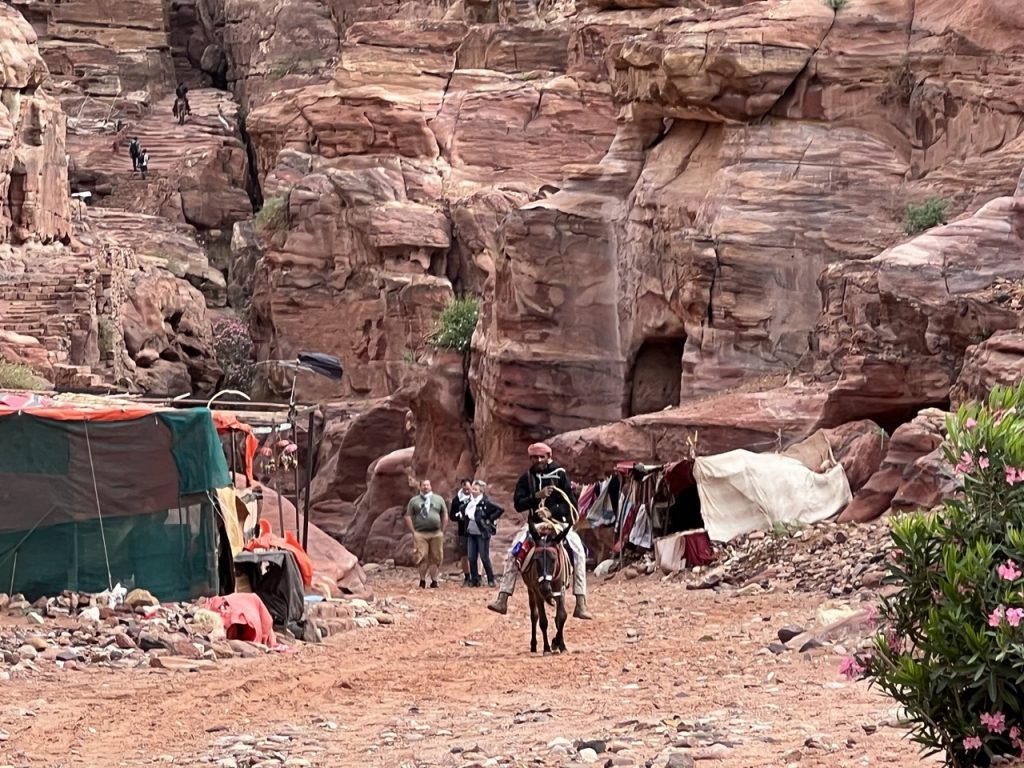
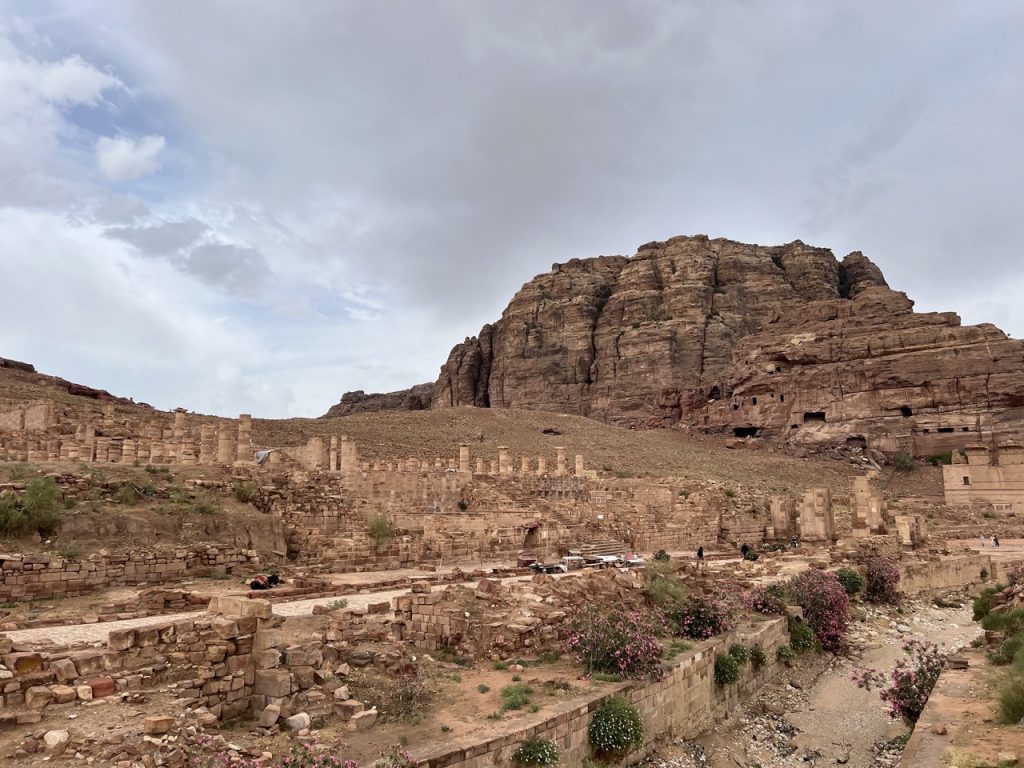
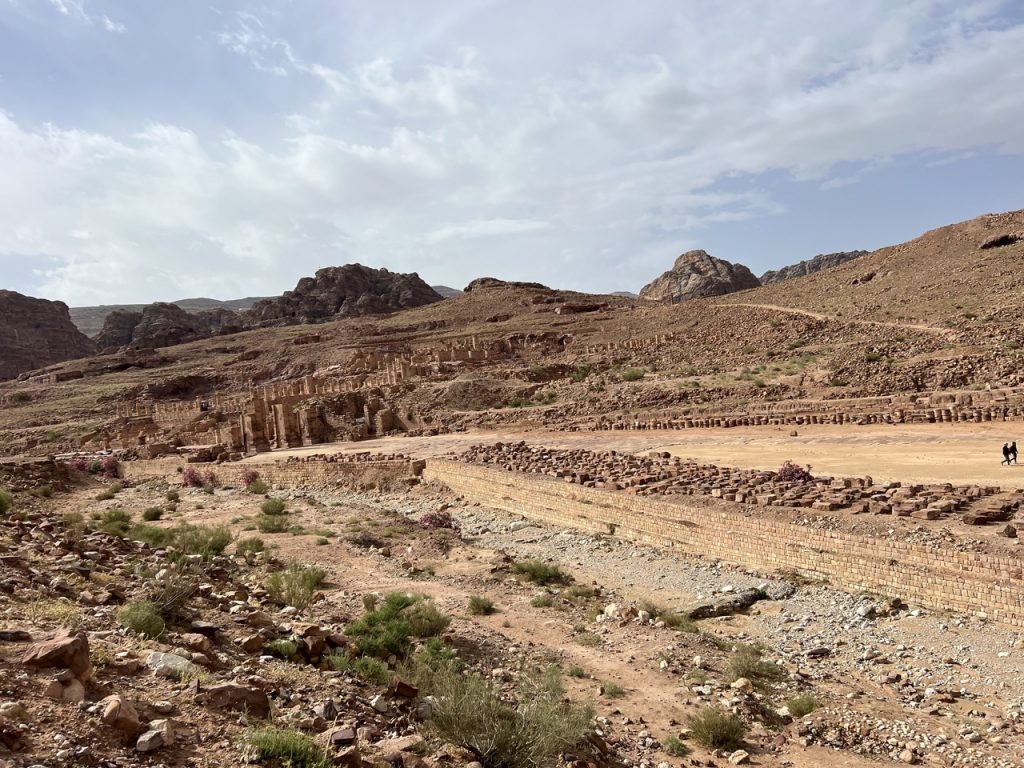
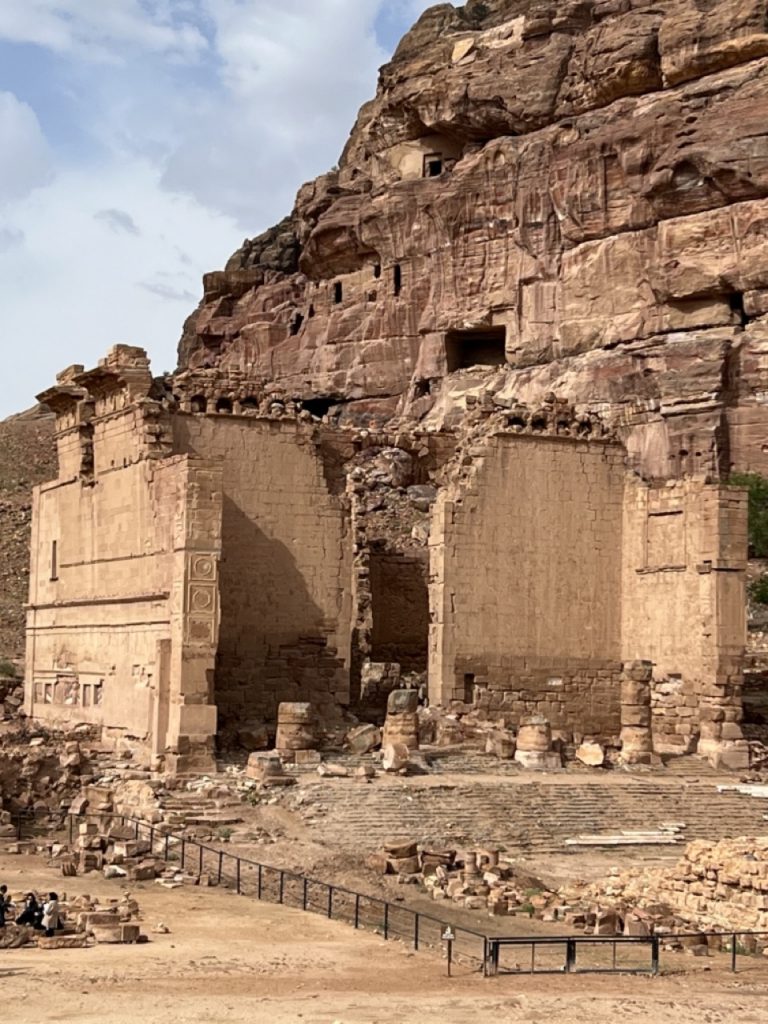
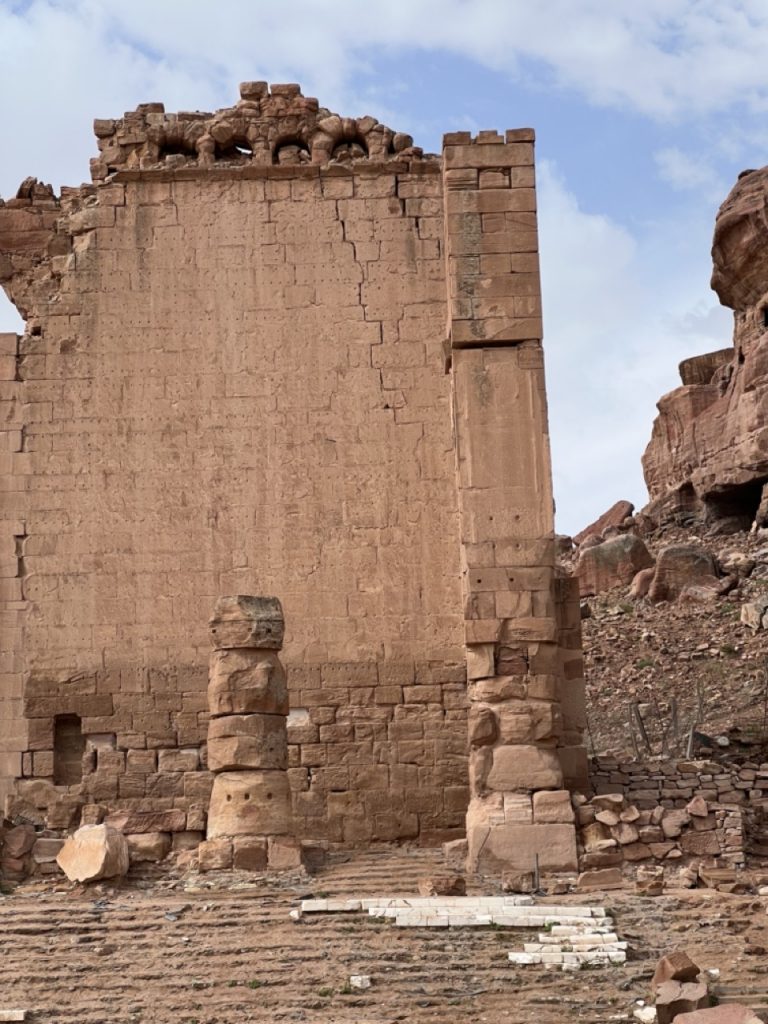
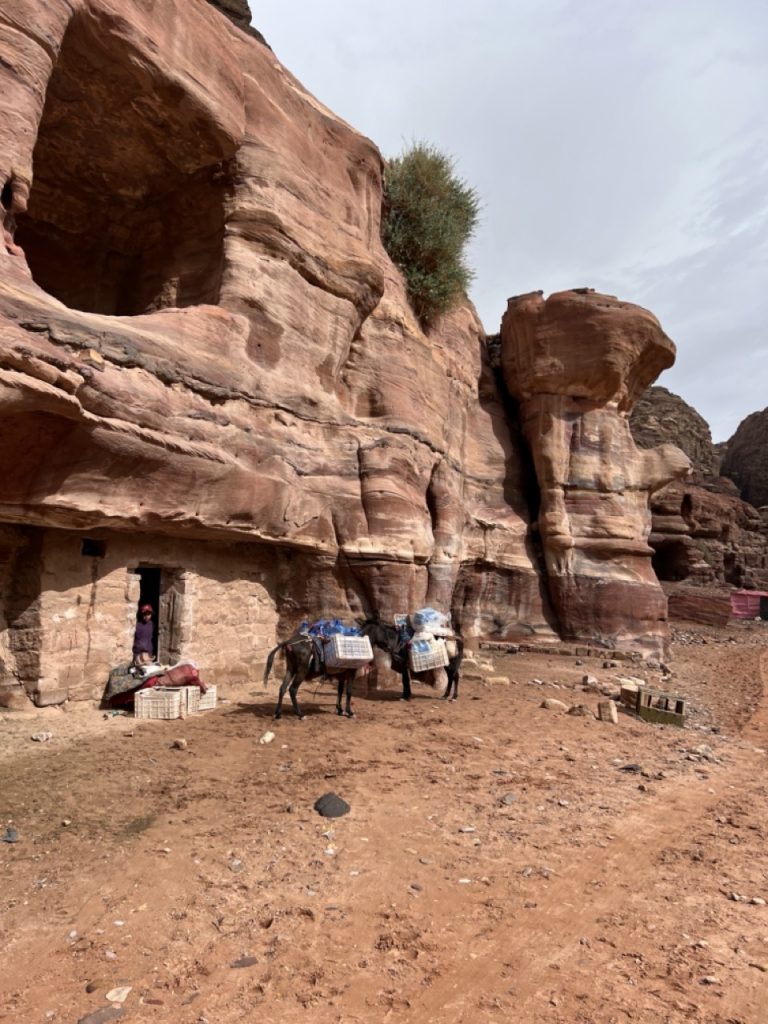
We then commenced our walk to the Monastery which is another of Petra’s architectural wonders and a wonderful surprise when you reach the end of the trail. It was also a Nabatean tomb, and its facade is similar to the Treasury. The hike to the Monastery is only 1.5-2 hours from the Main Trail and it involves climbing up 800 steps to reach it. It is a SPECTACULAR walk into and out of the Monastary!
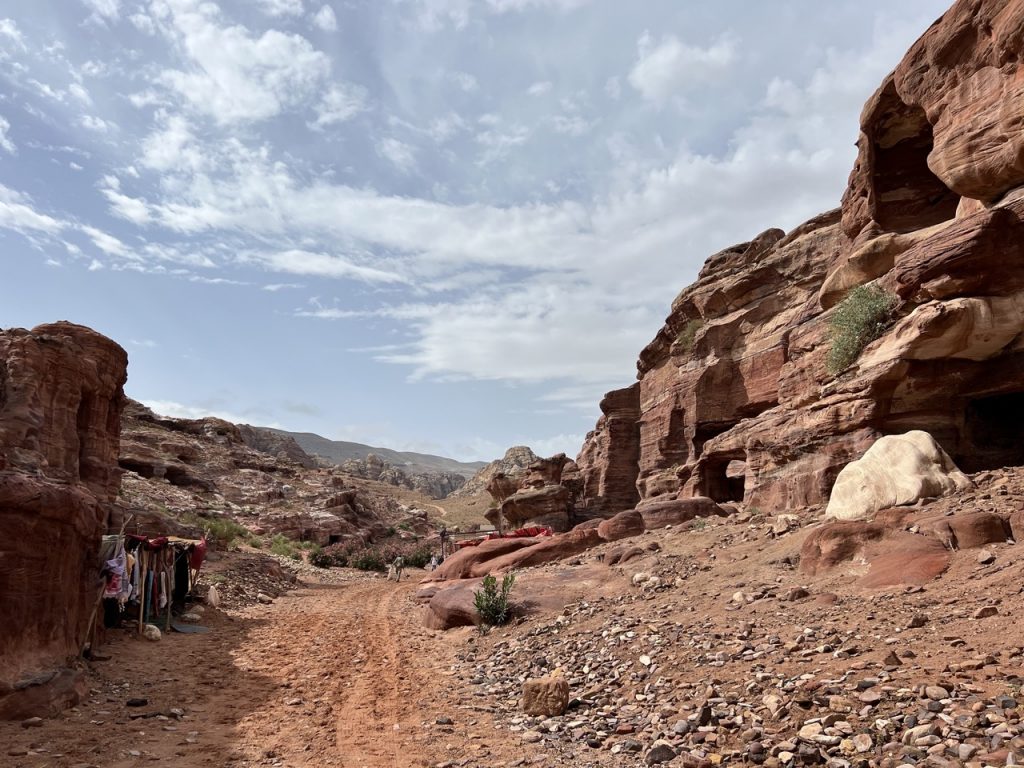
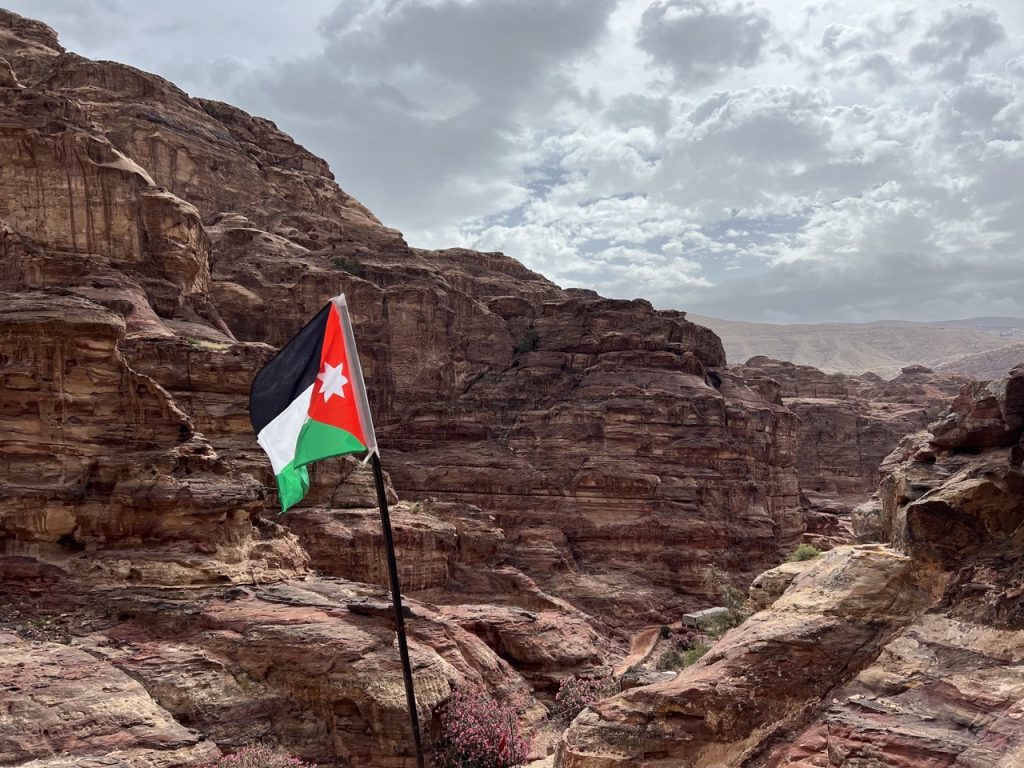
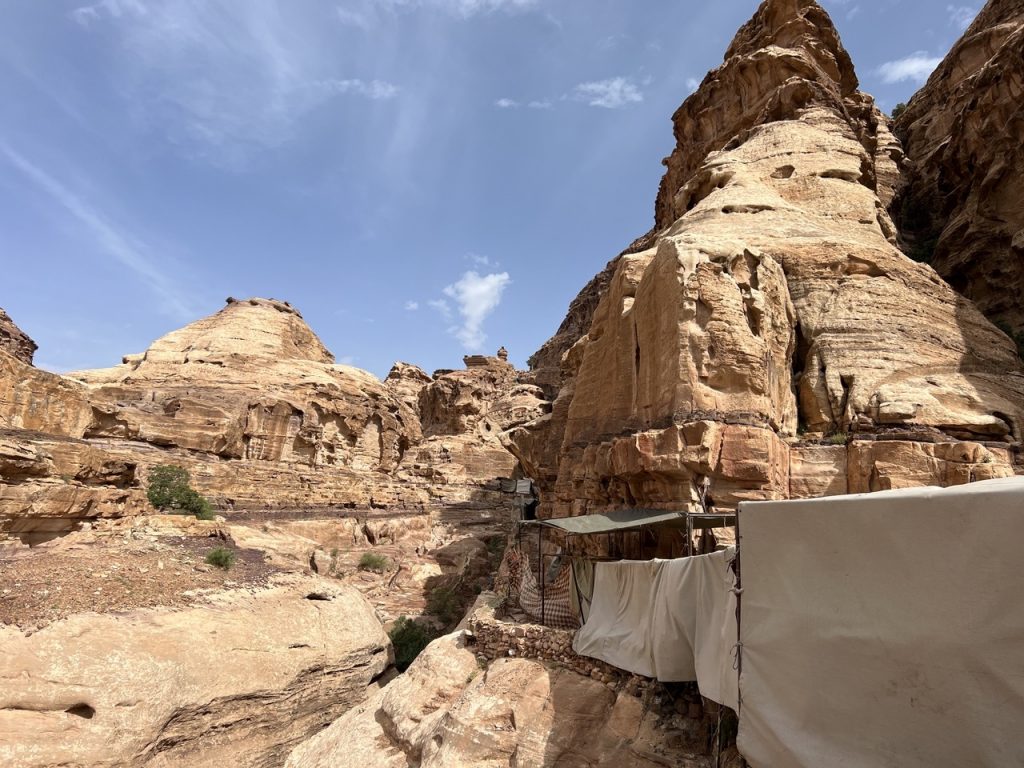
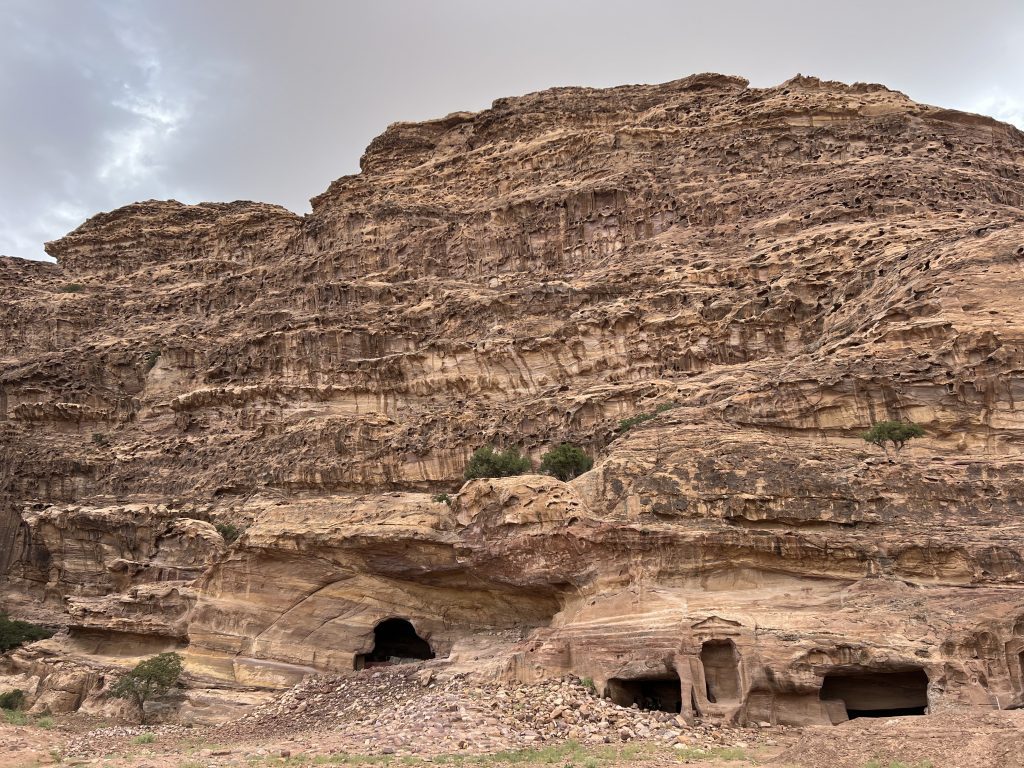
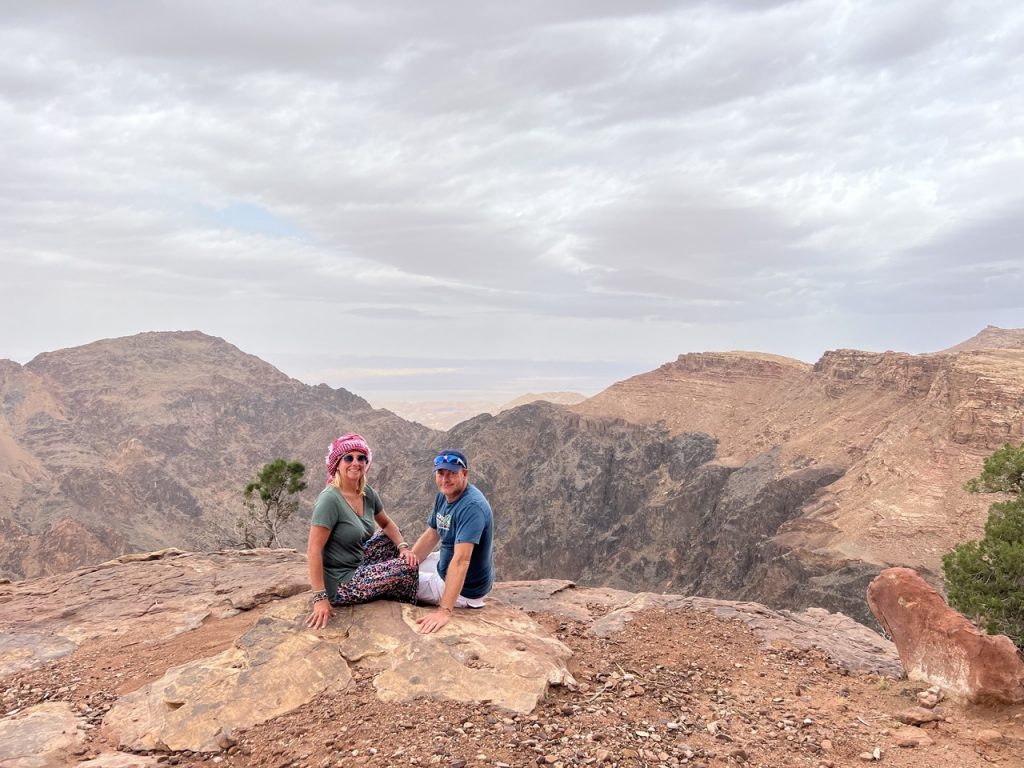
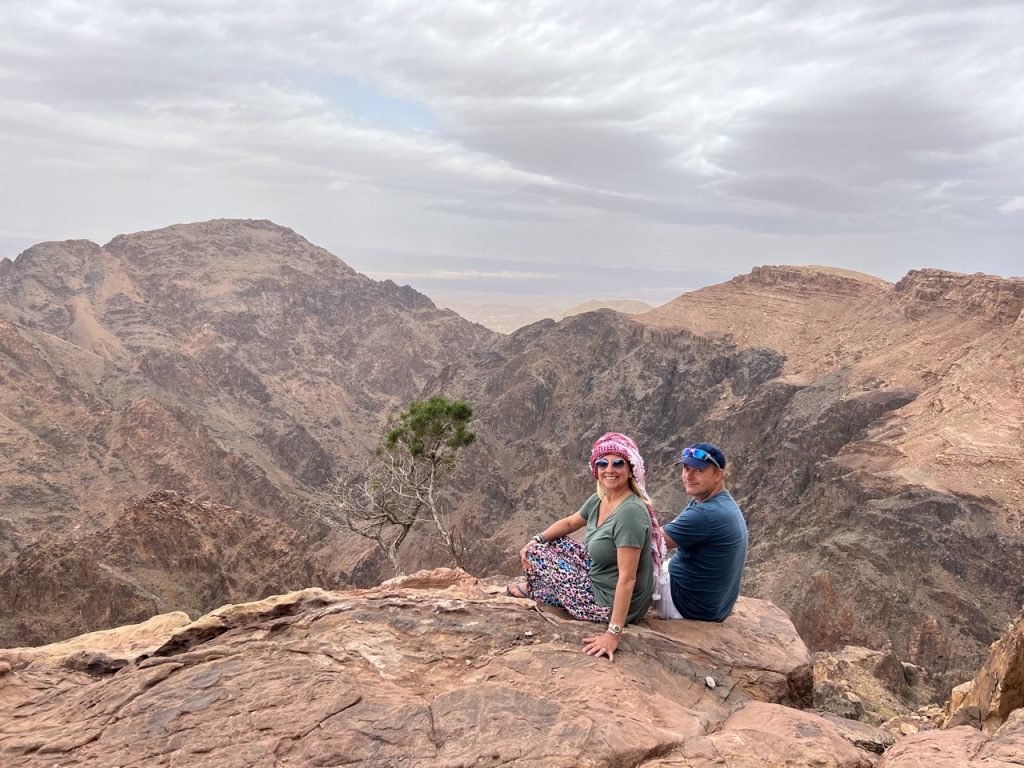
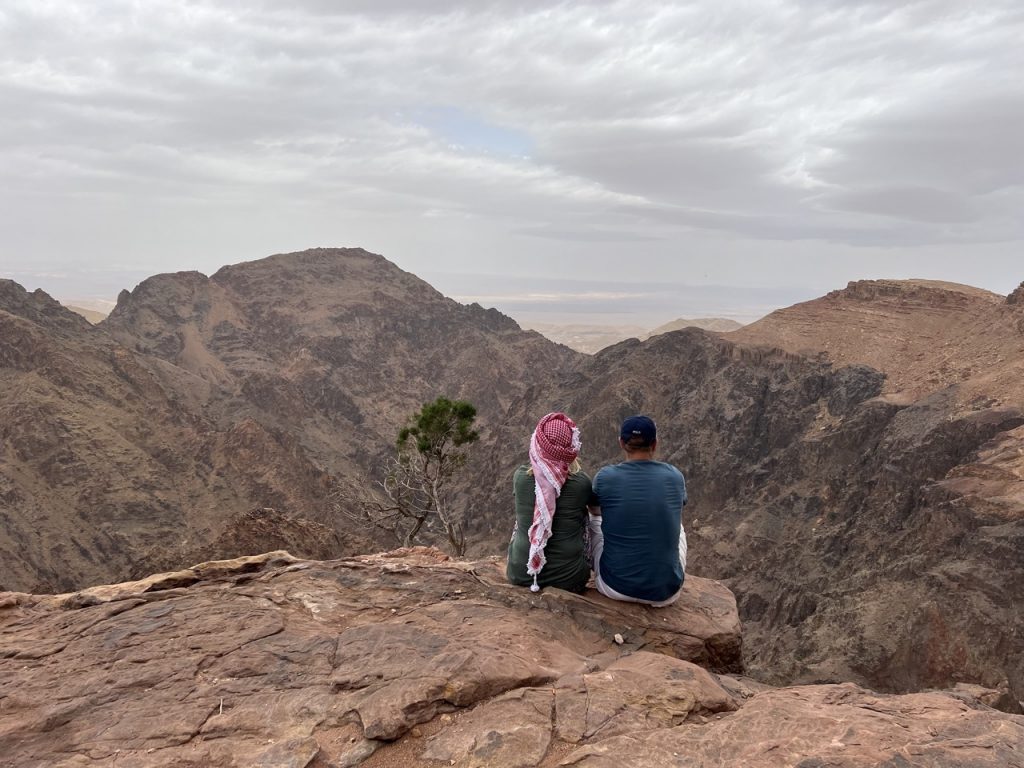
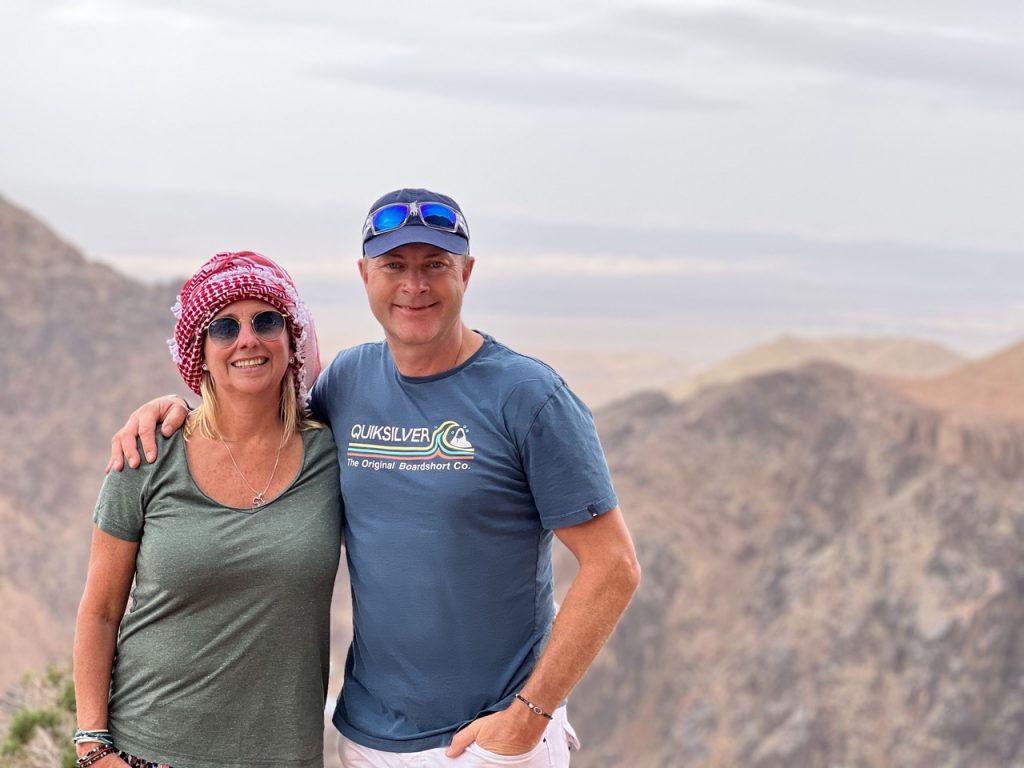
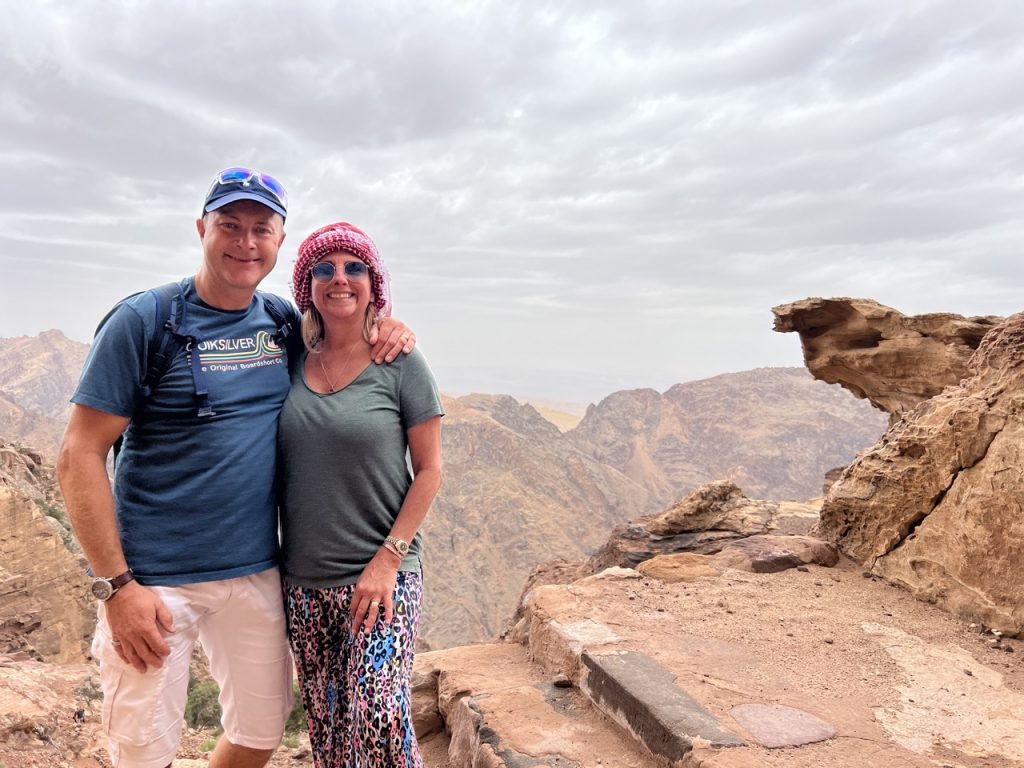
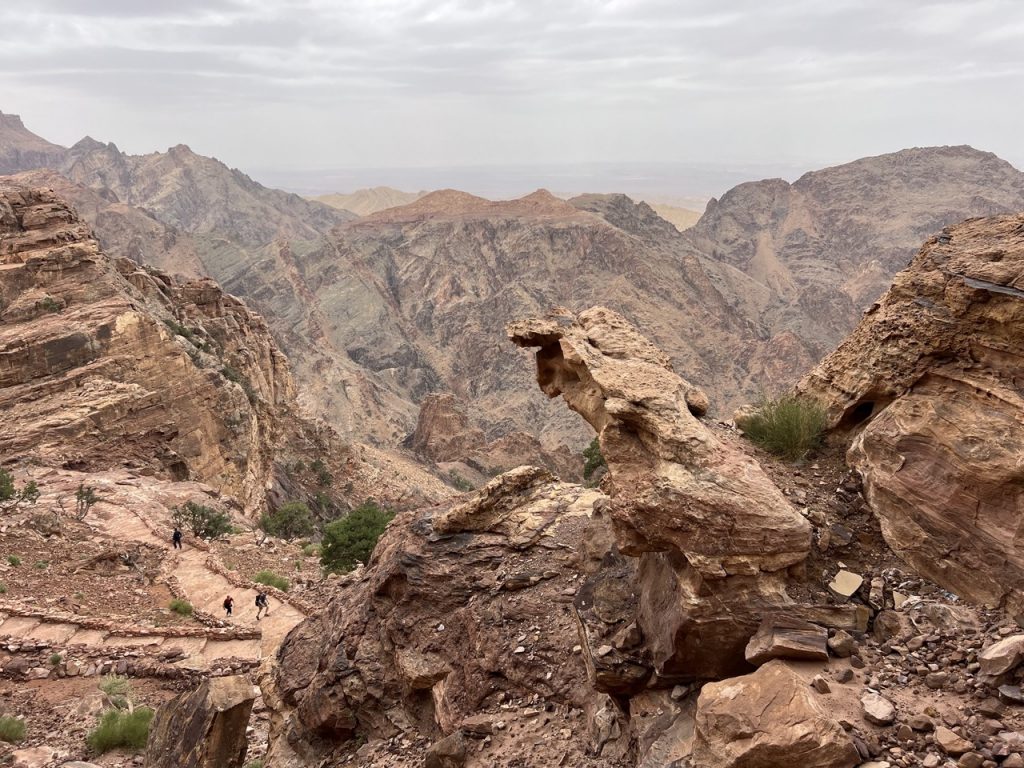
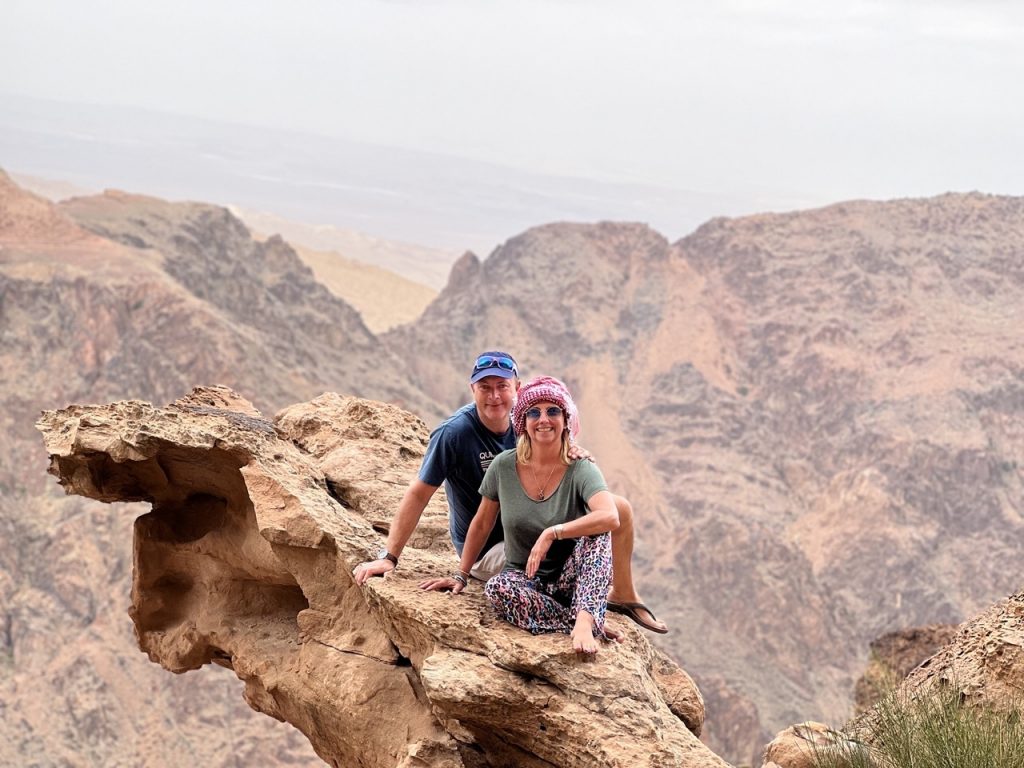
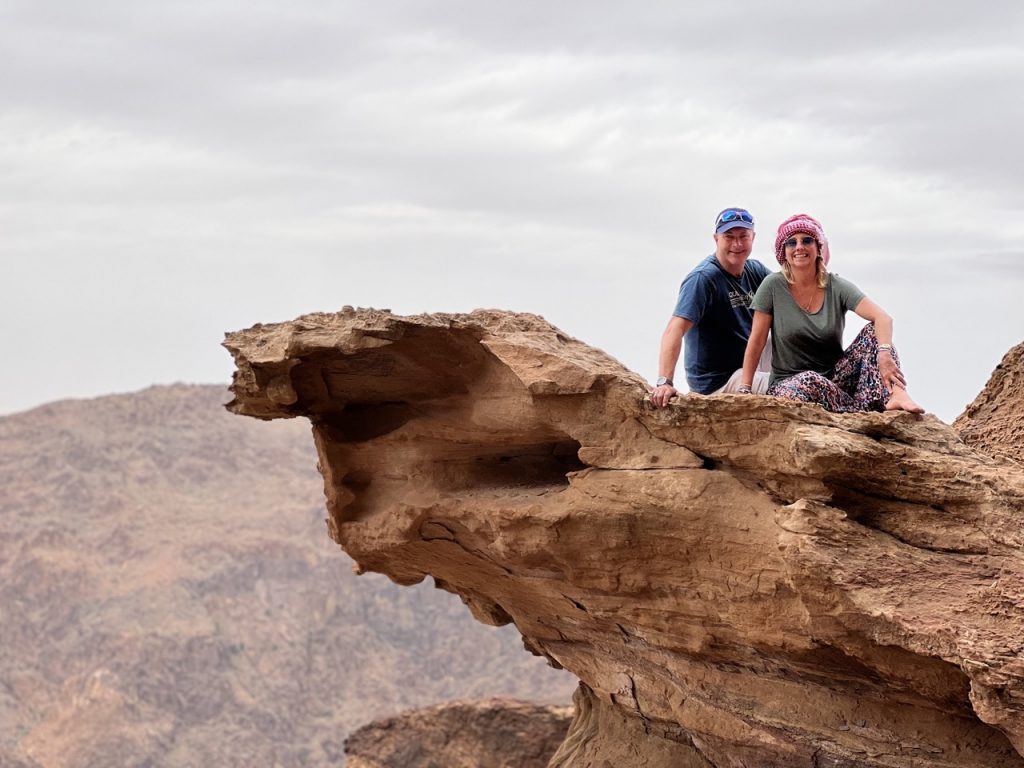
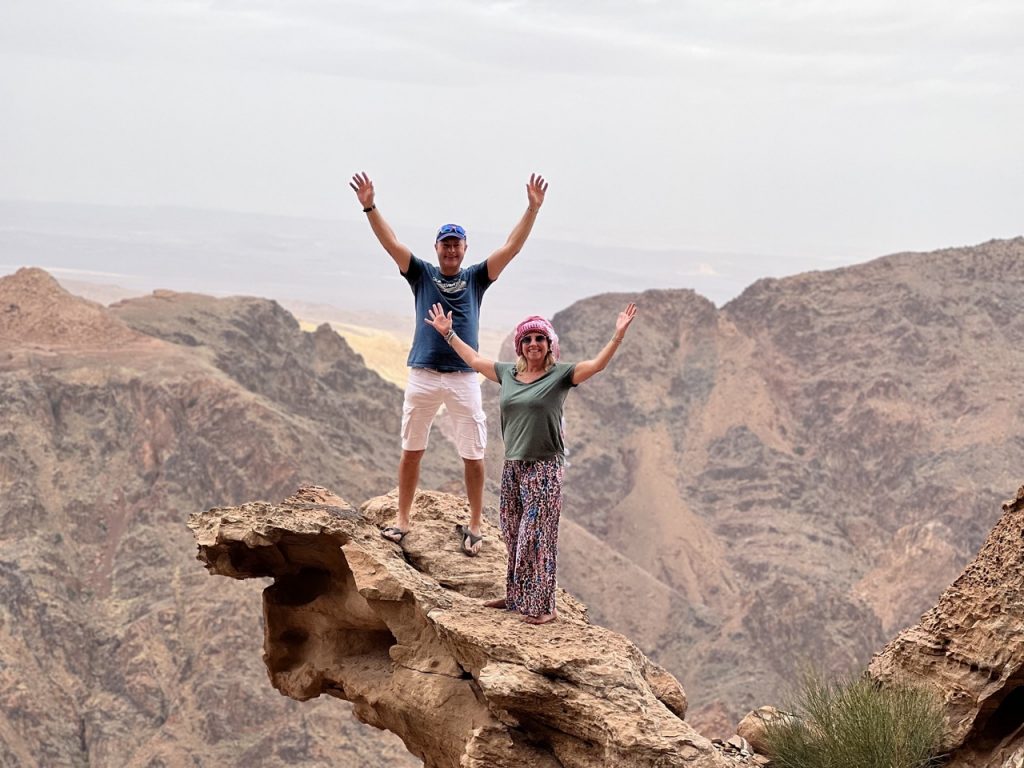
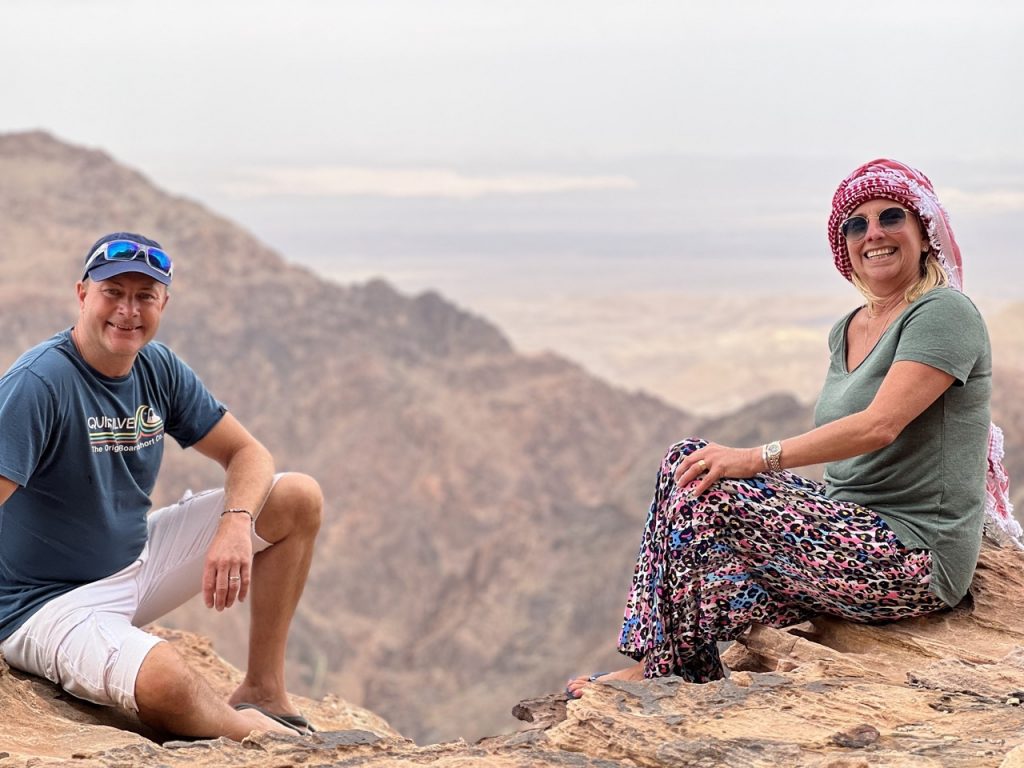
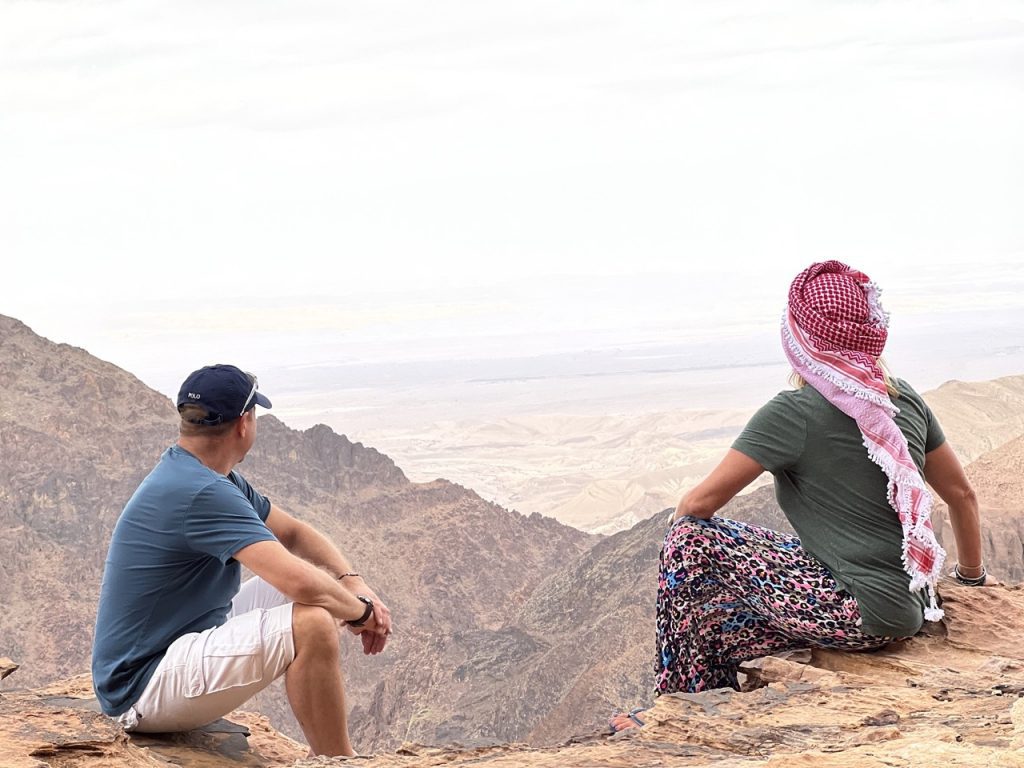
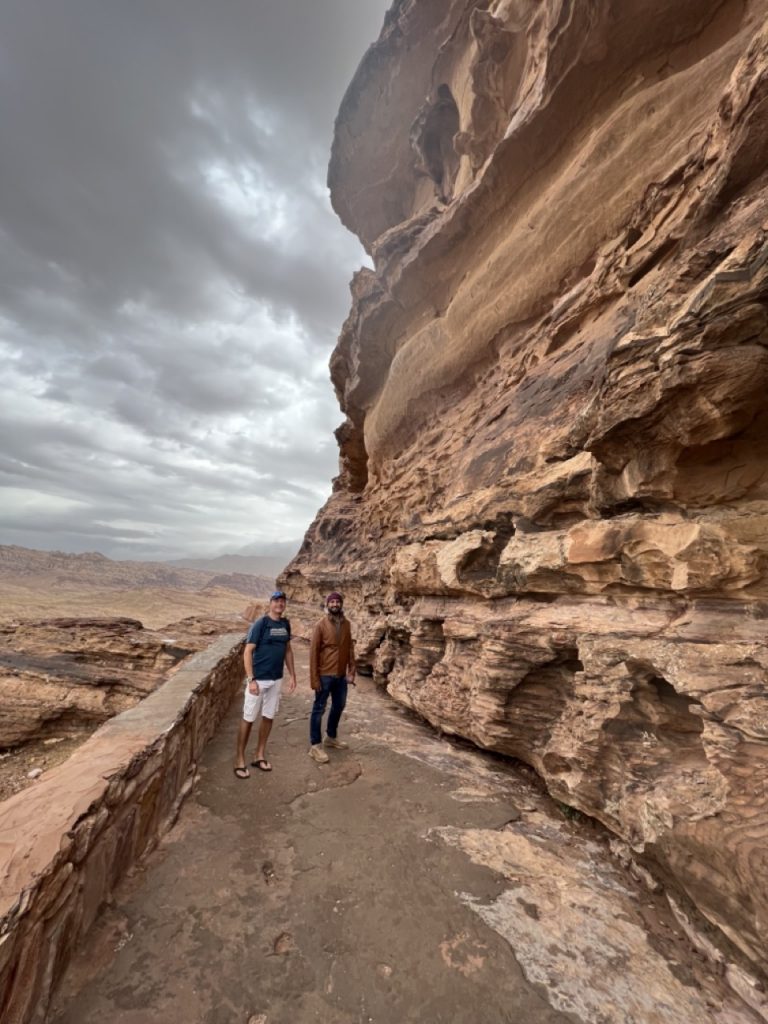
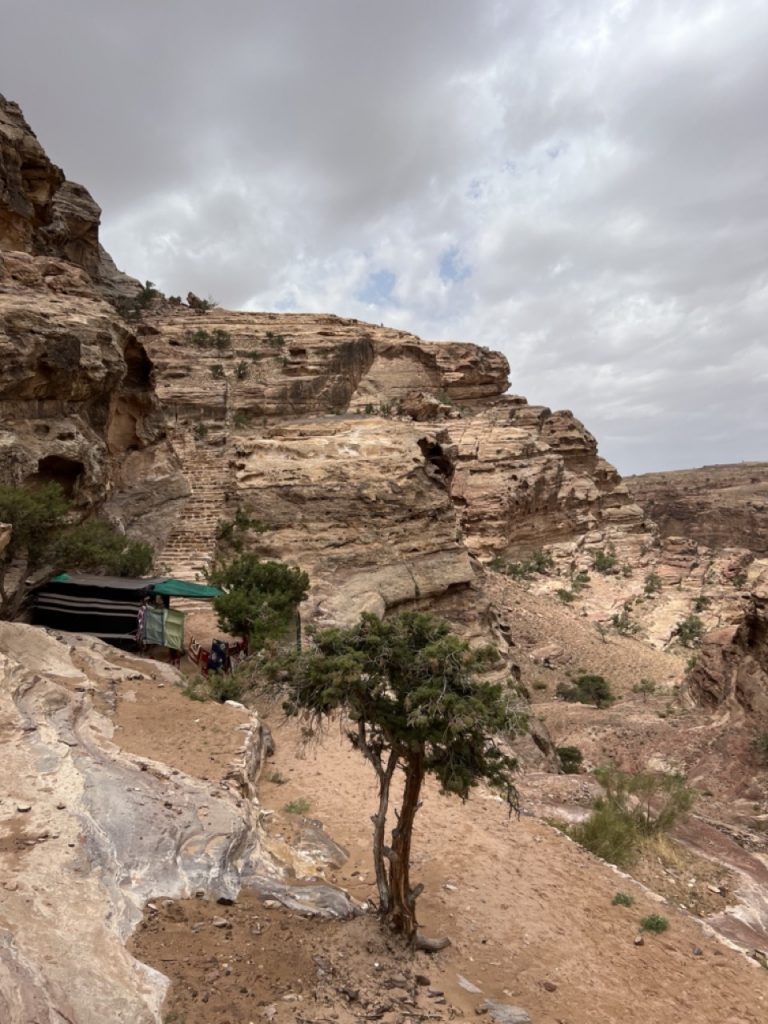
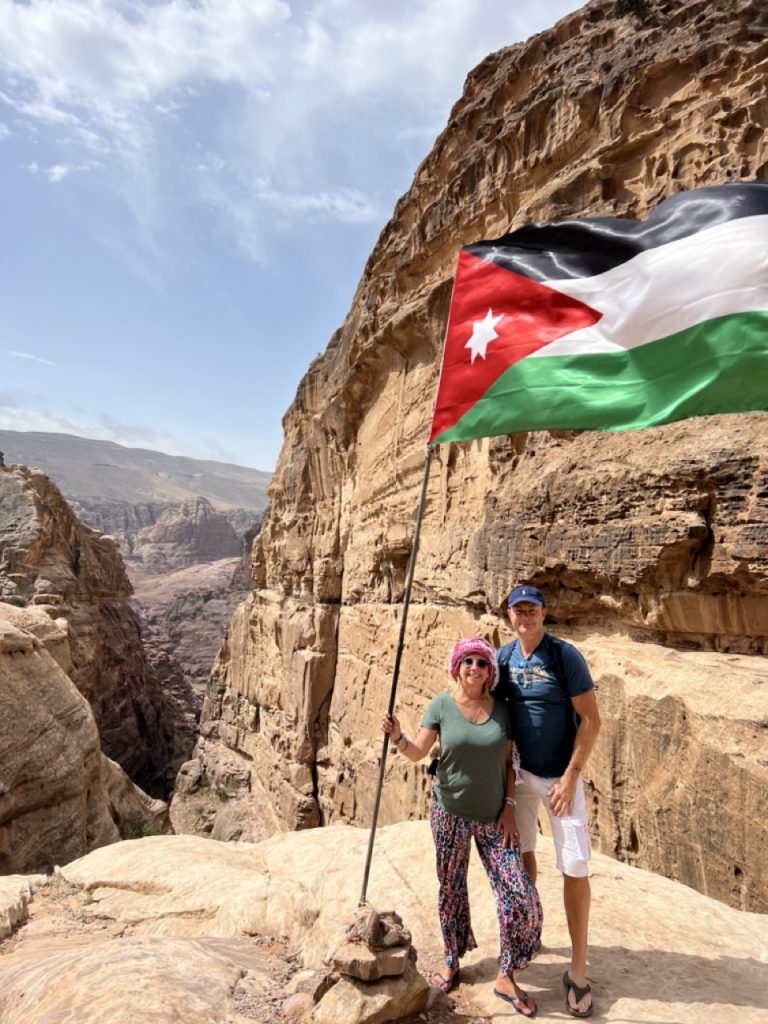
We rounded the corner after climbing the stairs and were greeted with this magnificent sight!
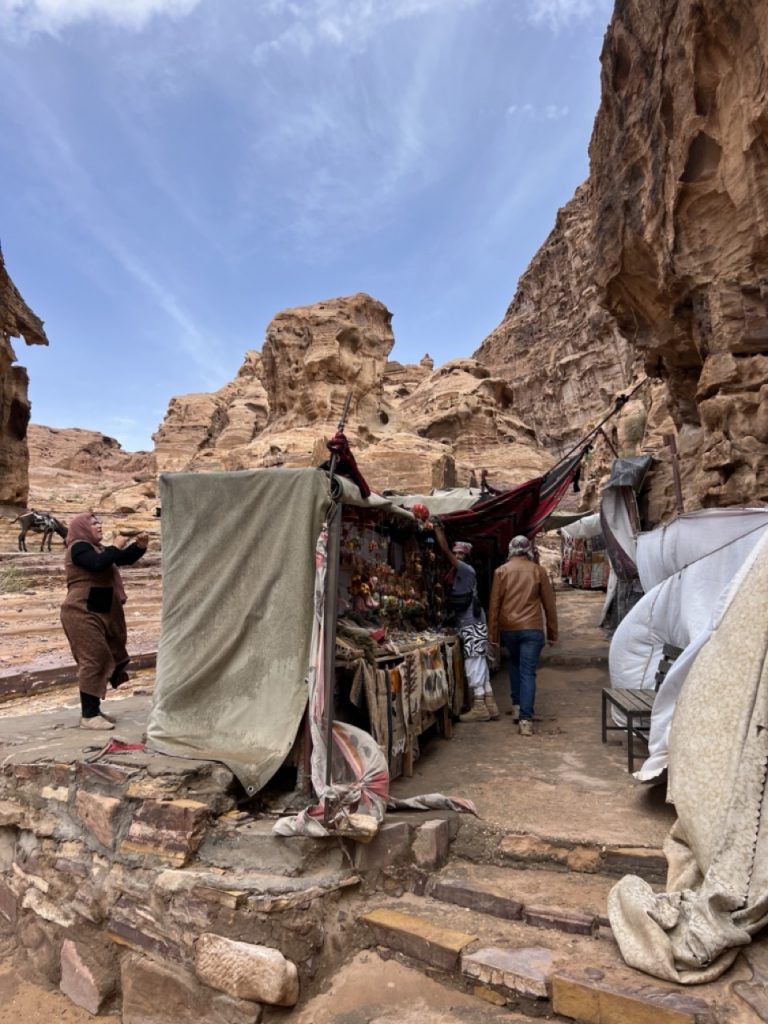
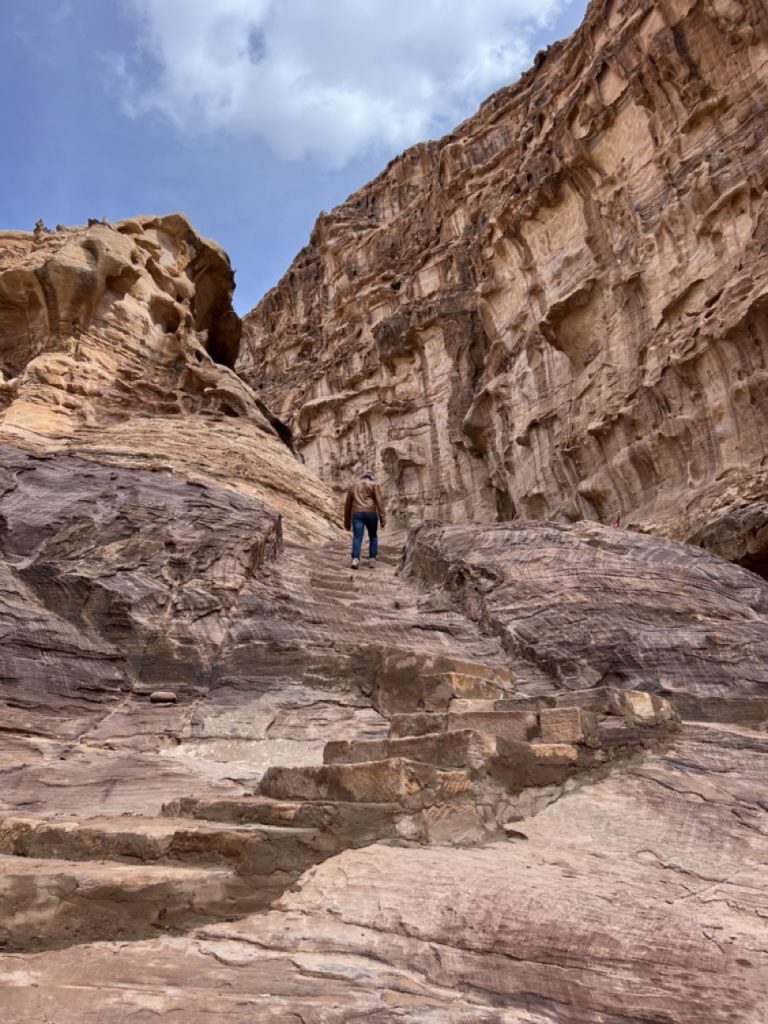
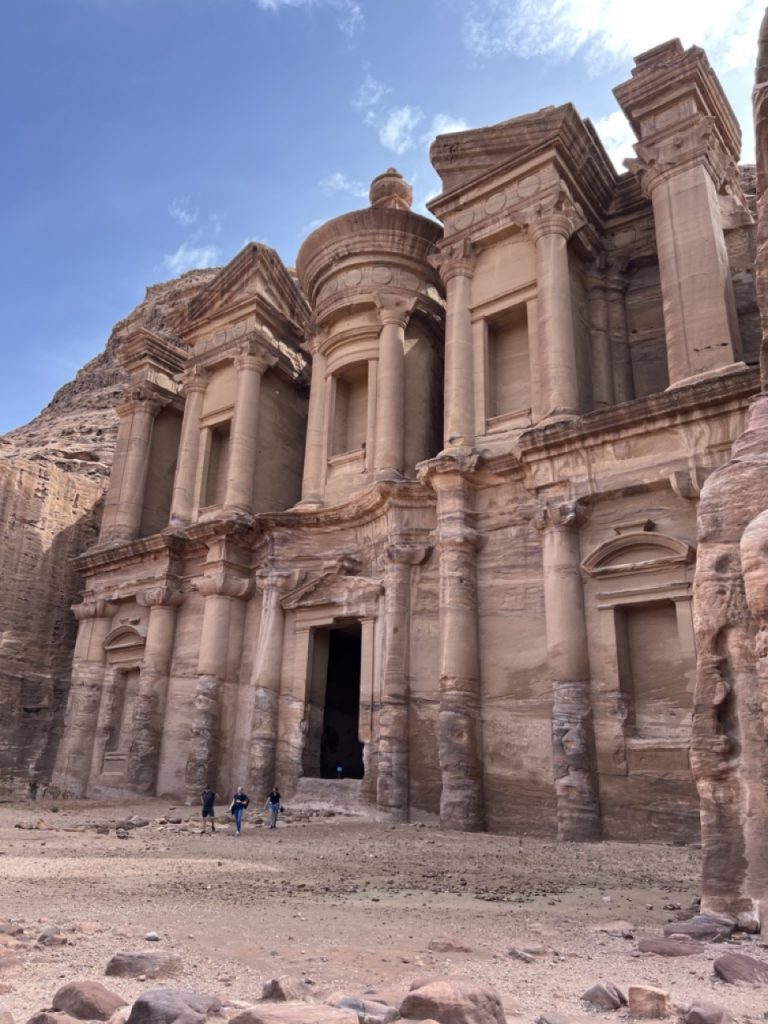
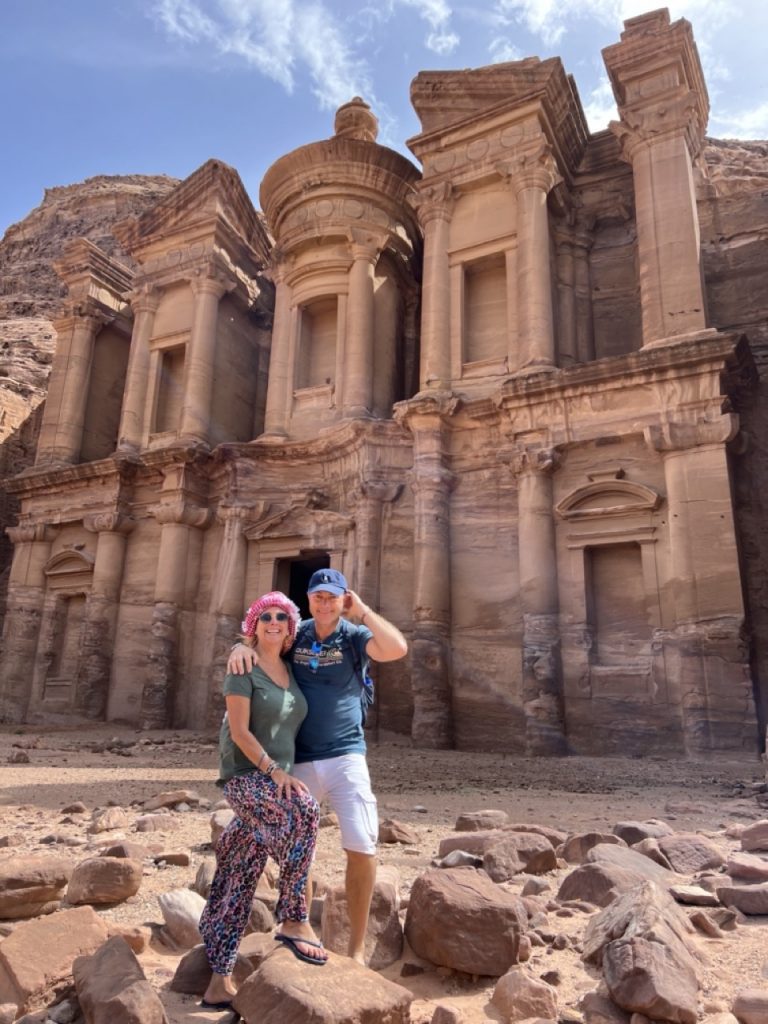
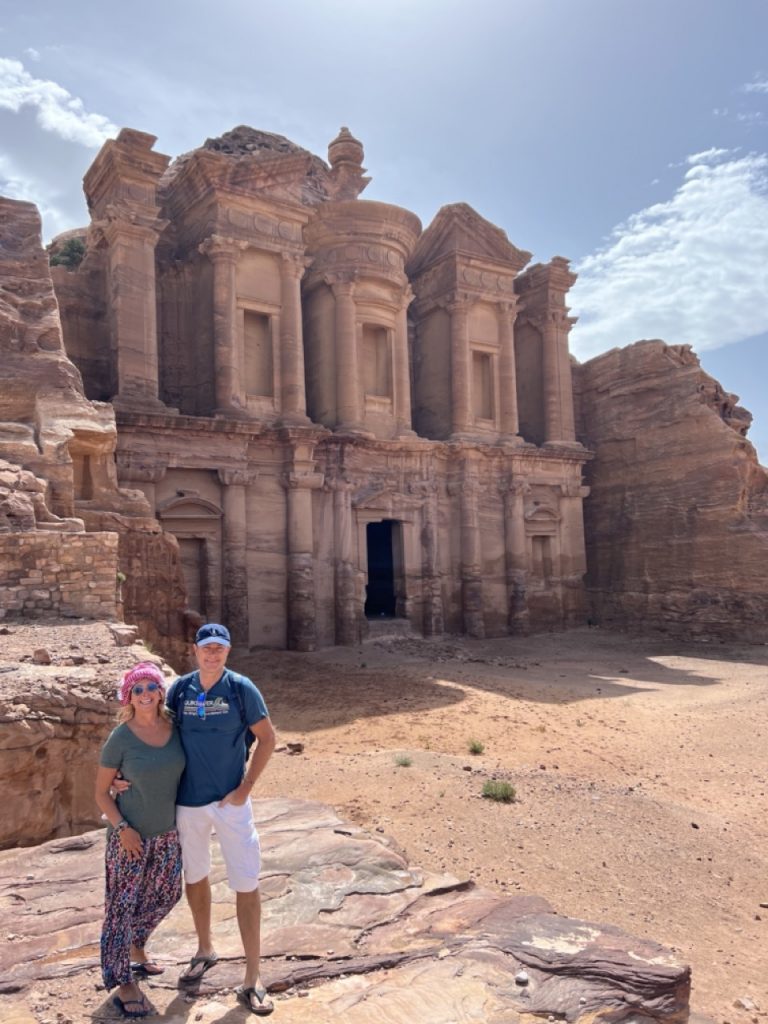
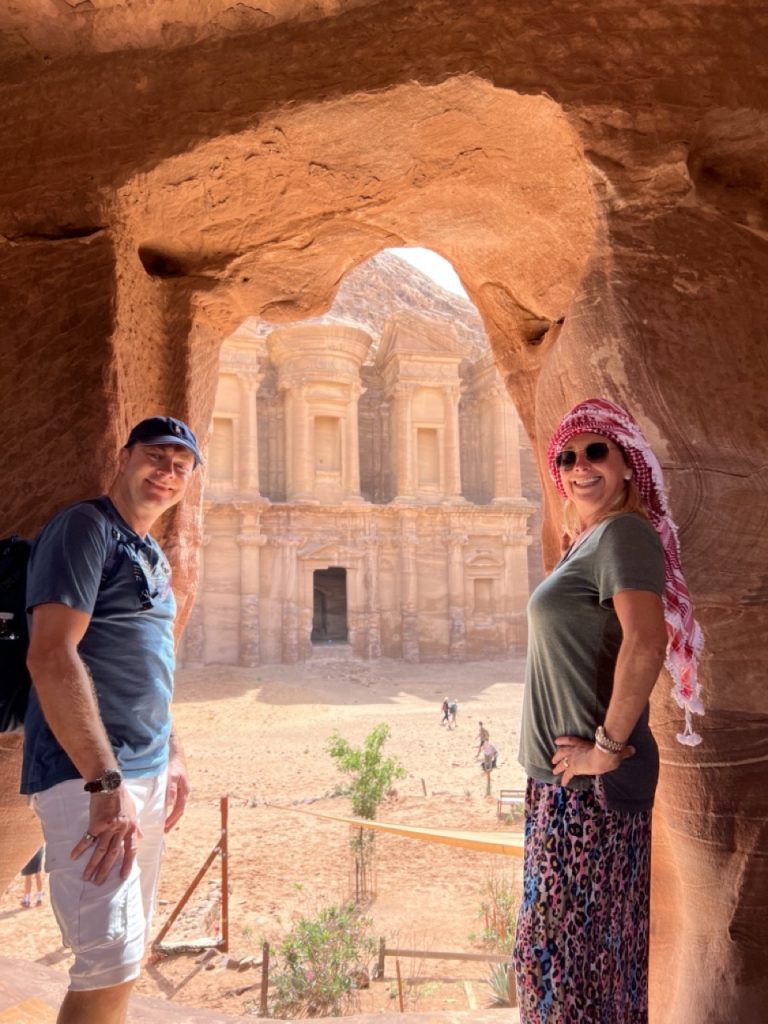
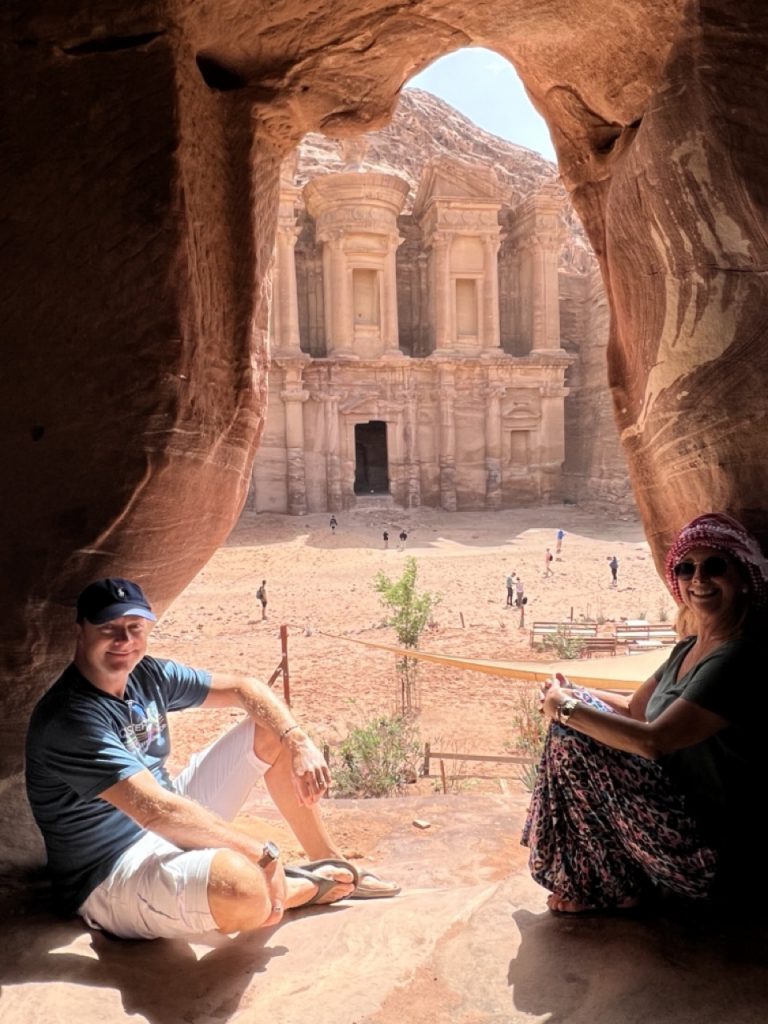
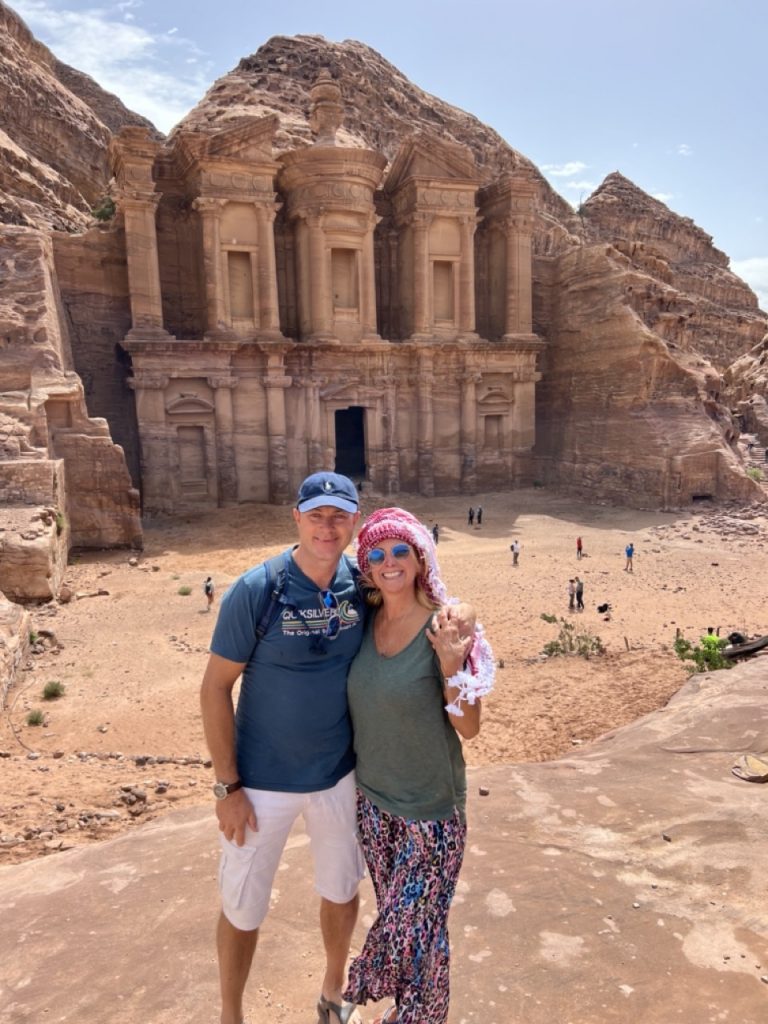
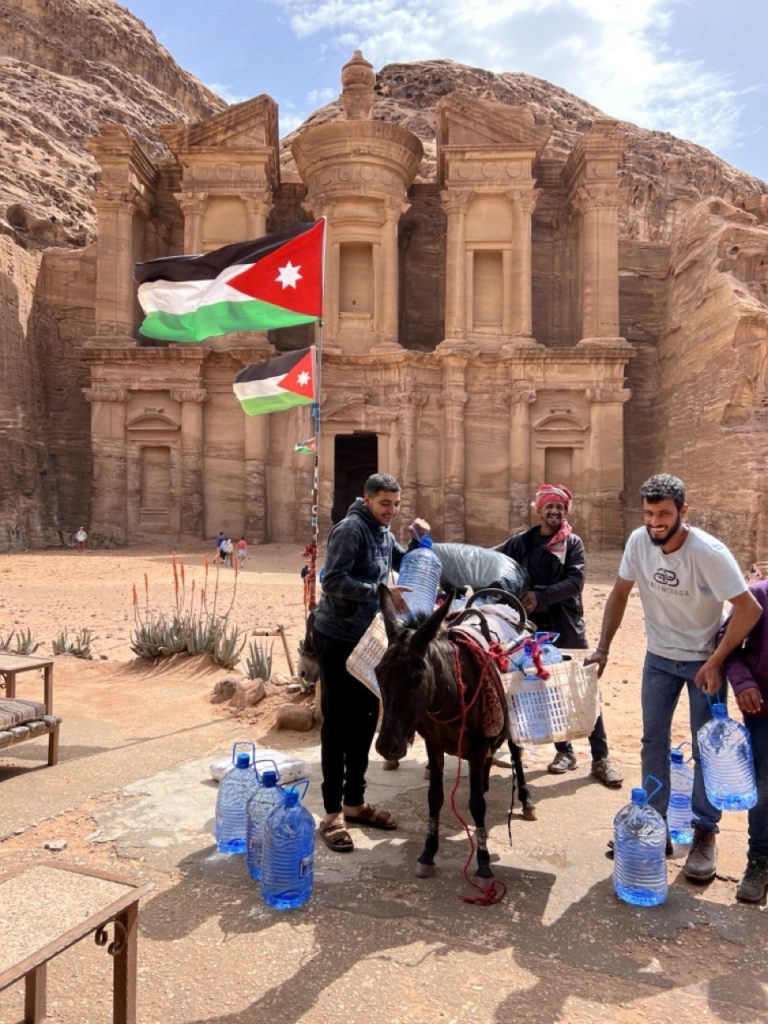
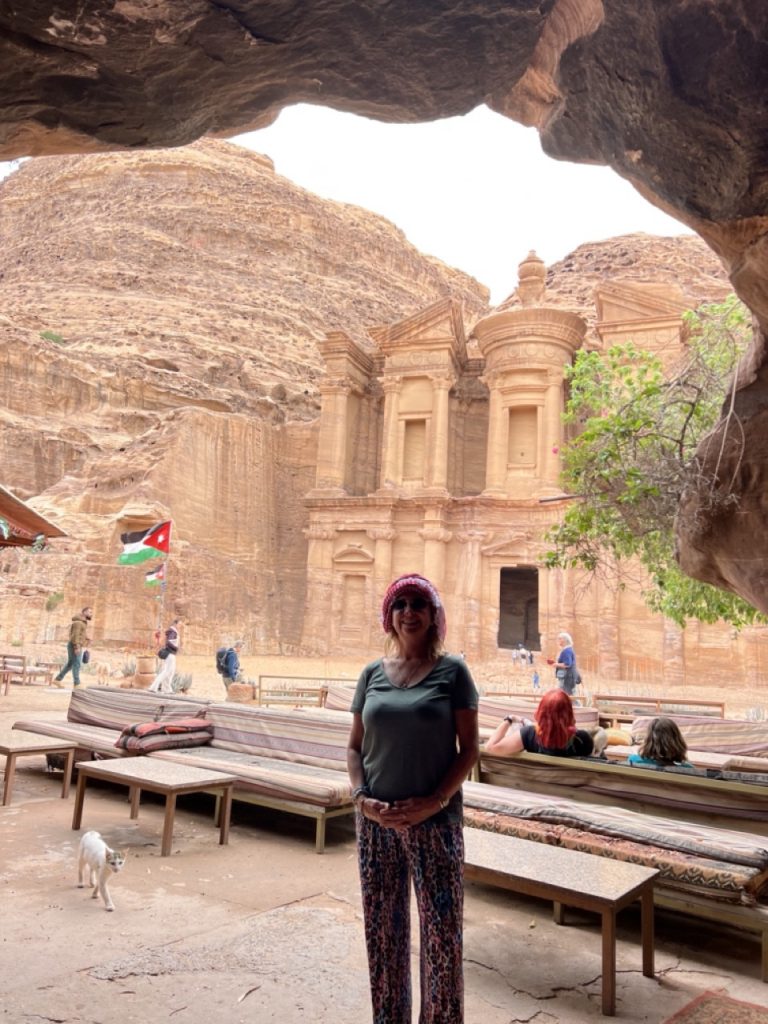
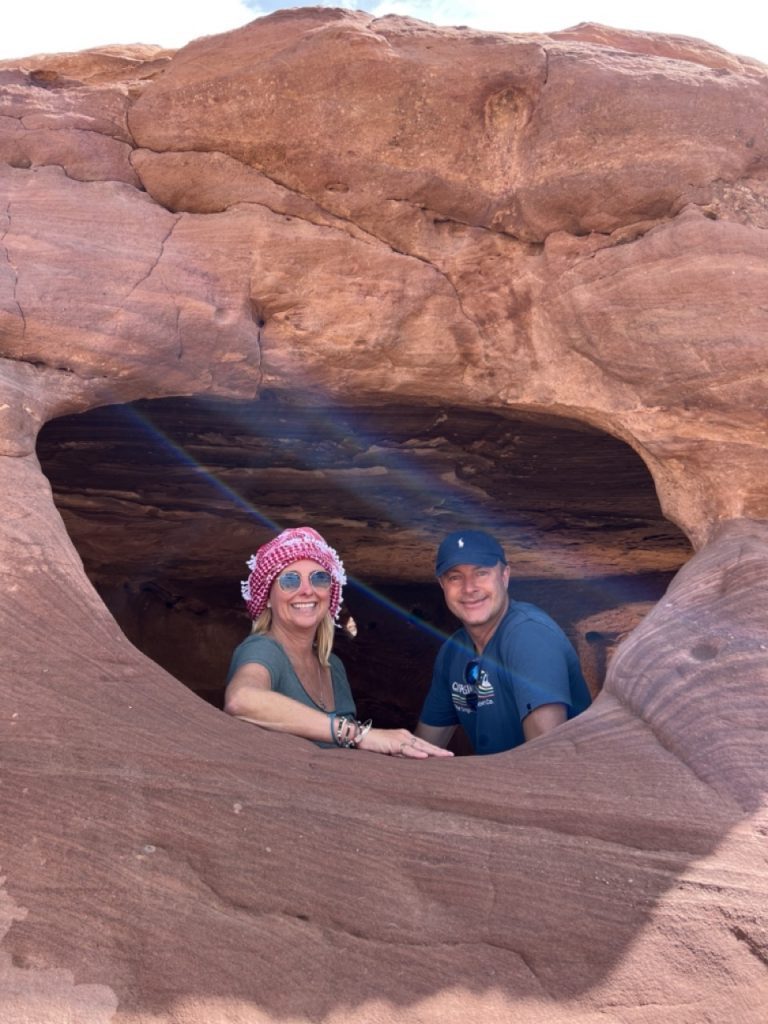
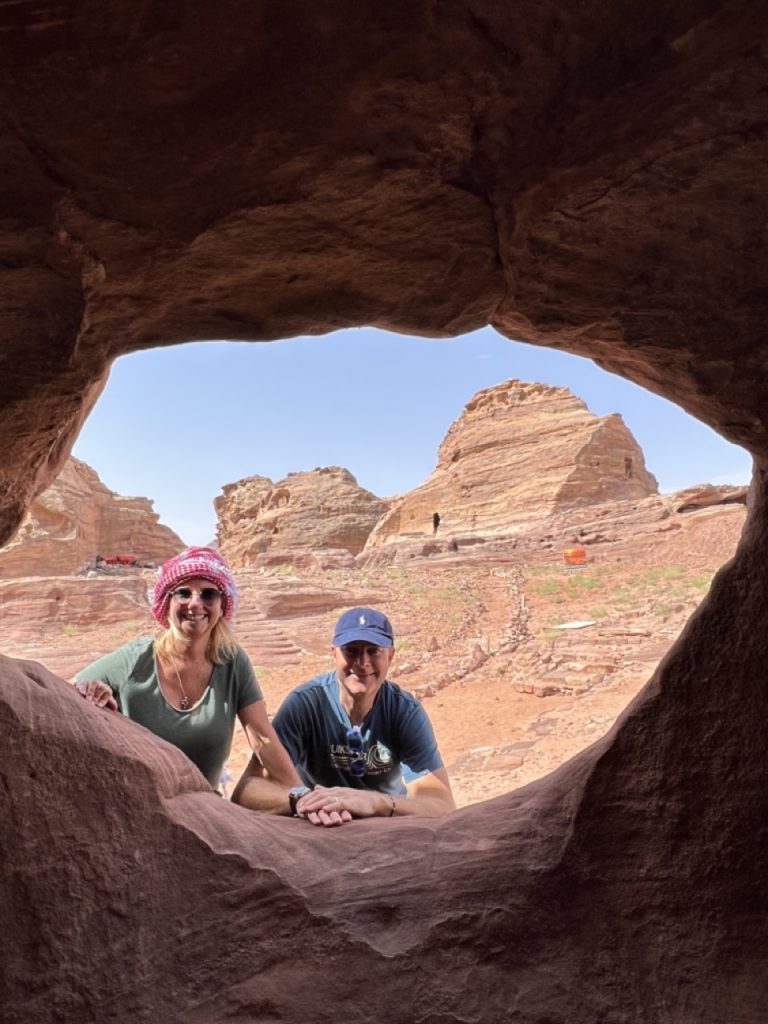
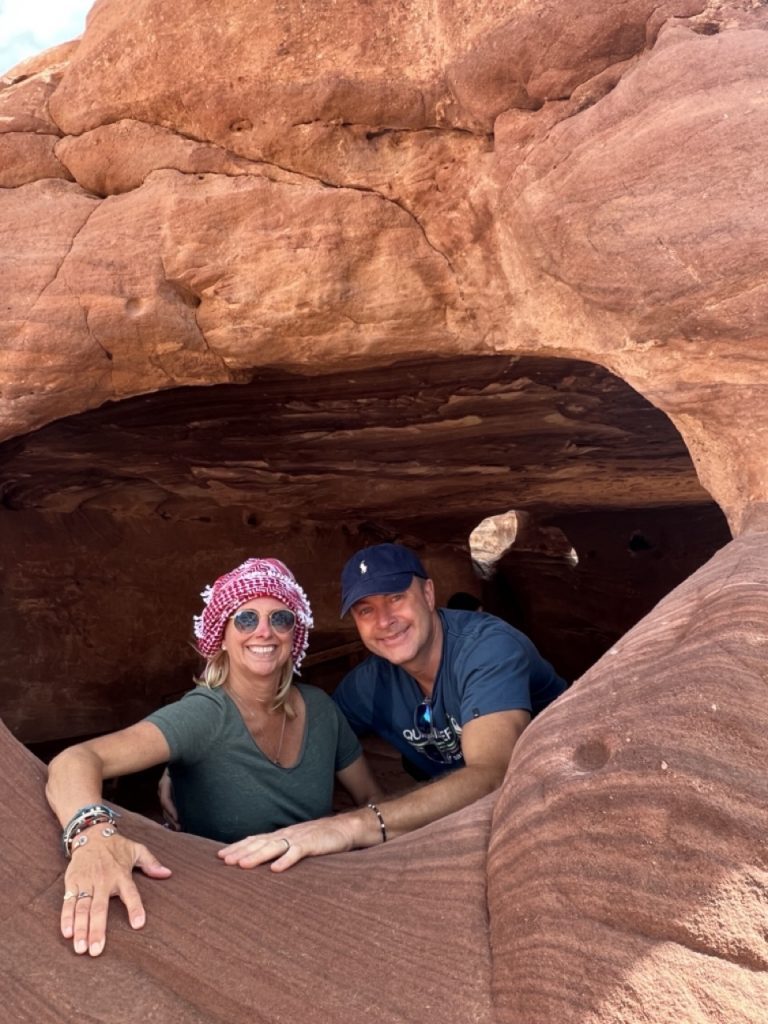
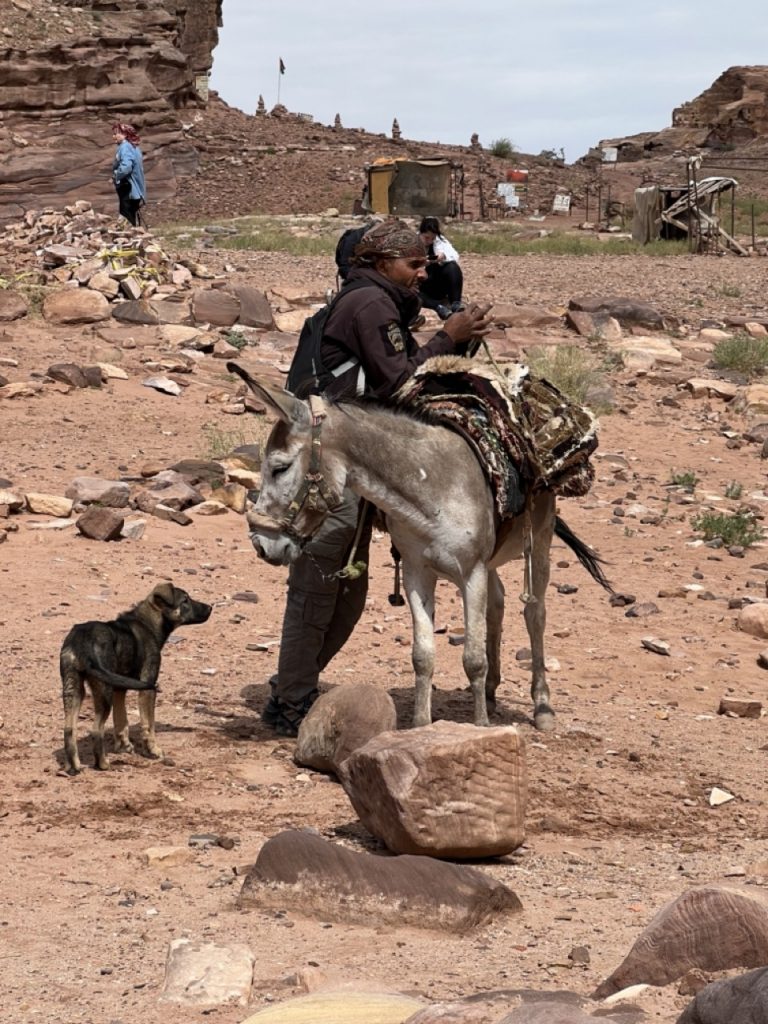
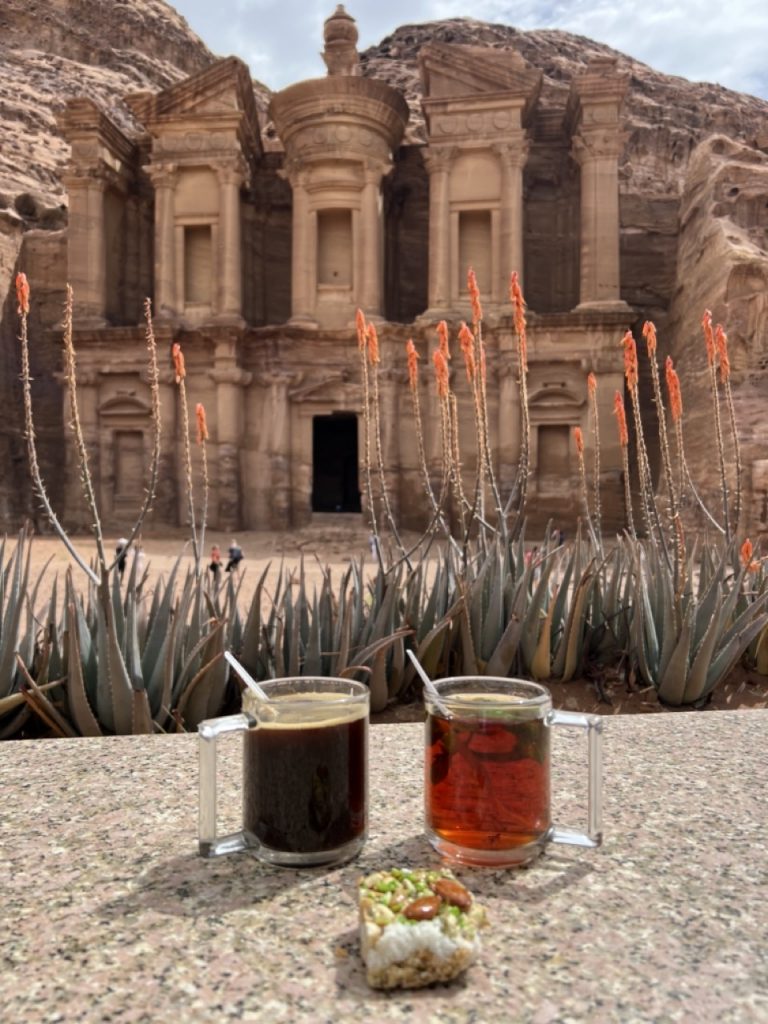
When we got to the end of the trail we had walked 16.5Kms… we wanted to visit little Petra and a local Bedouin took us in his car. So pleased that we stopped here. It is very similar to Petra but a fraction of the size and with way less crowds – not that we suffered with that at Petra. Officially known as Siq al-Barid, the site is just a 15 minute drive from Petra near Wadi Musa, and boasts the same high gorges and carved facades. The Arabic name of Little Petra literally means a cold canyon. Even though this site looks pretty similar to Petra, its purpose was a bit different. Historians believe that this place was built during the 1st century when the Nabatean city thrived, and Litte Petra was some kind of suburb, so you will not find here tombs, but rather houses which were used by rich citizens or by travellers arriving in Petra for business. The most notable sight here in Little Petra is Painted House, located in one of the open sections. Painted House is a biclinium, a smaller dining area, which is famous for the frescoes you can see on the ceiling.
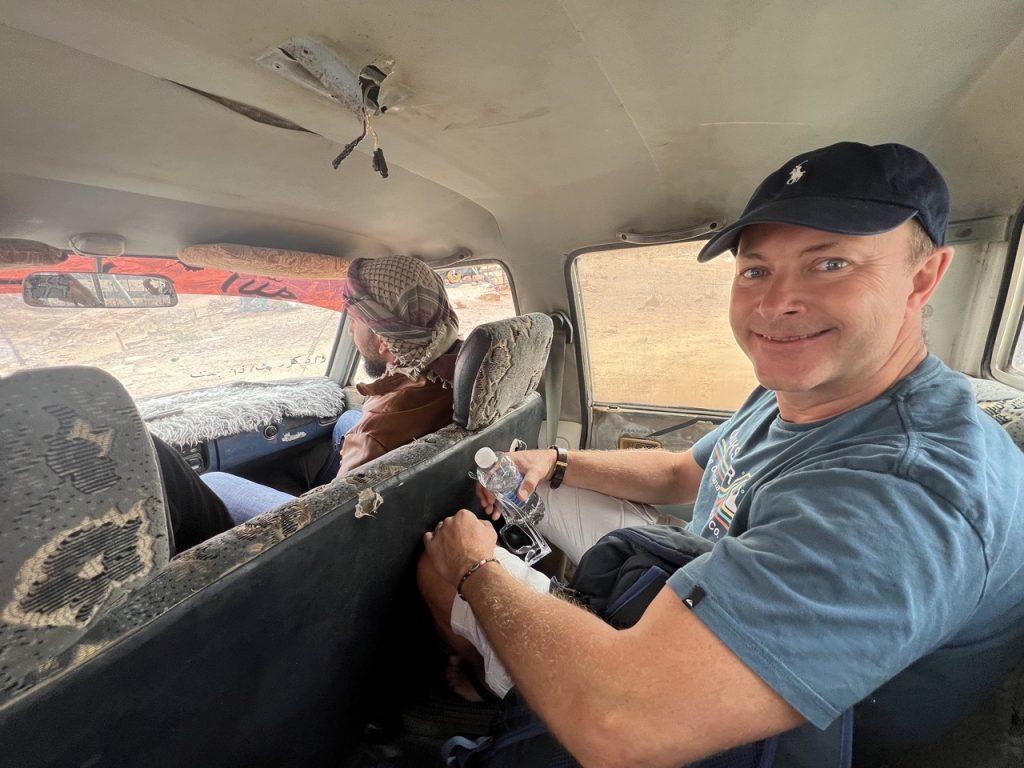
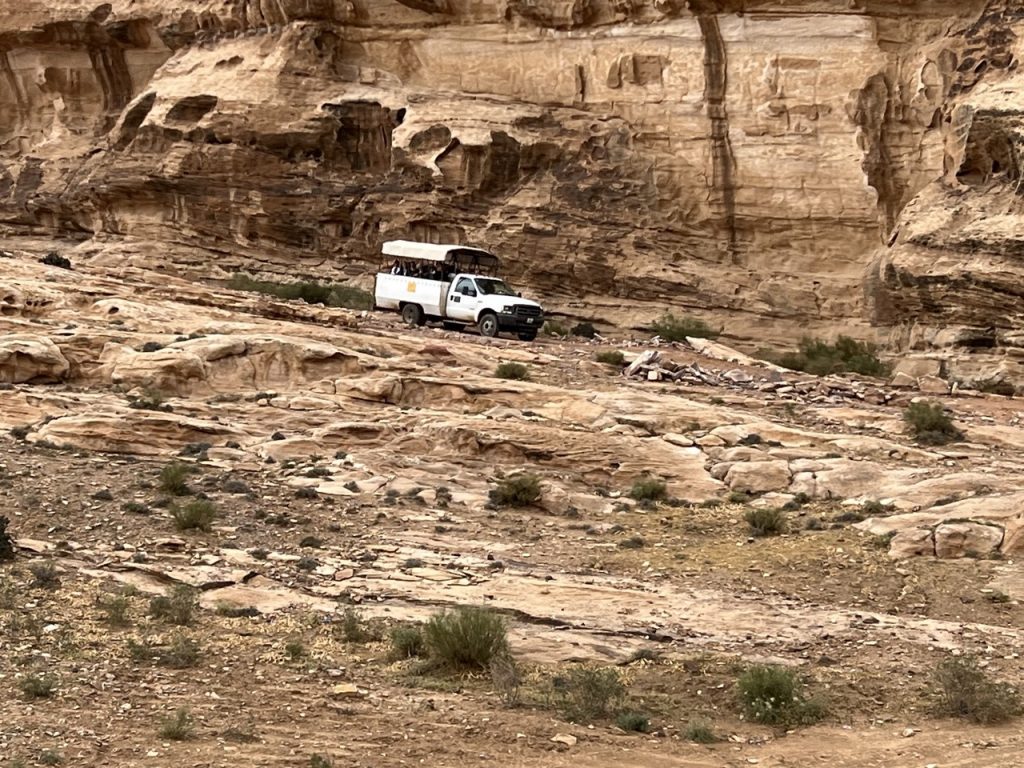
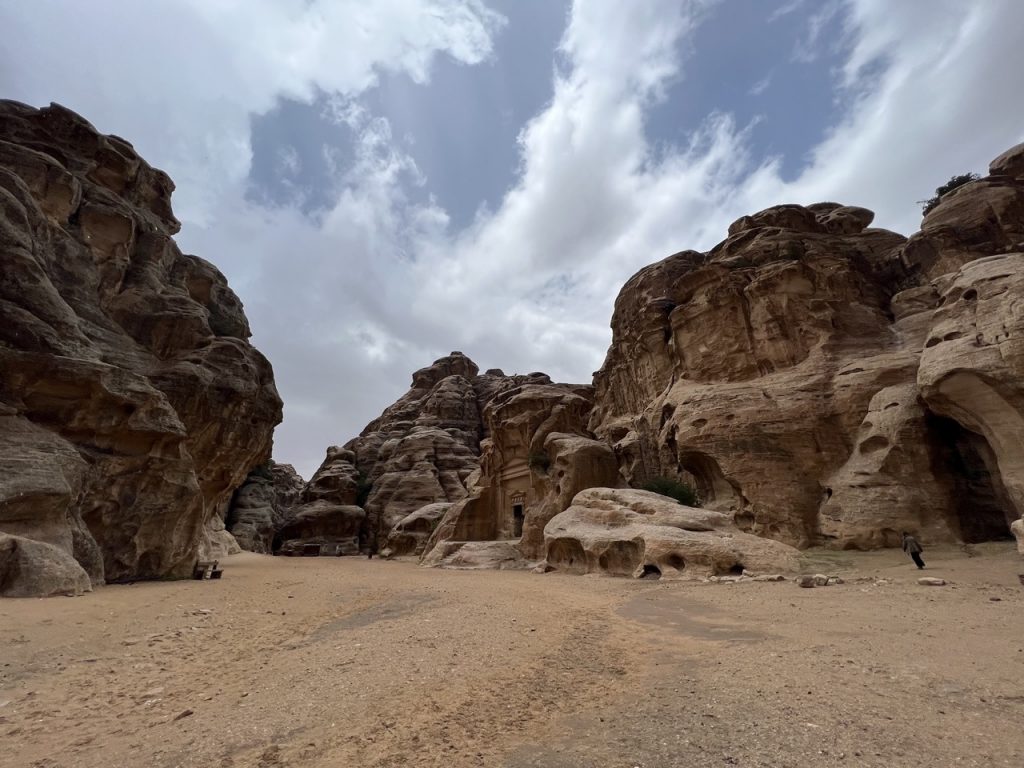
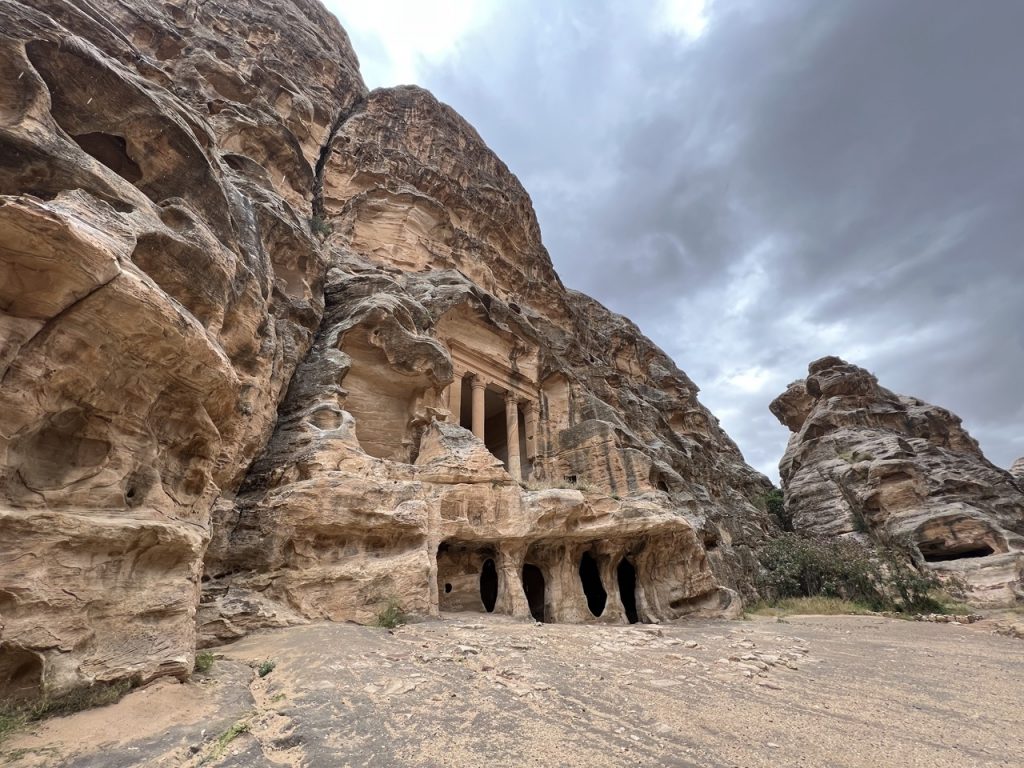
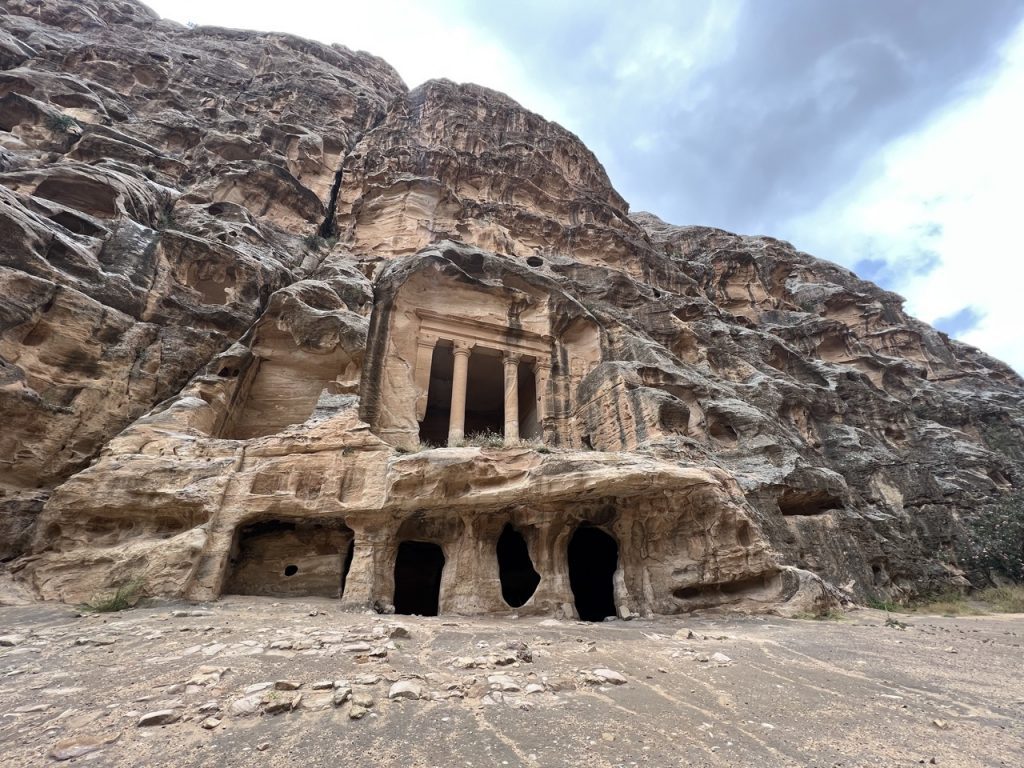
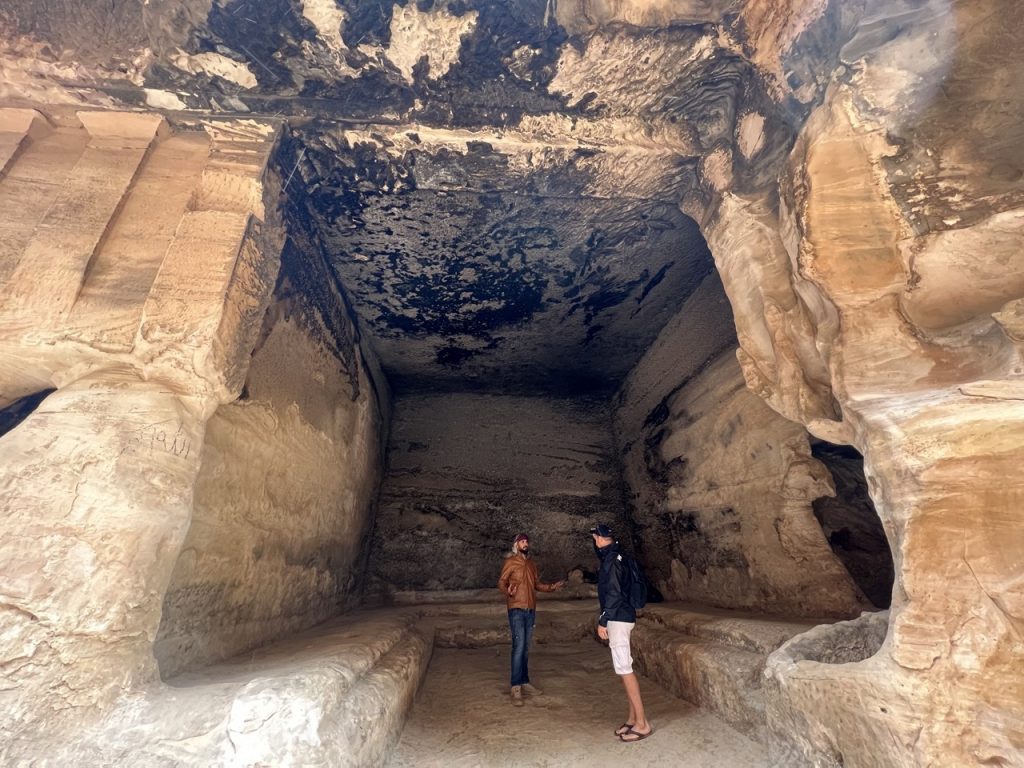
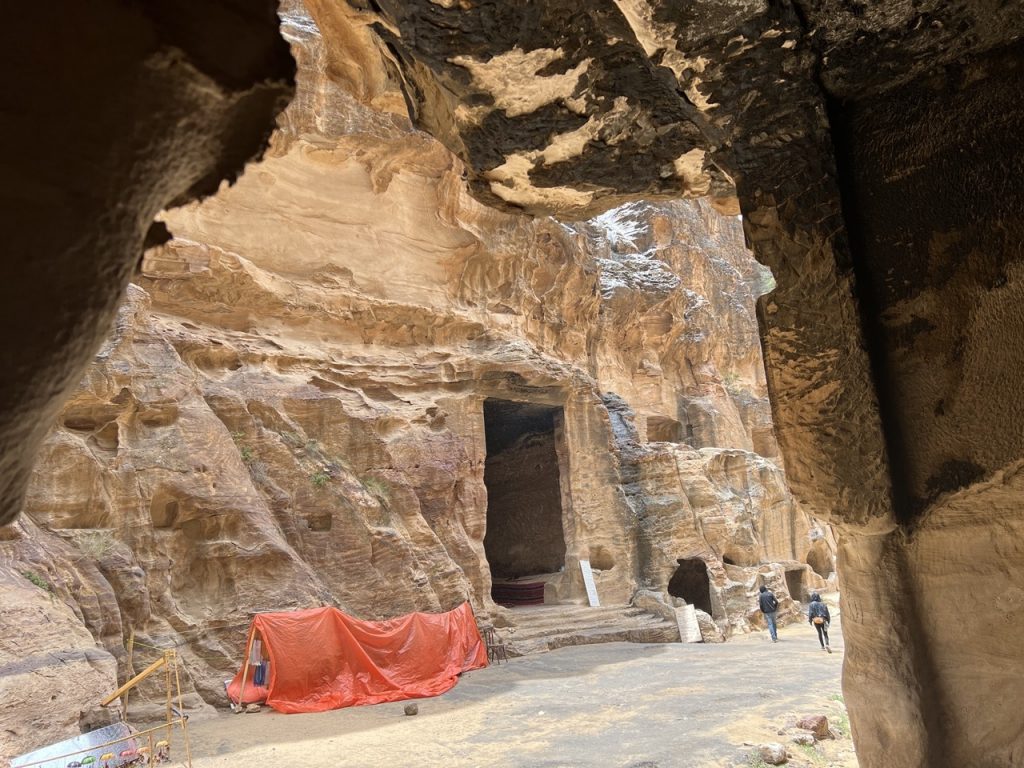
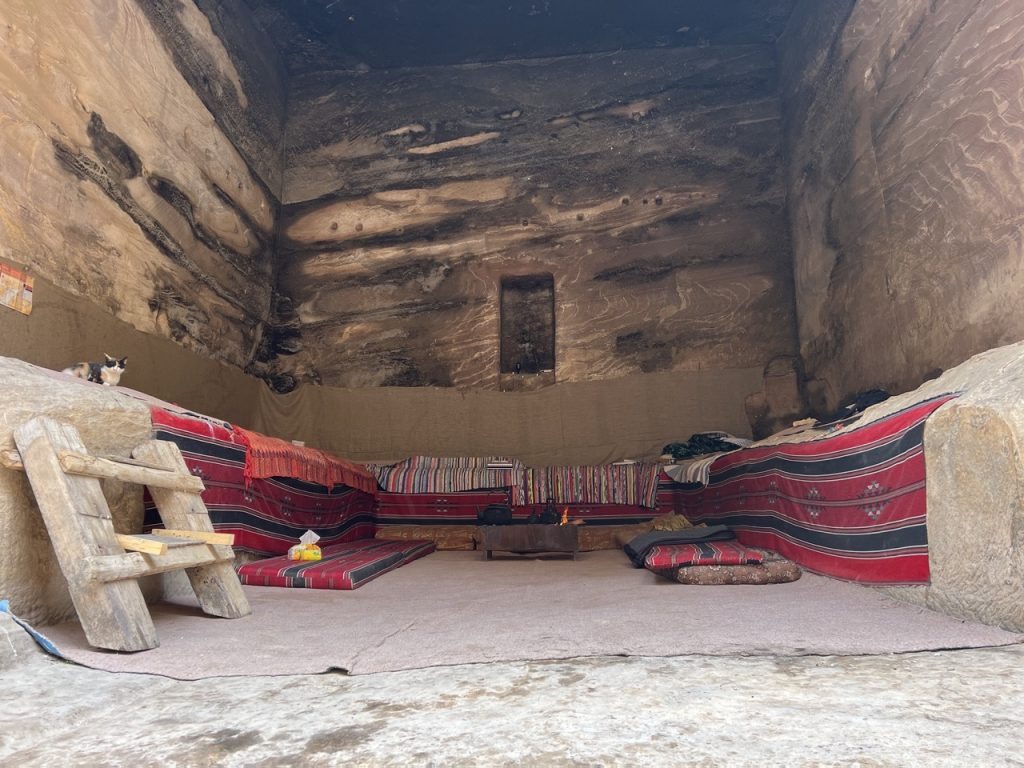
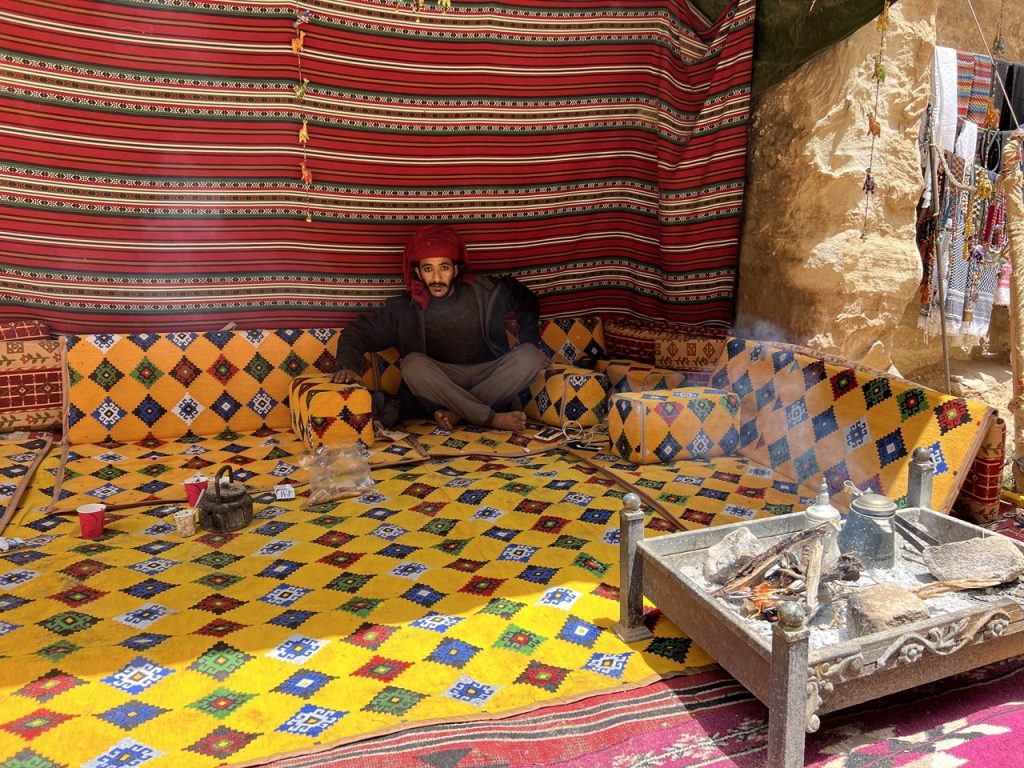
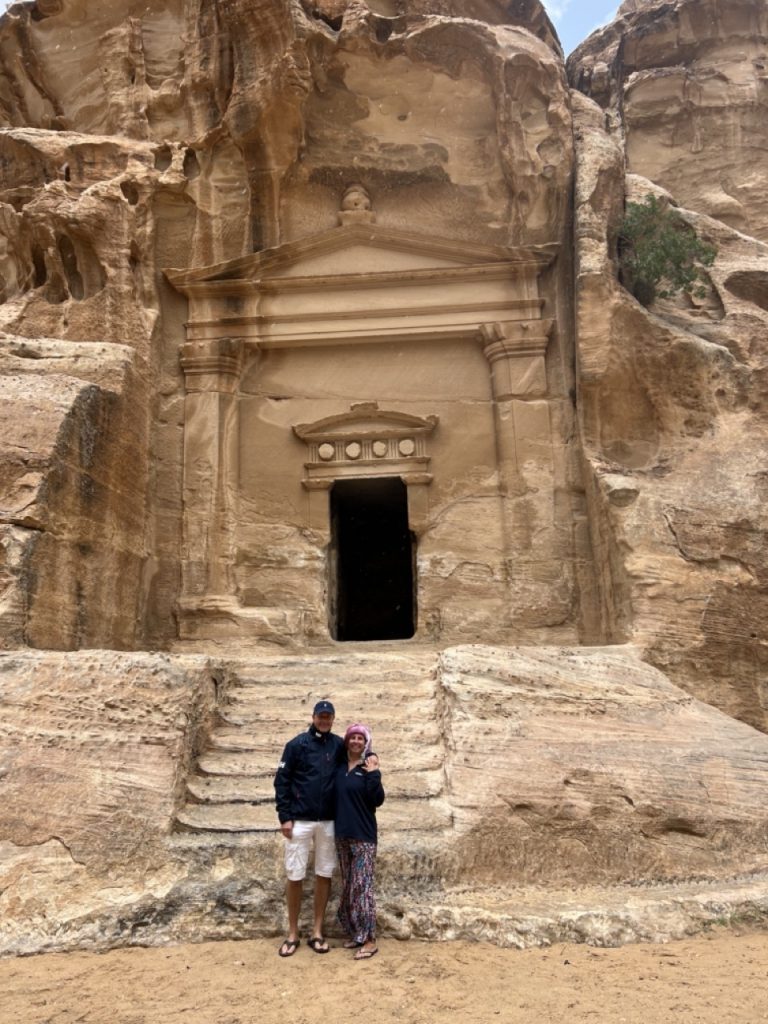
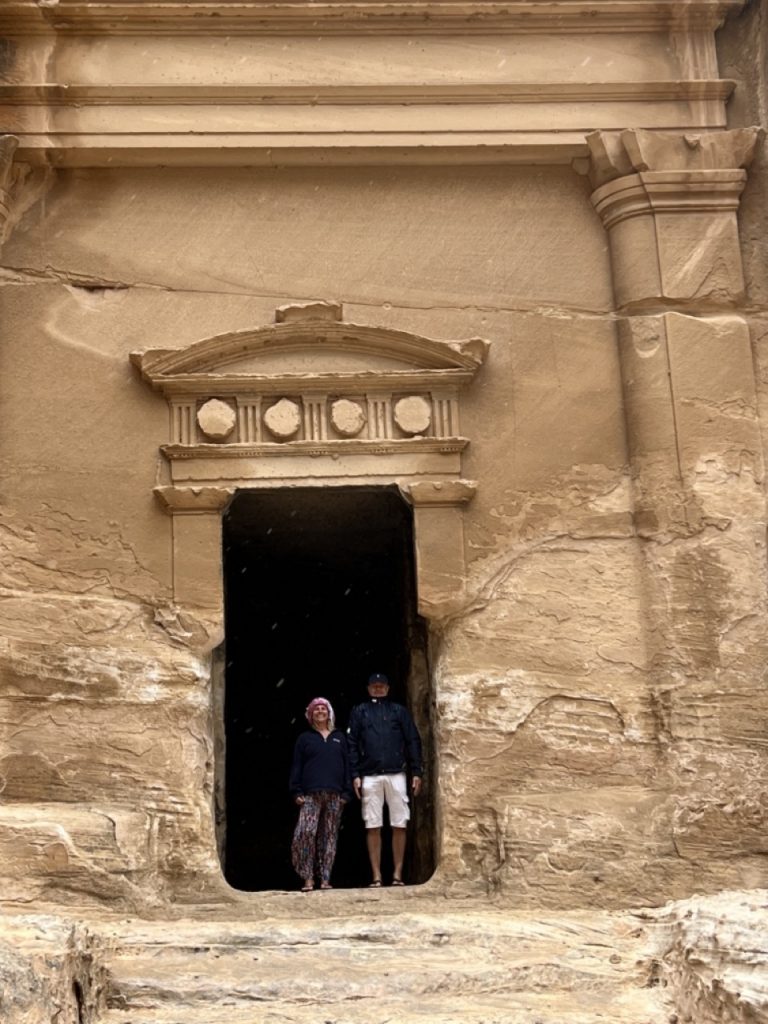
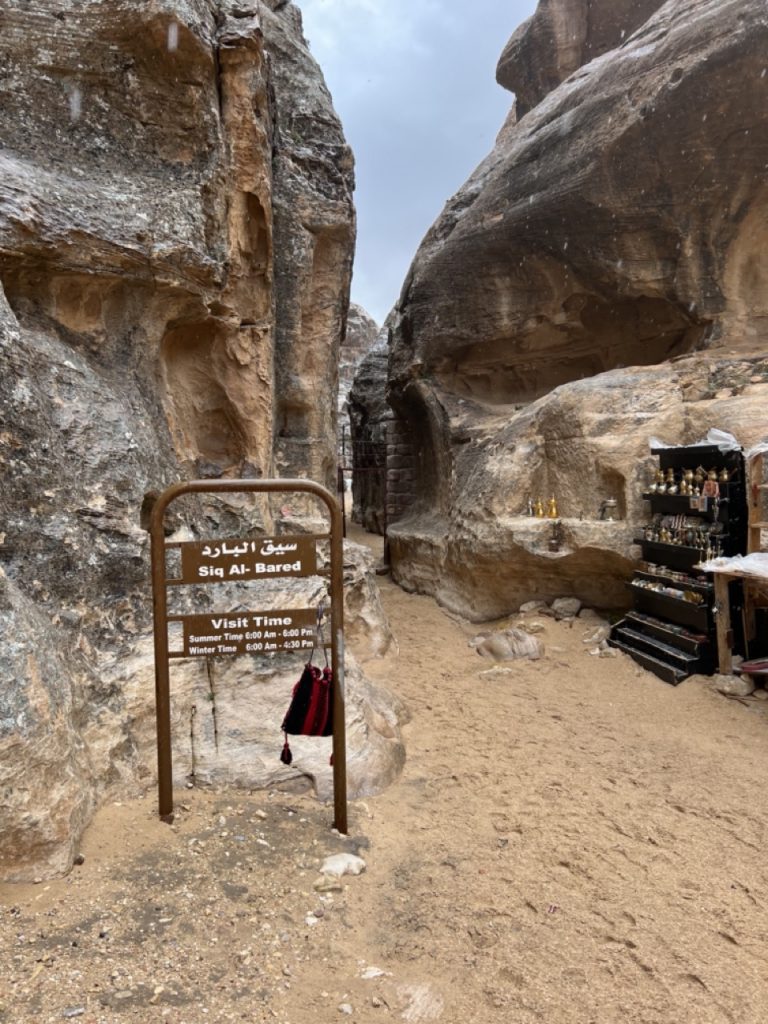
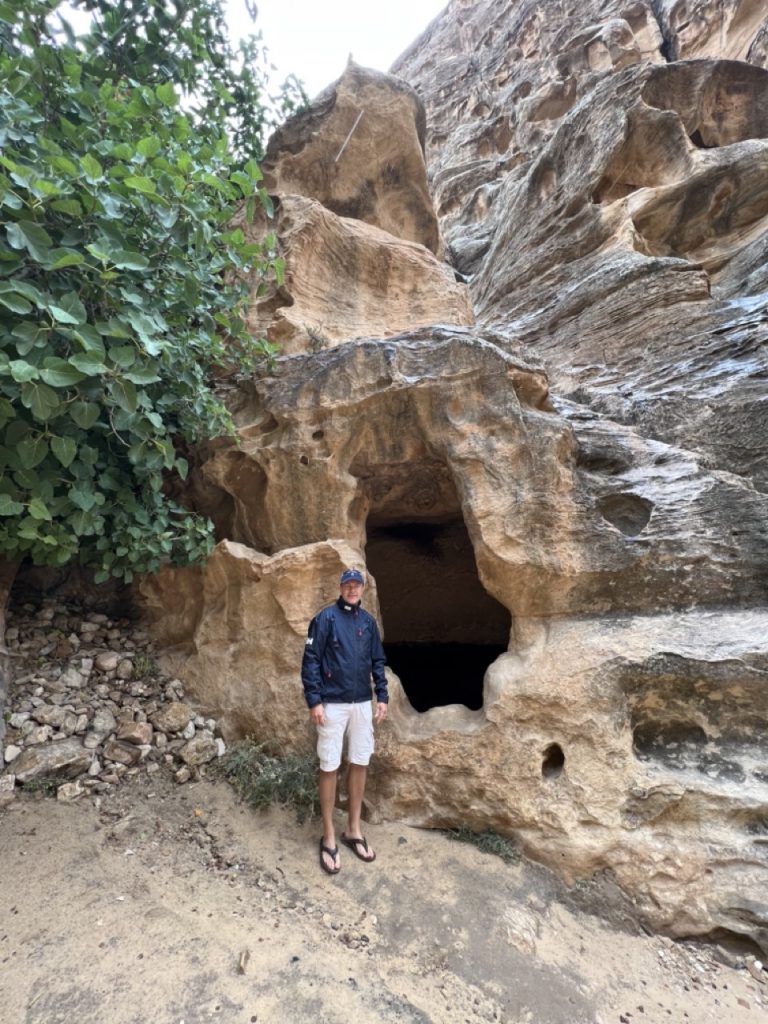
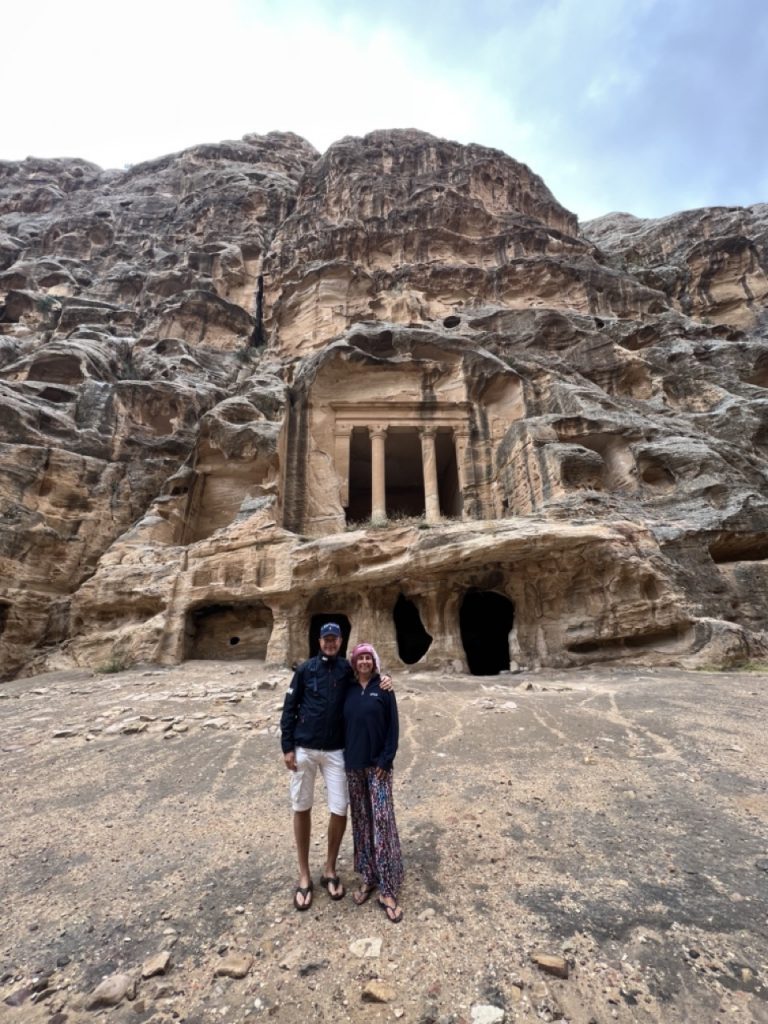
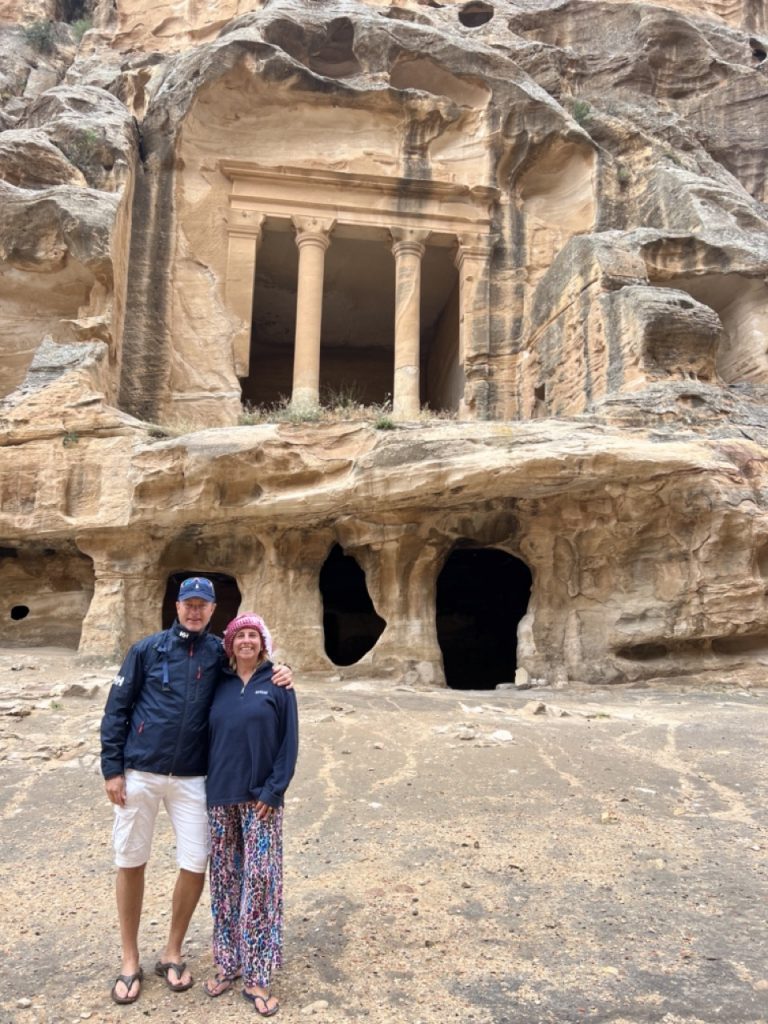
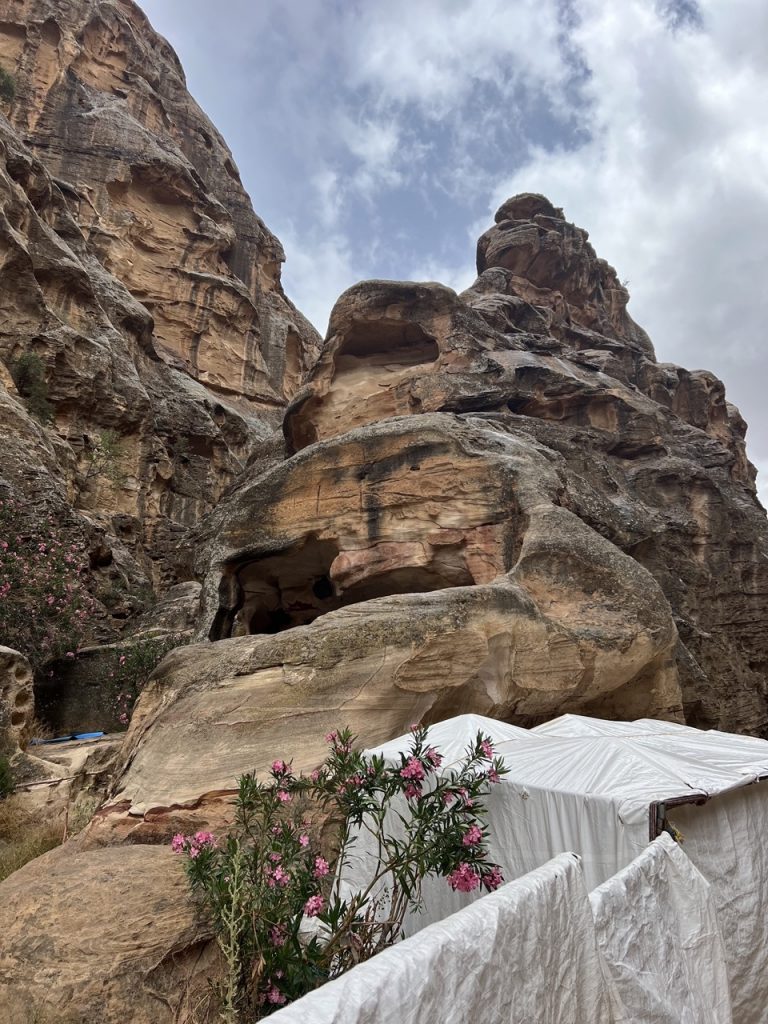
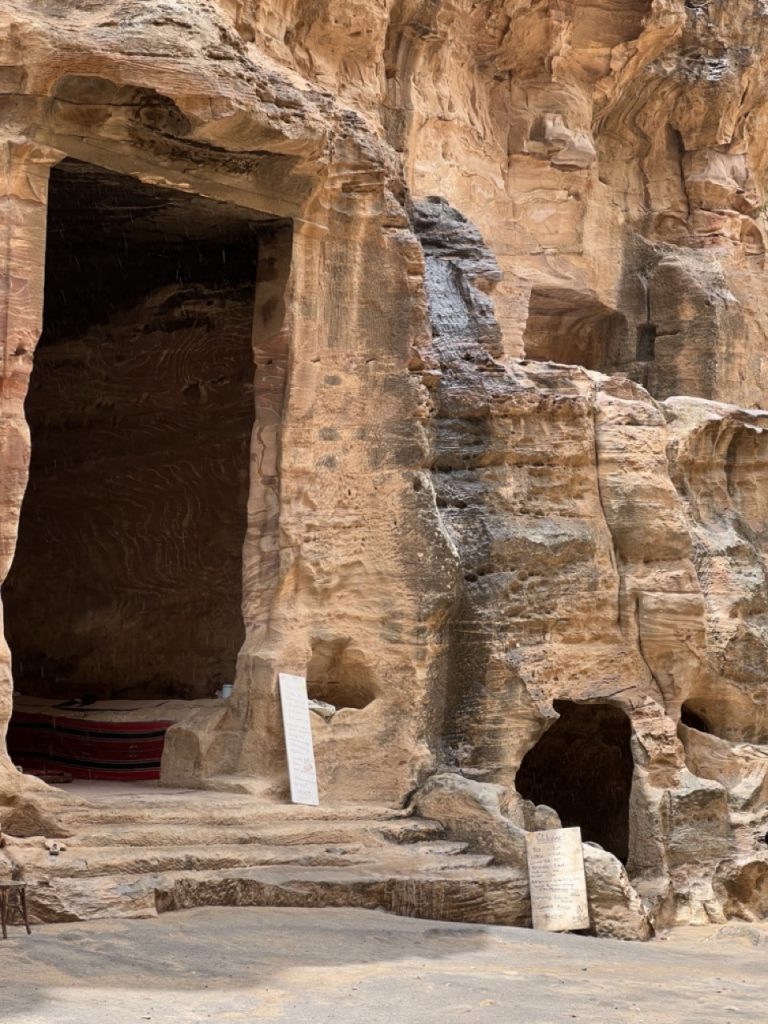
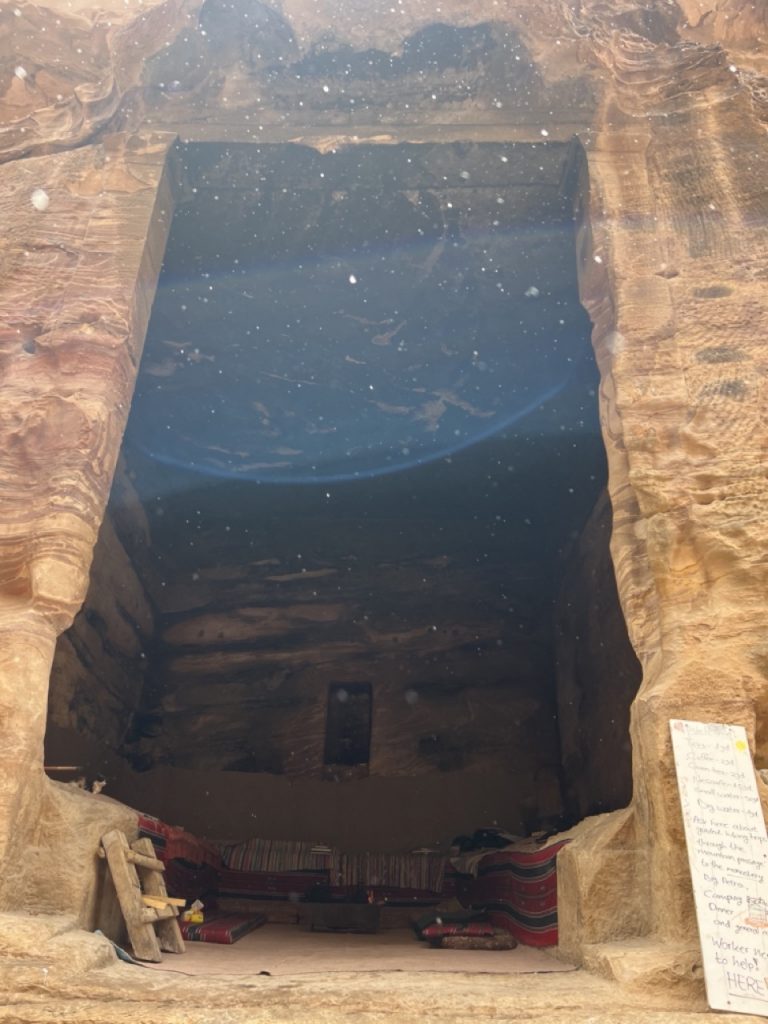
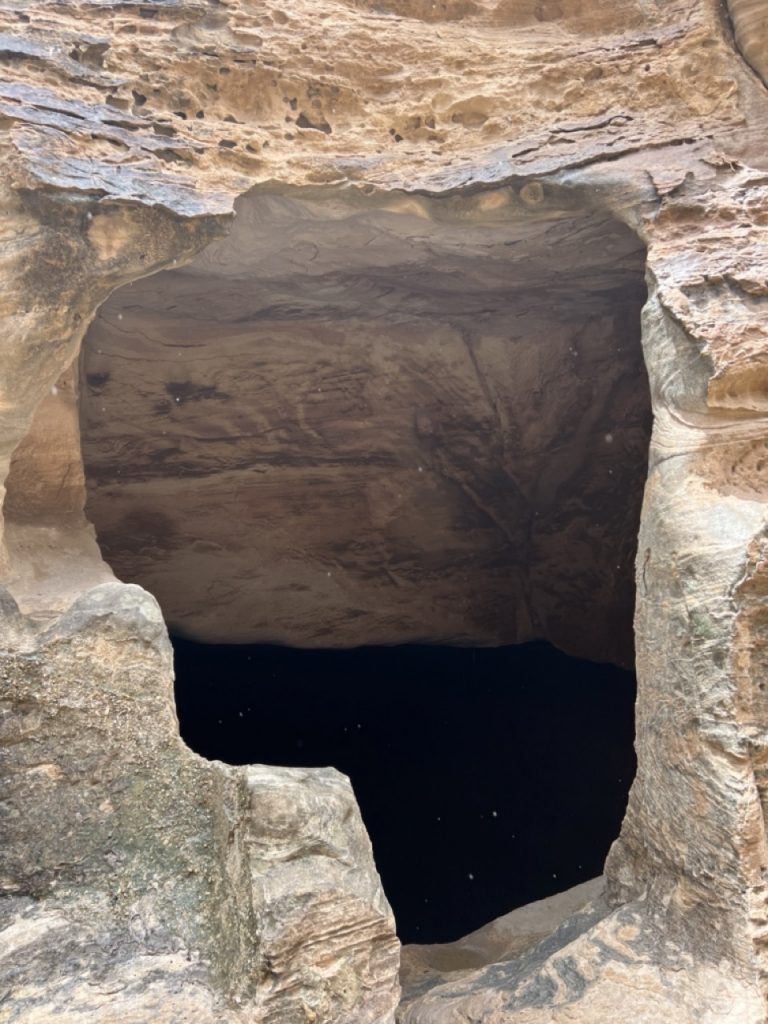
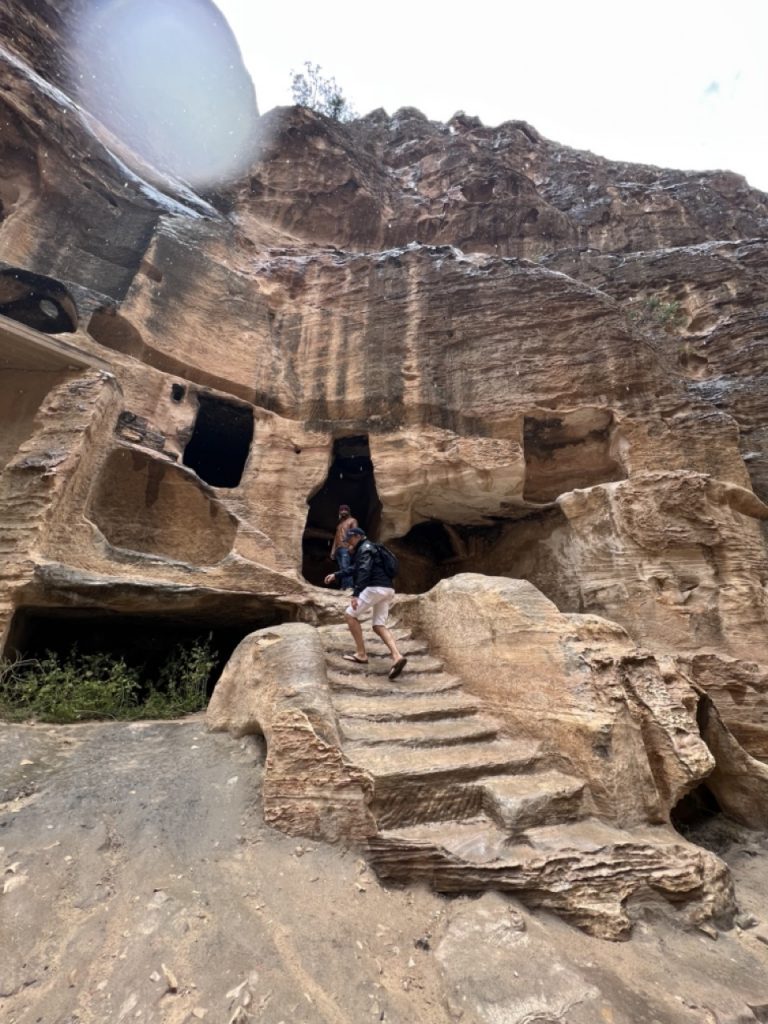
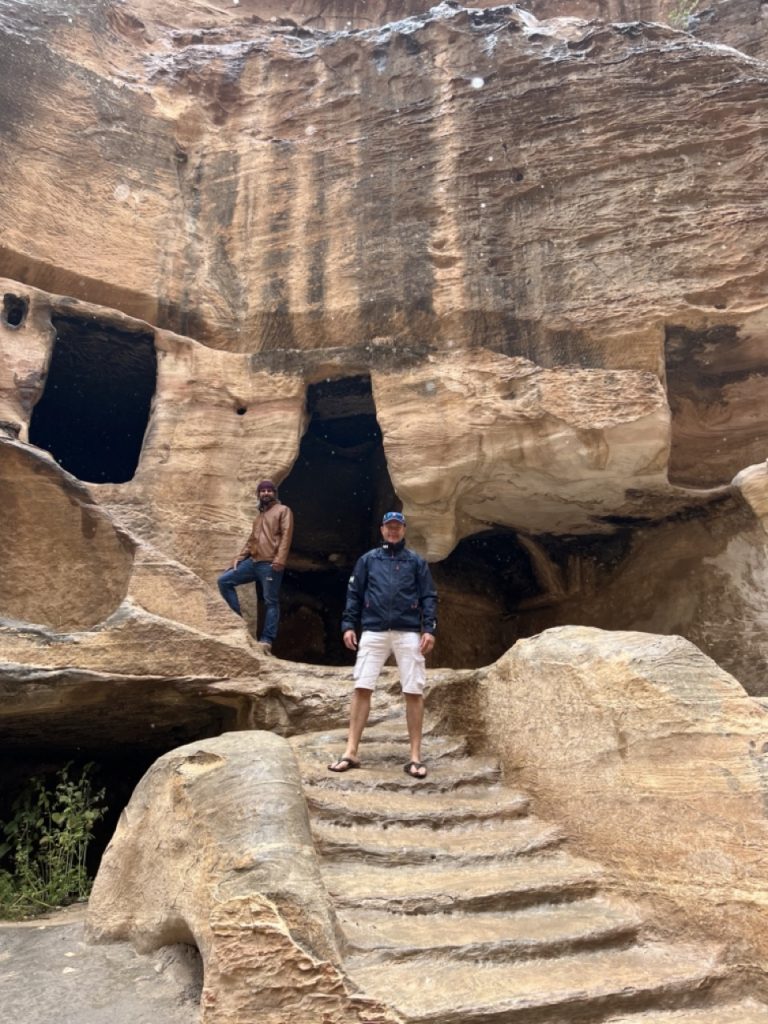
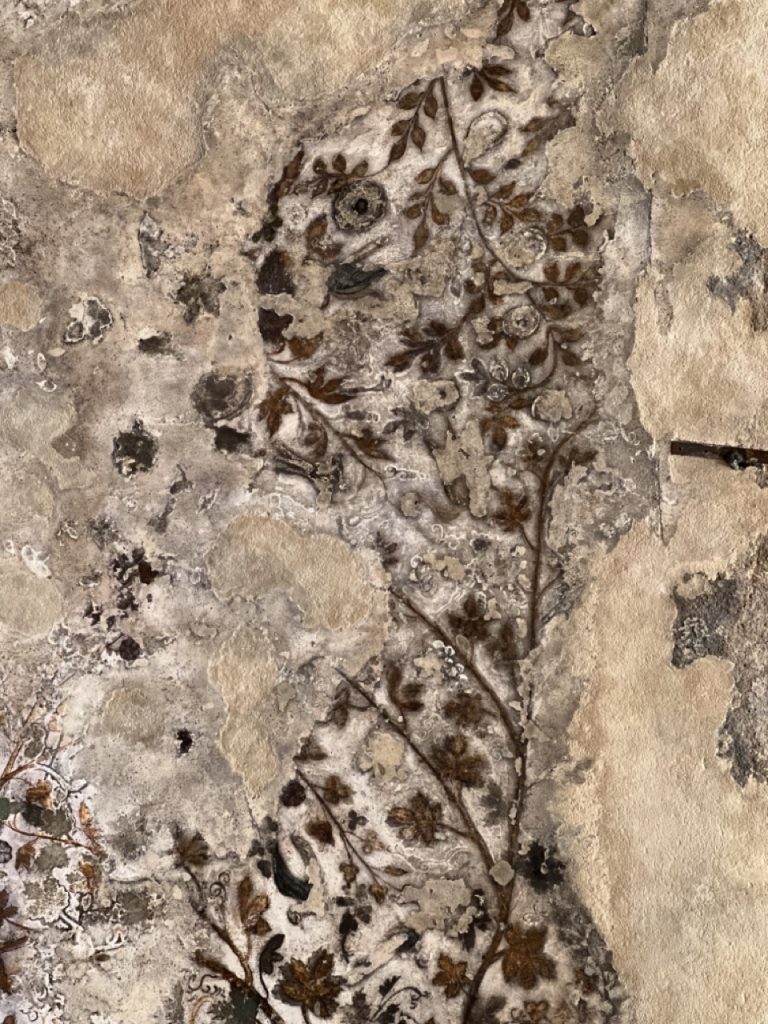
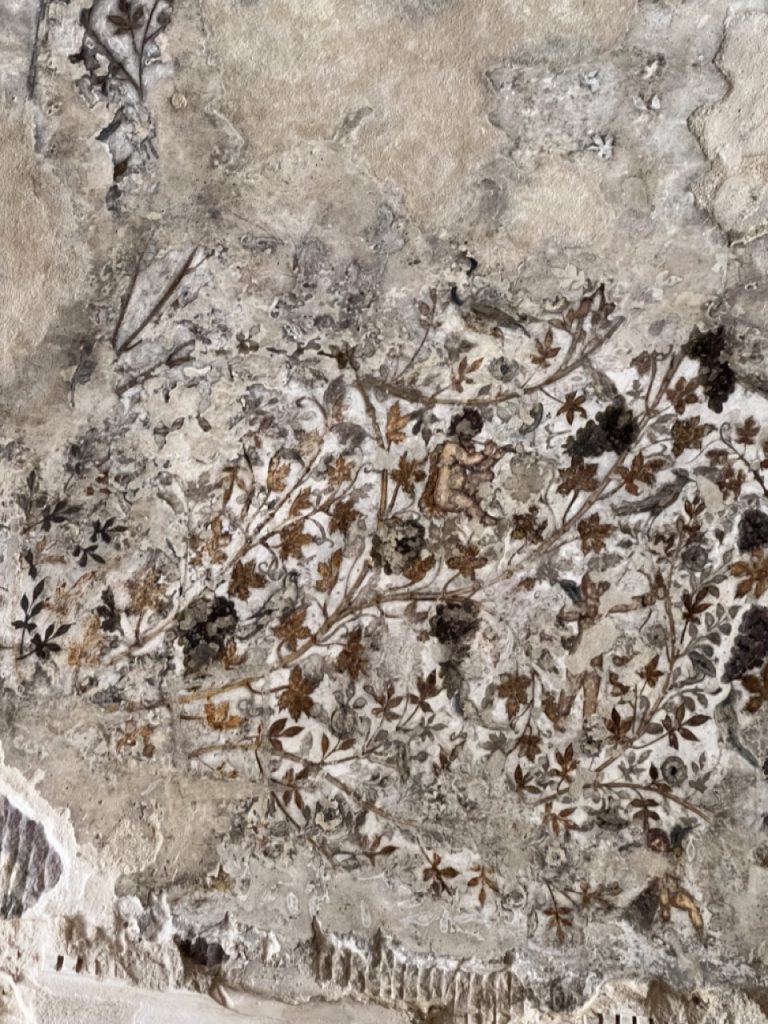
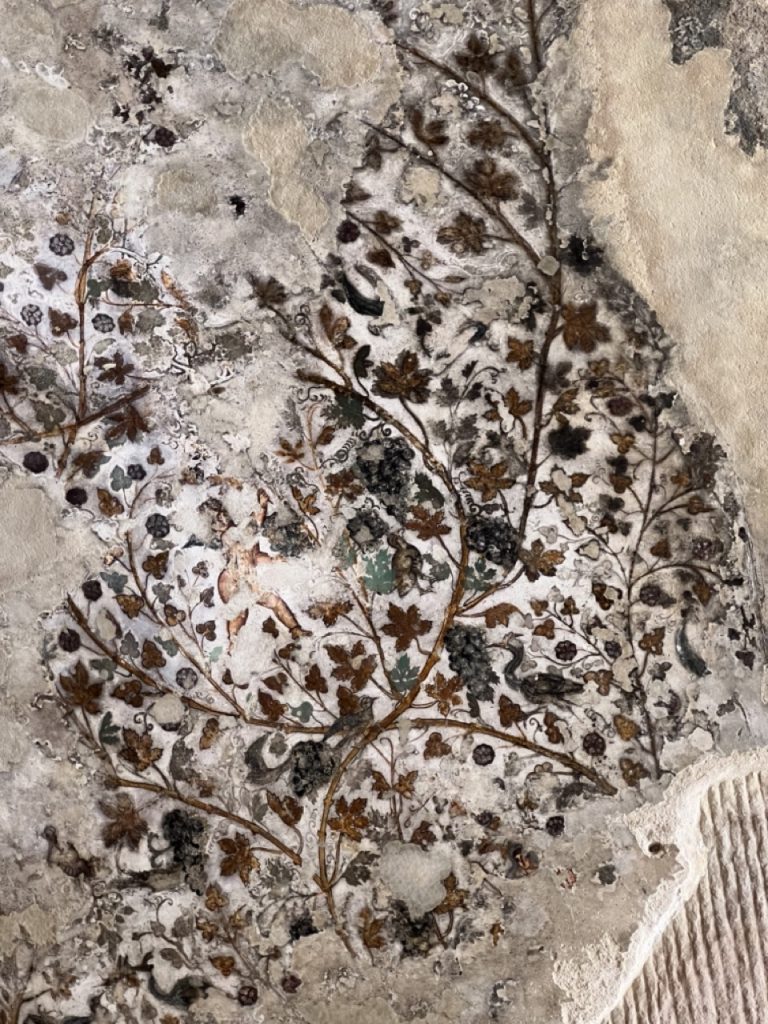
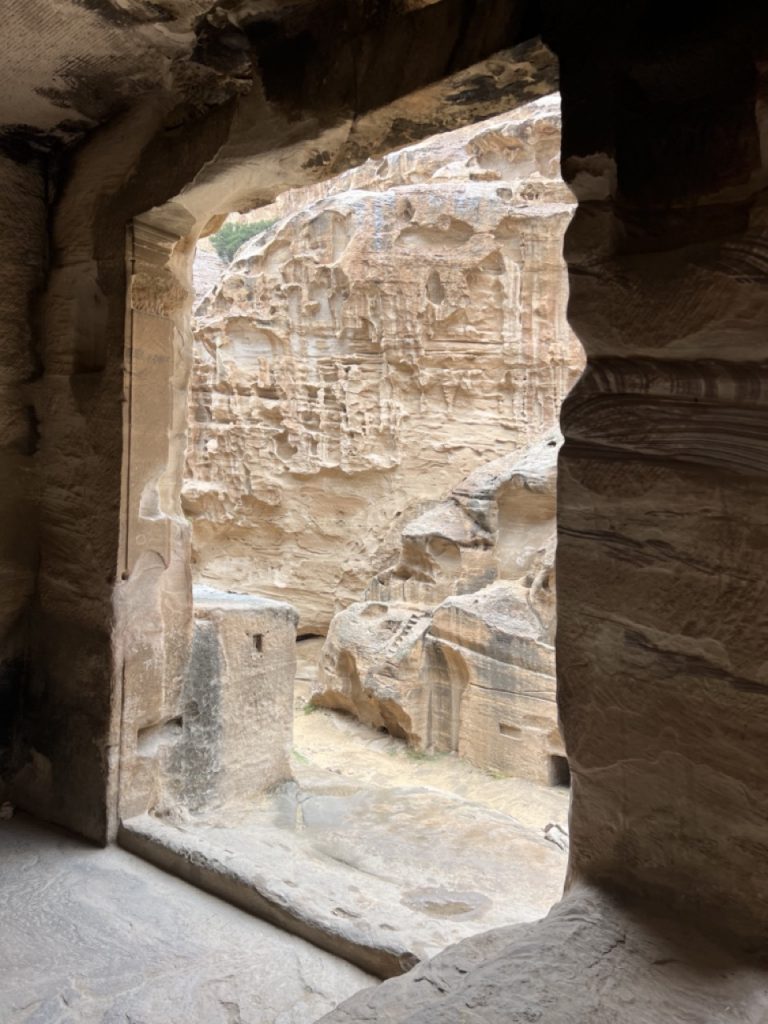
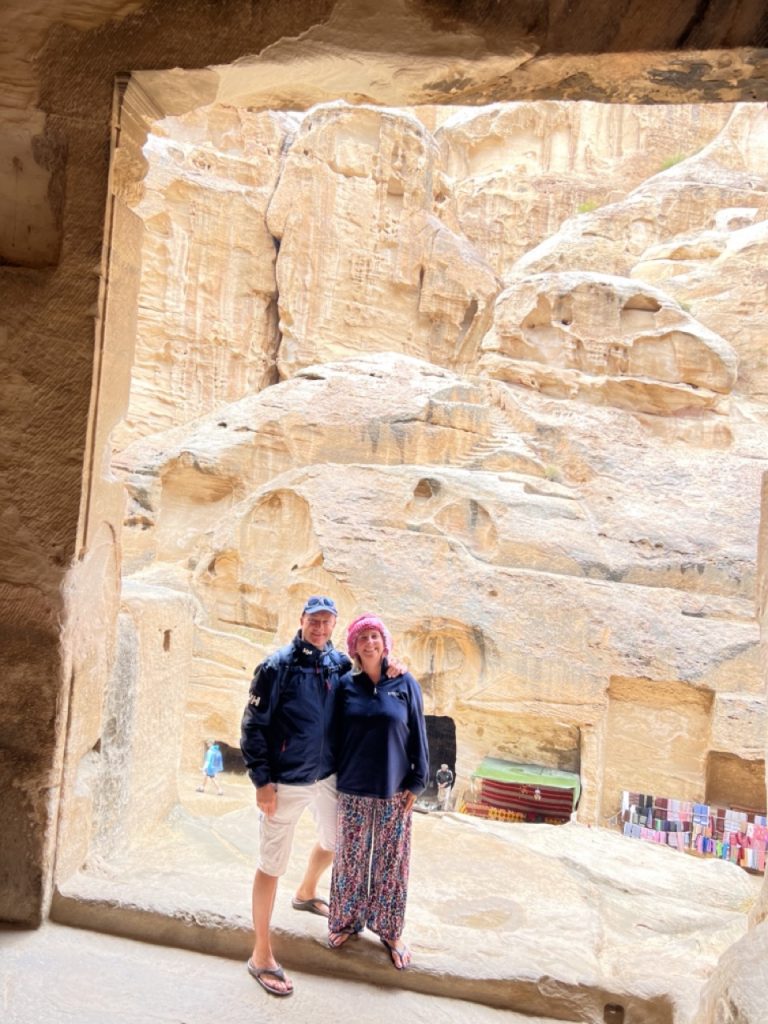

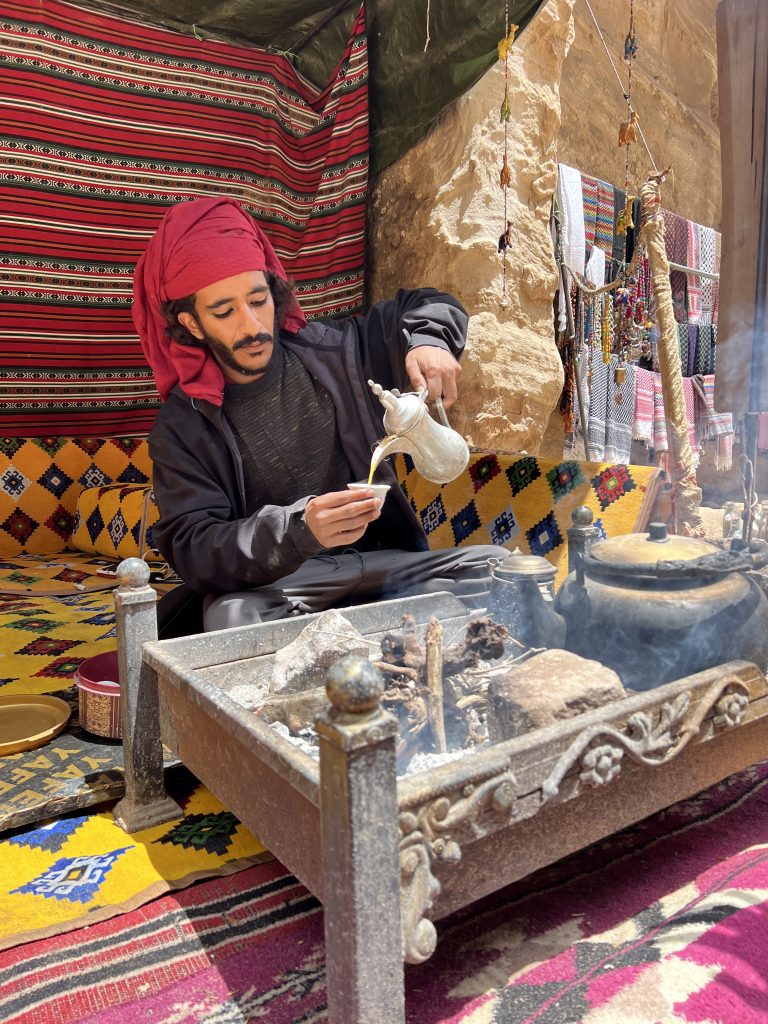
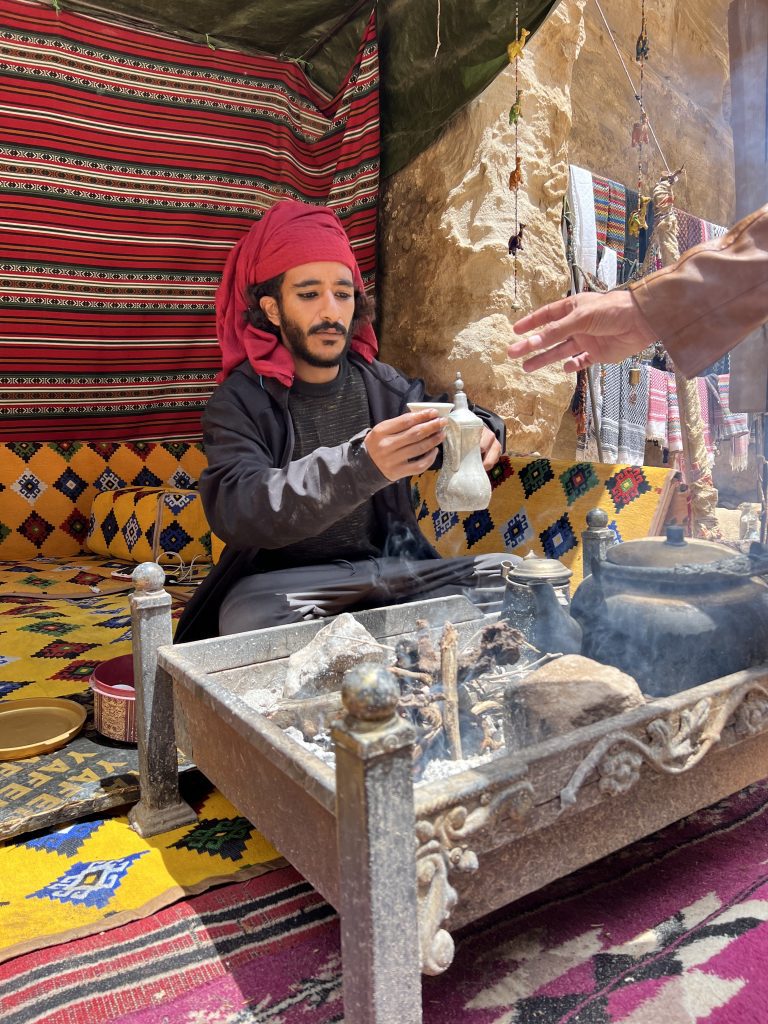
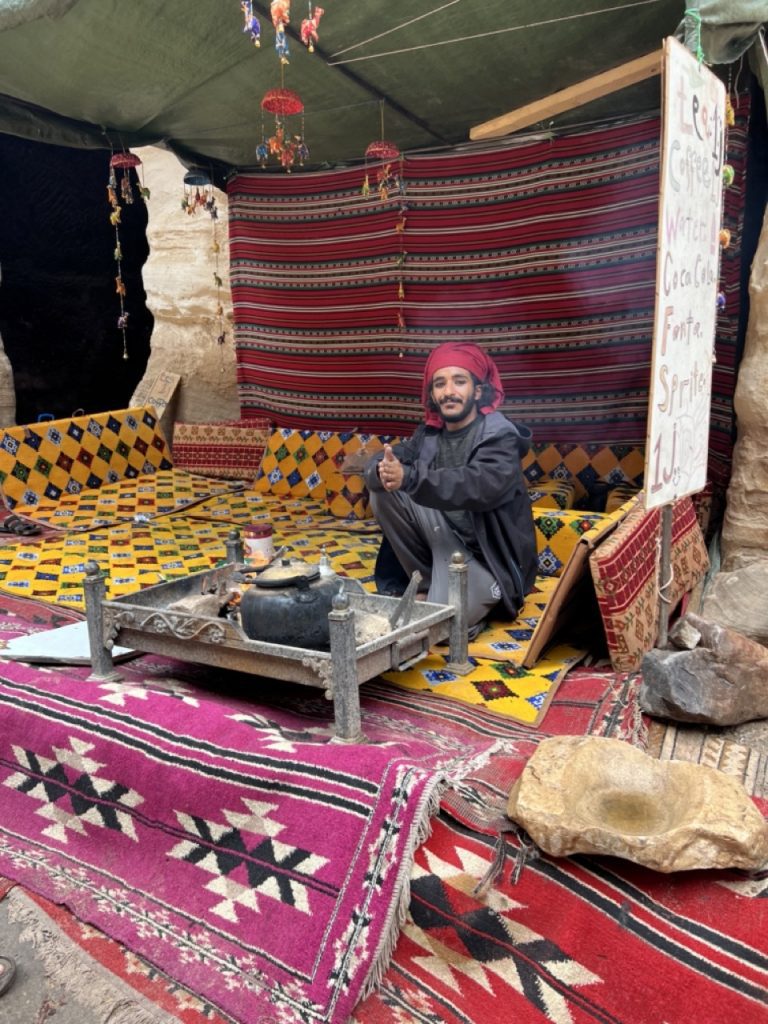
We were taught the correct manners to accept a cup of coffee from a bedouin -if you have had enough you shake your little cup. We thanked Ahmed for his excellent and knowledgeable guiding and headed off with Abdullah for a delicious traditional lunch: Upside down Makloubeh which is layered chicken, potato, rice and vegetables and is served by turning the pot that it is cooked in upside down… and Sajia lamb – it was good but the lamb was a bit salty. The highlight was the Kanufa desert – It consists of melted cheese topped with a pastry or shredded wheat topping, then soaked in sweet syrup – delicious!
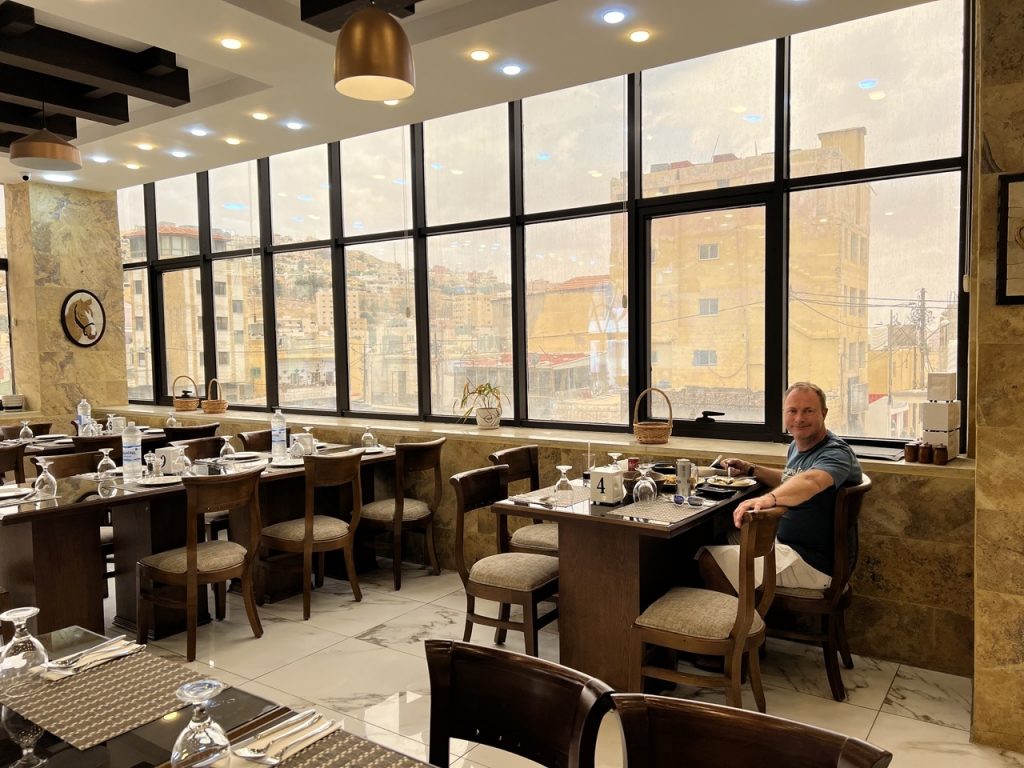
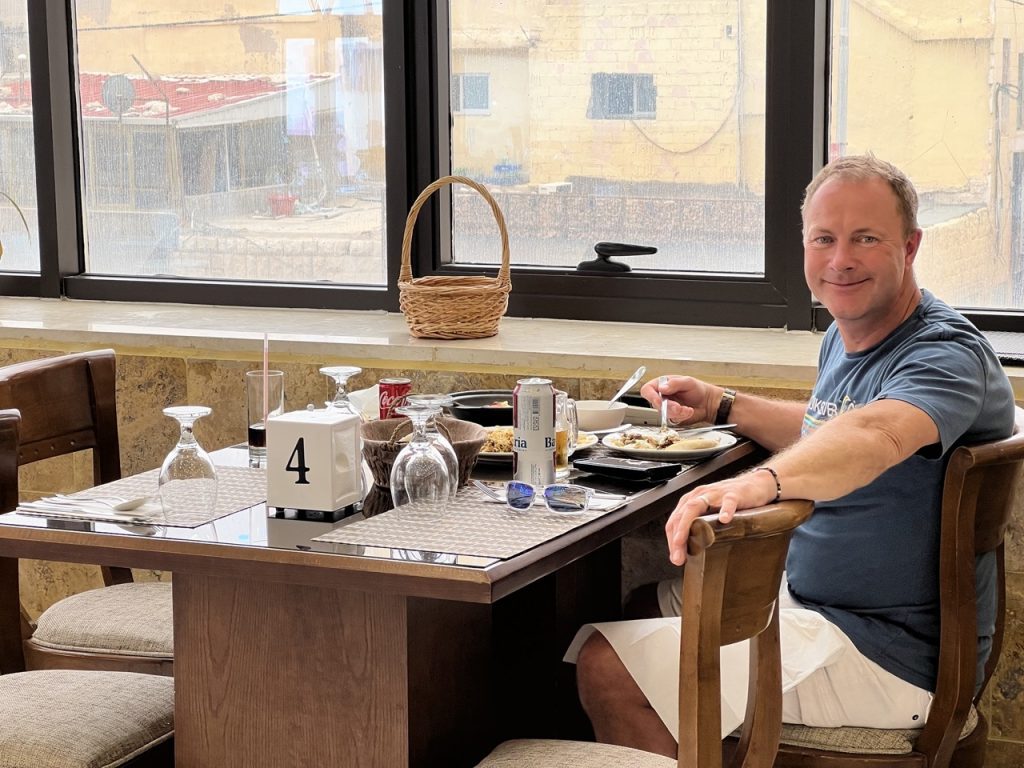
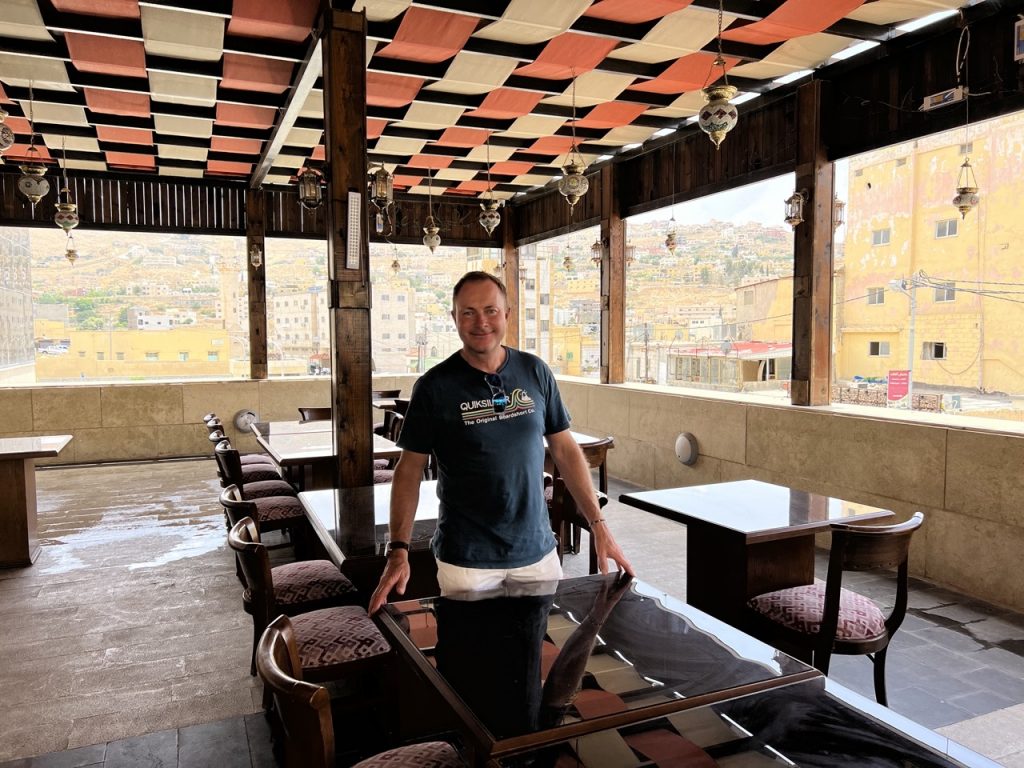
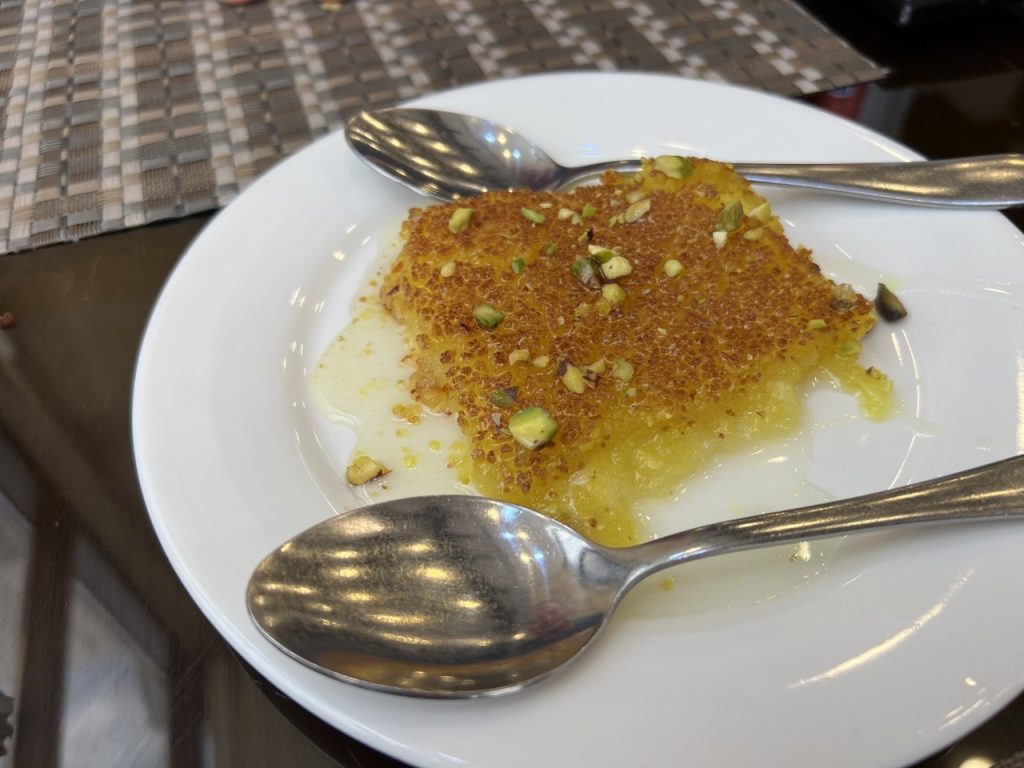
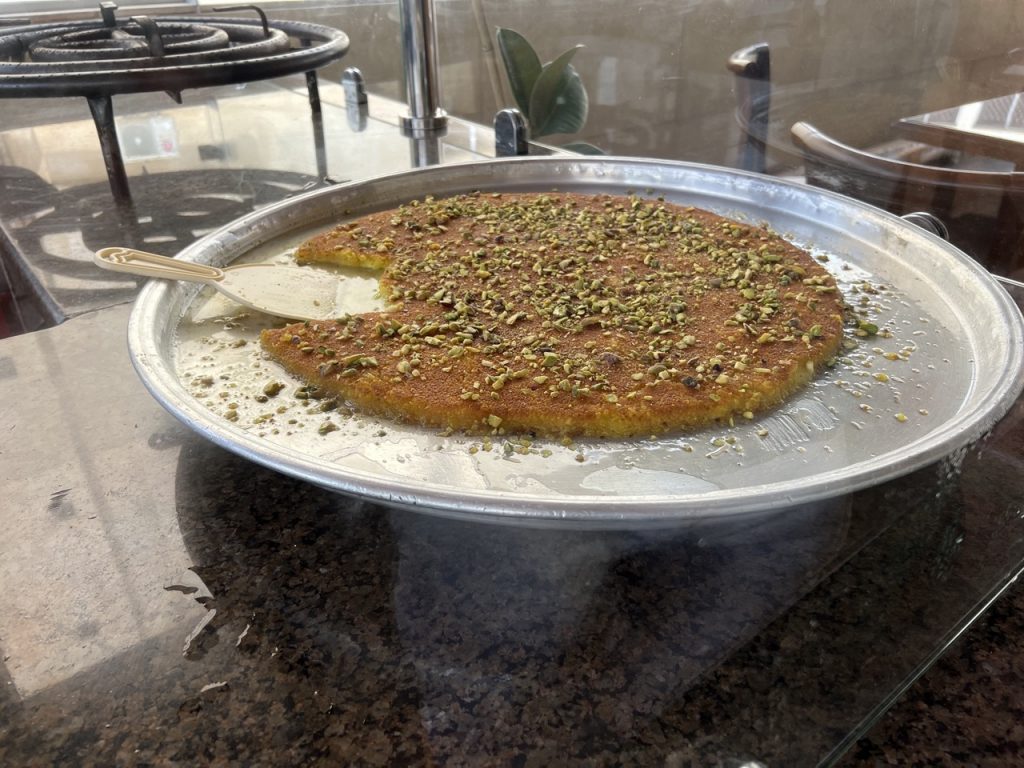
We said farewell to Petra after the obligatory Instagram photos!
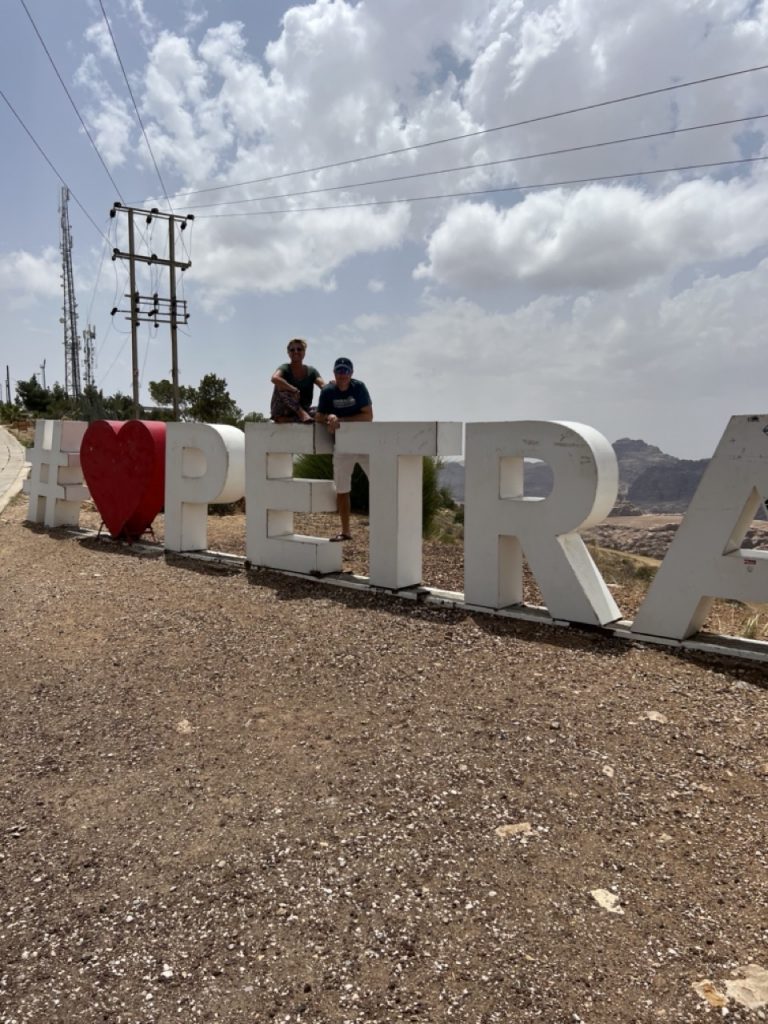
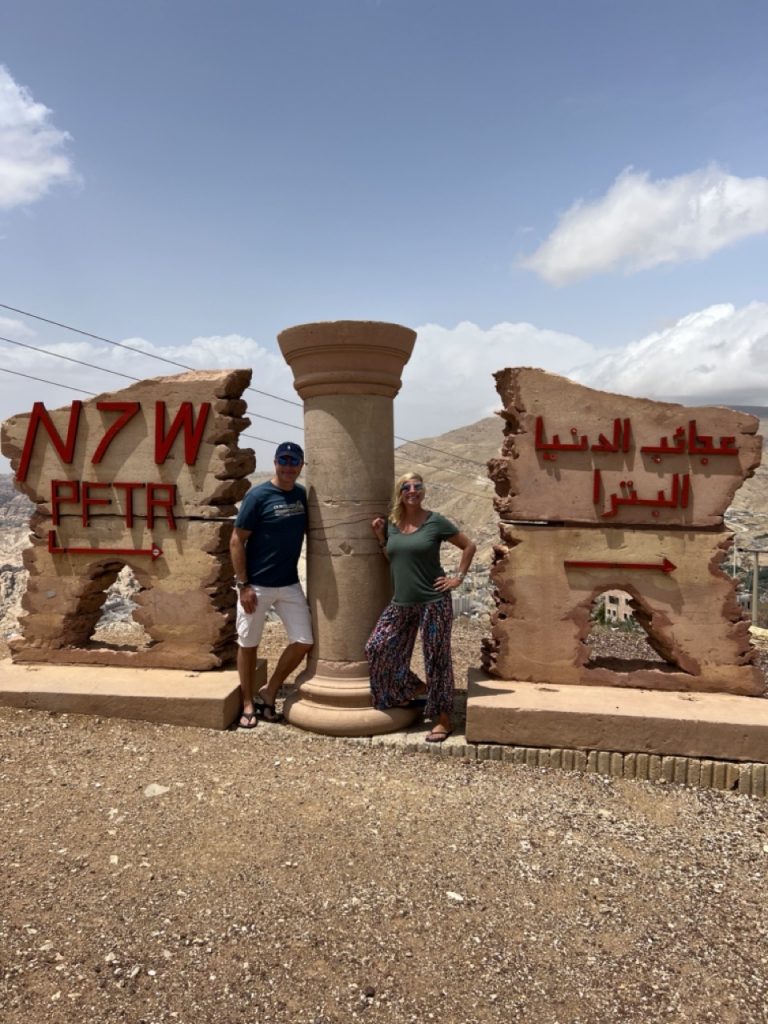
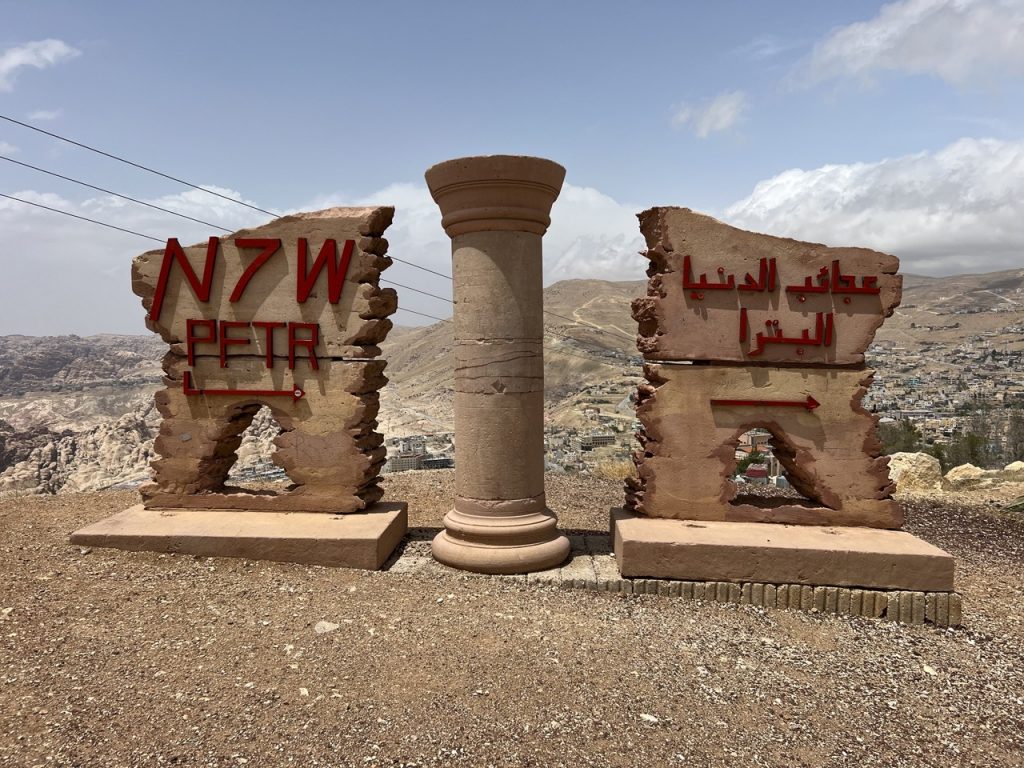
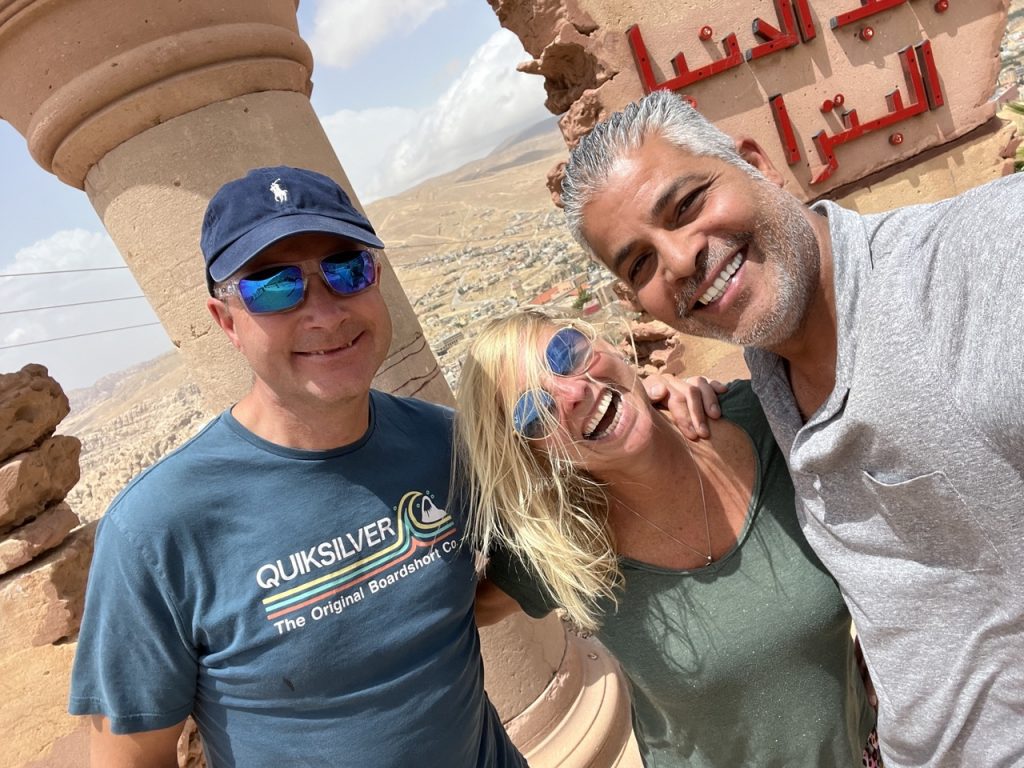
Go to: Jordan

